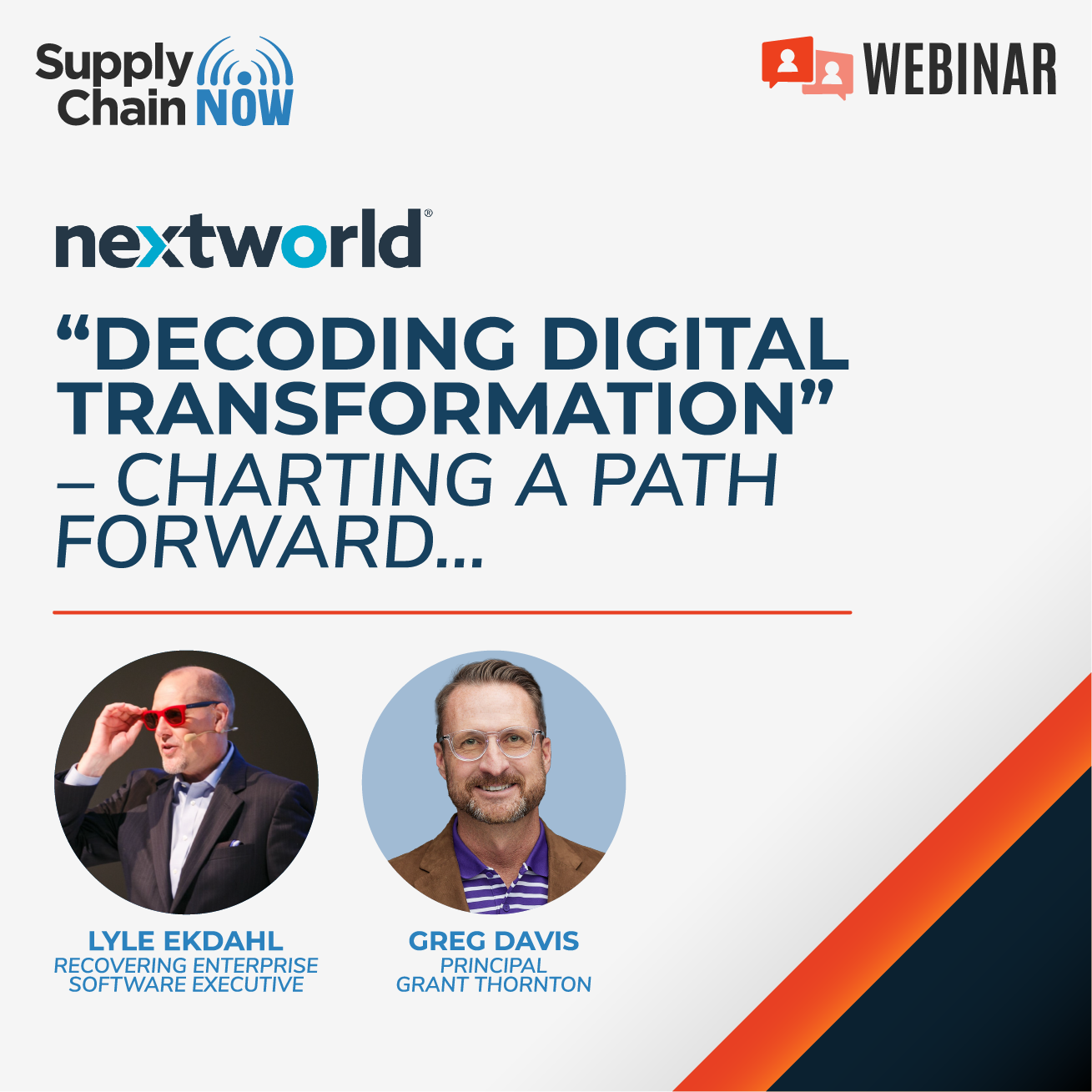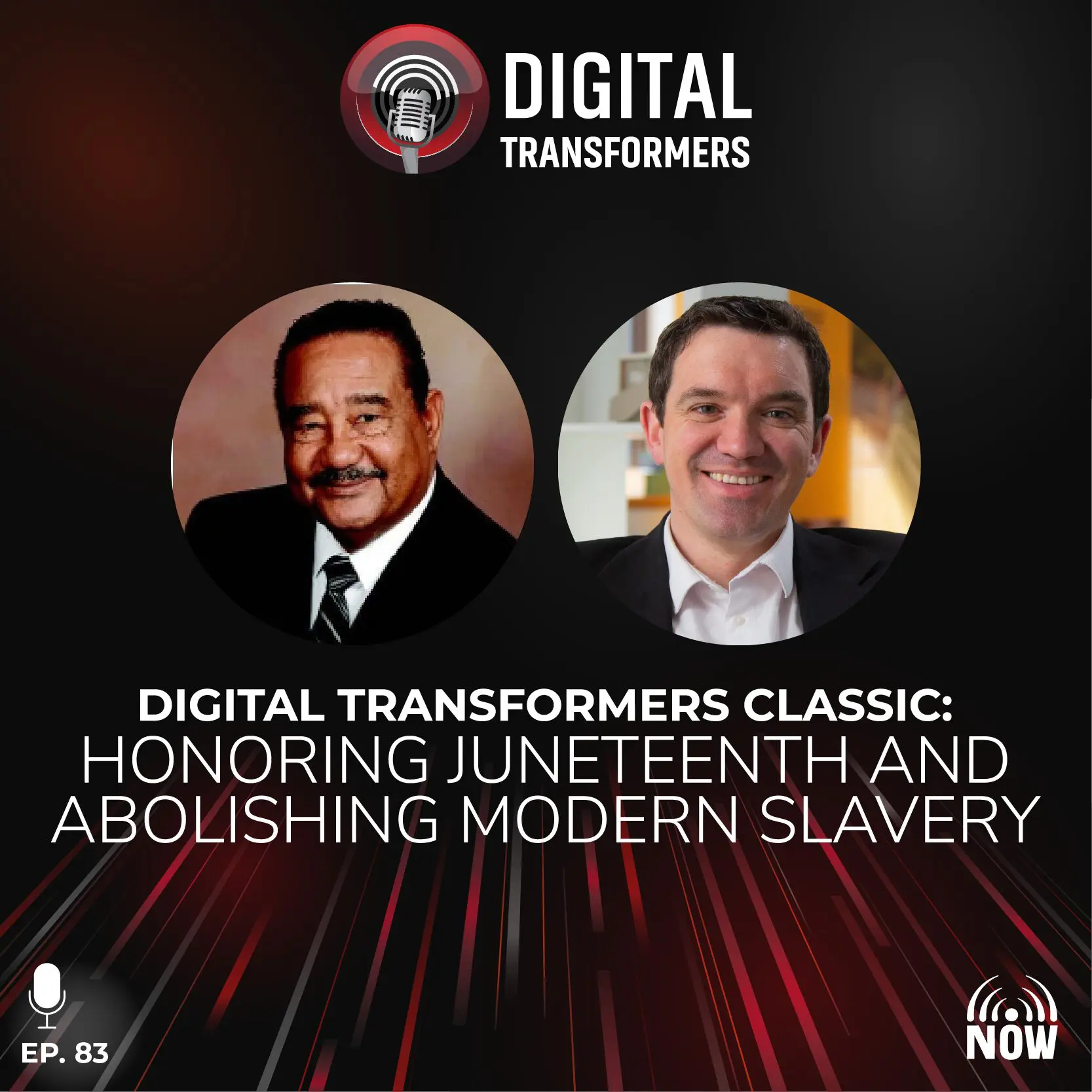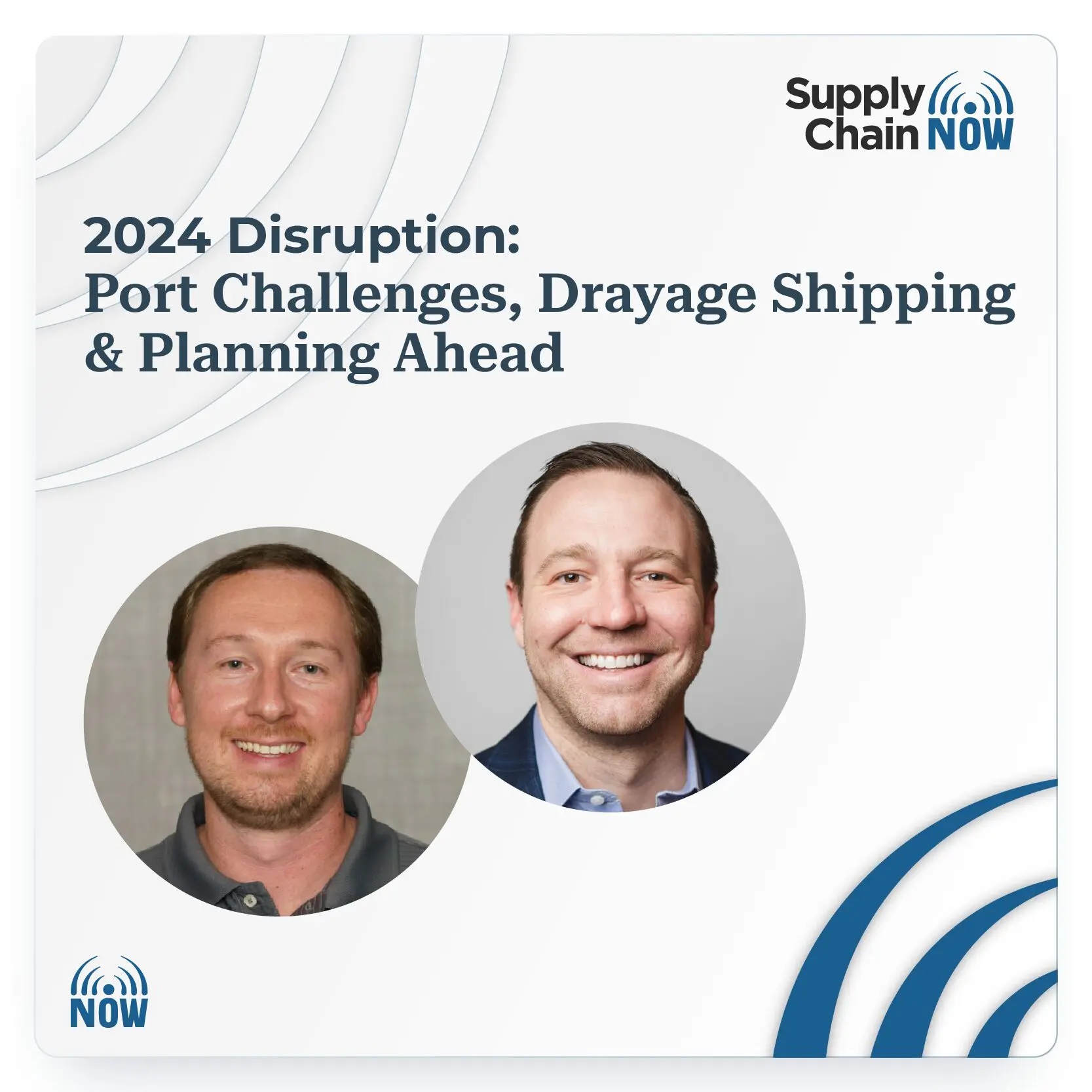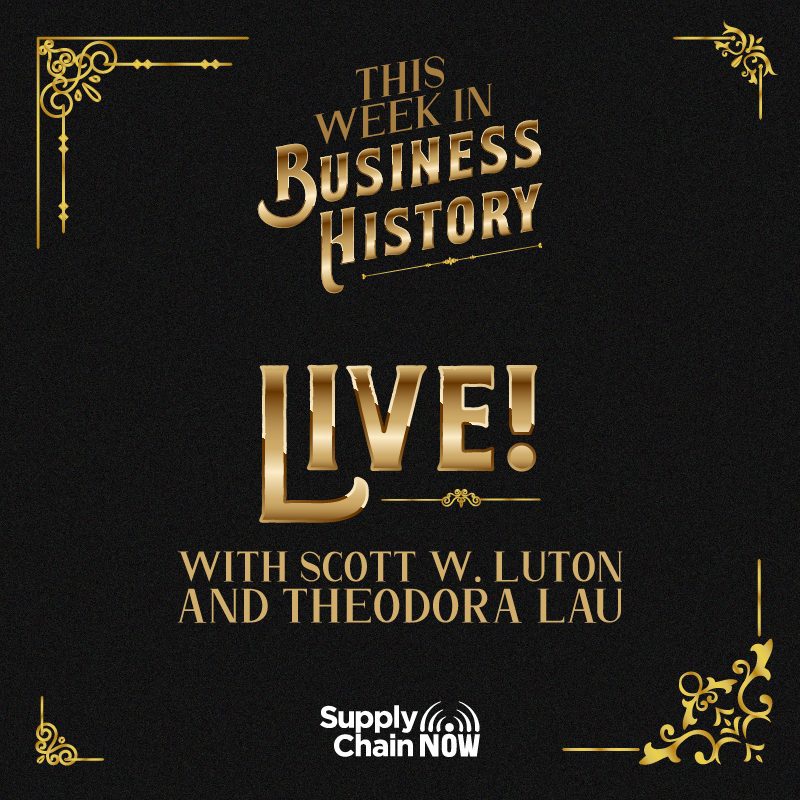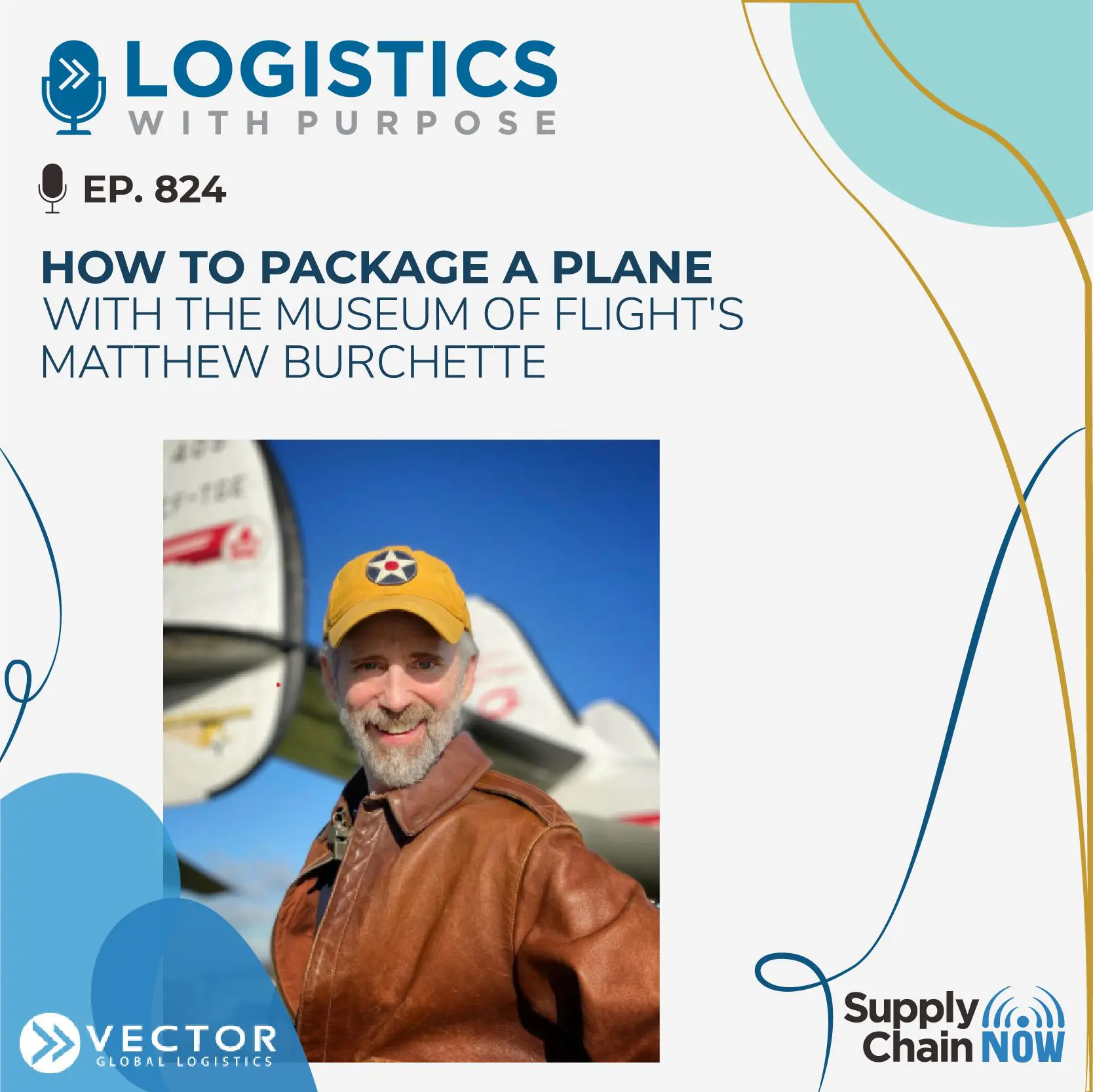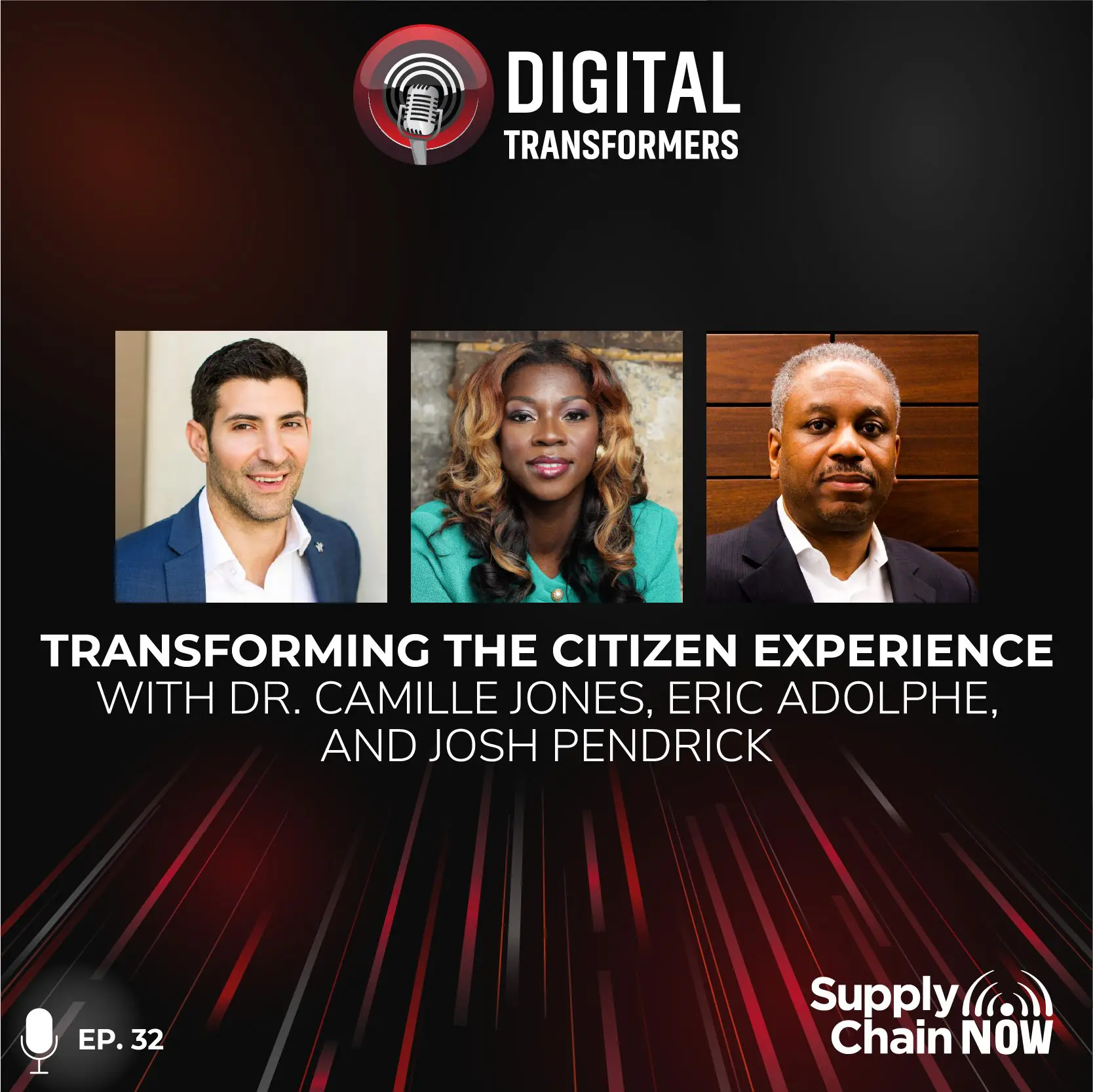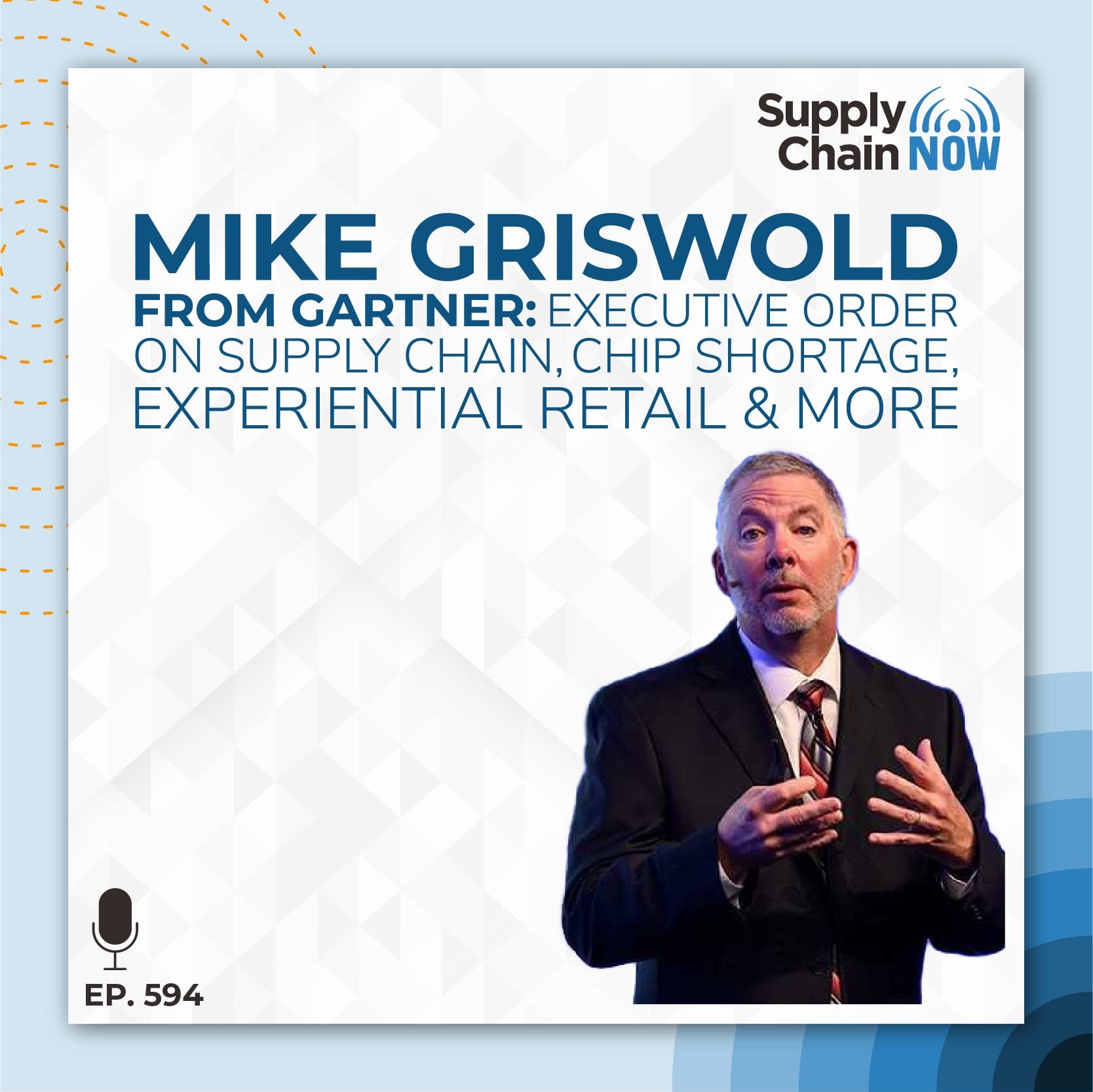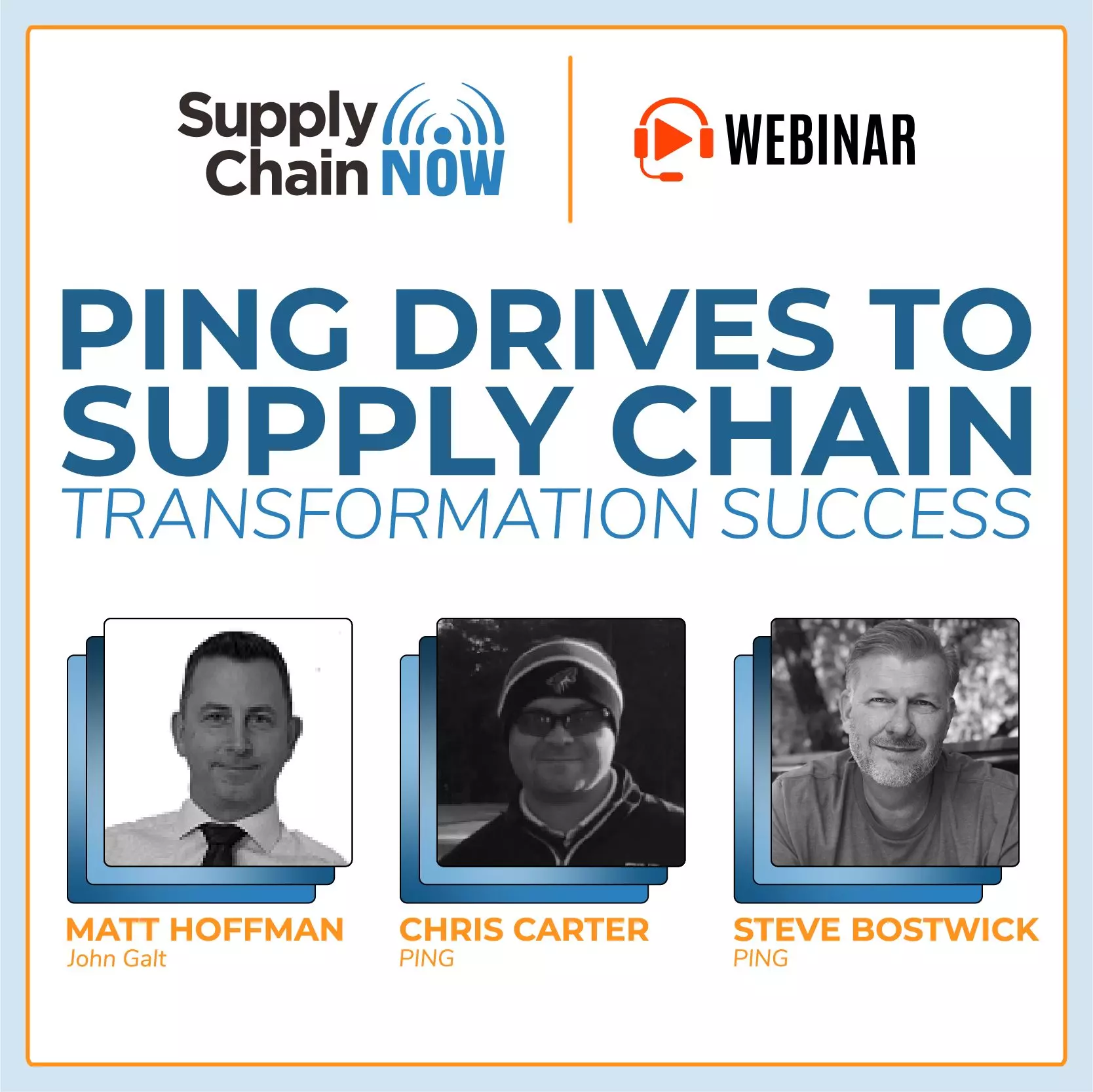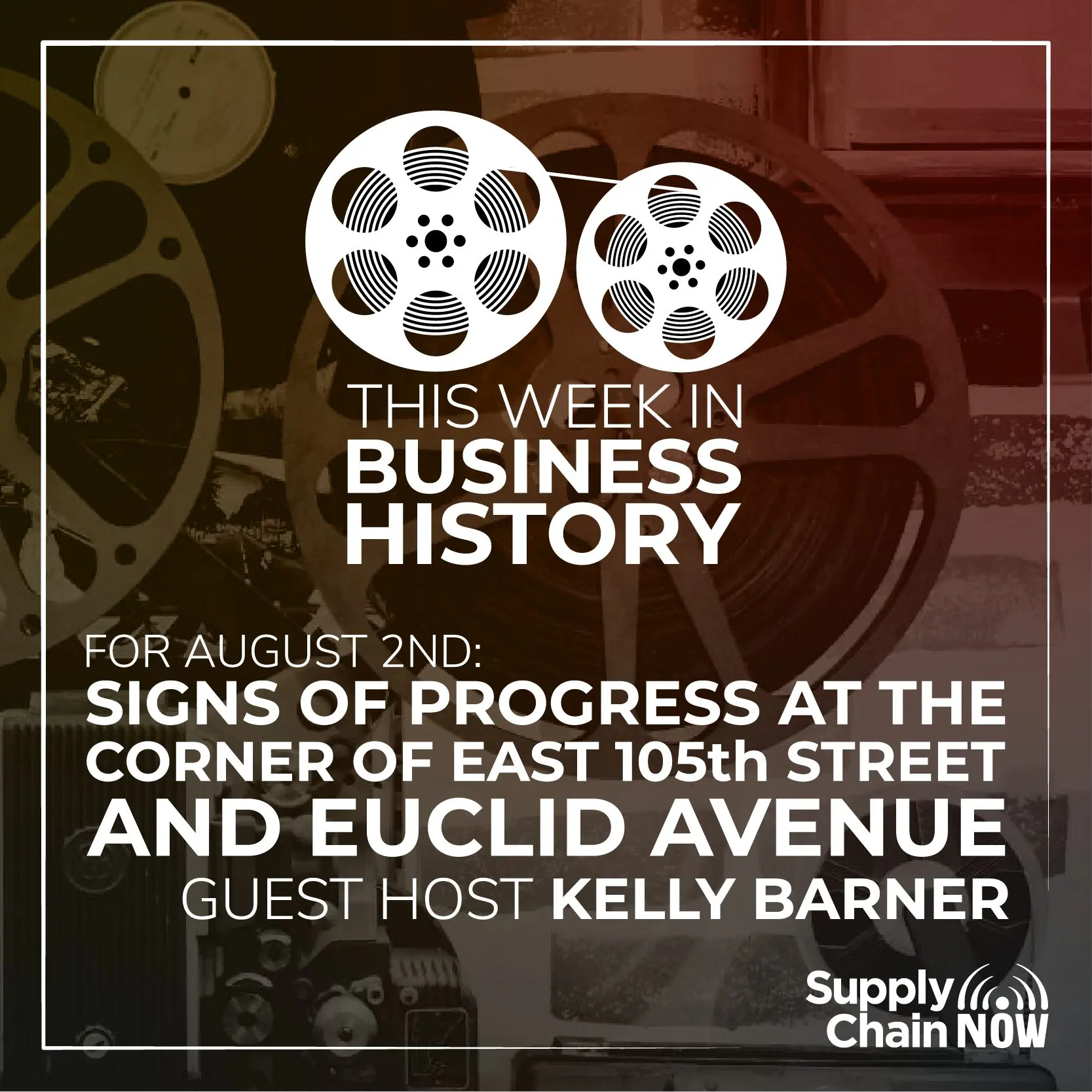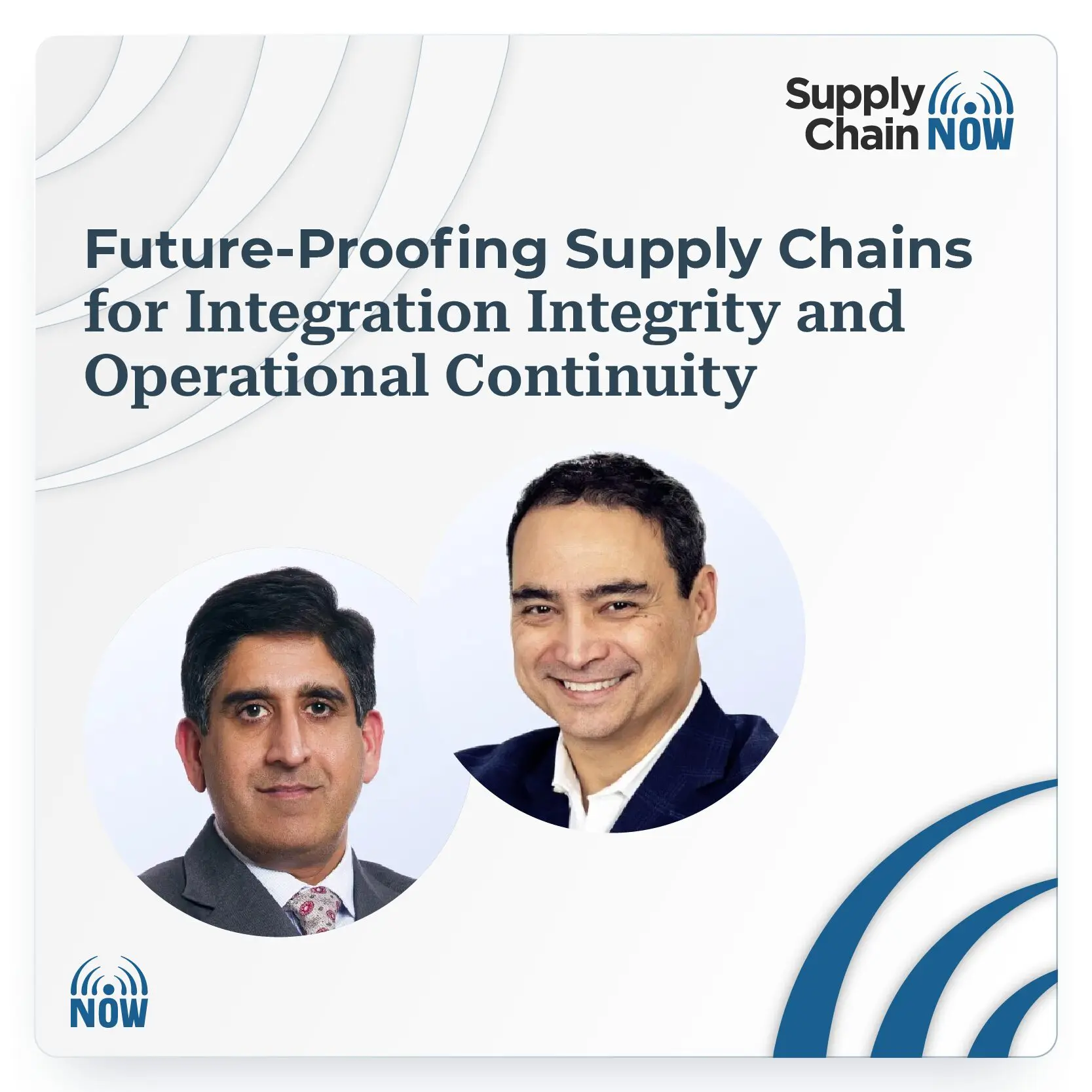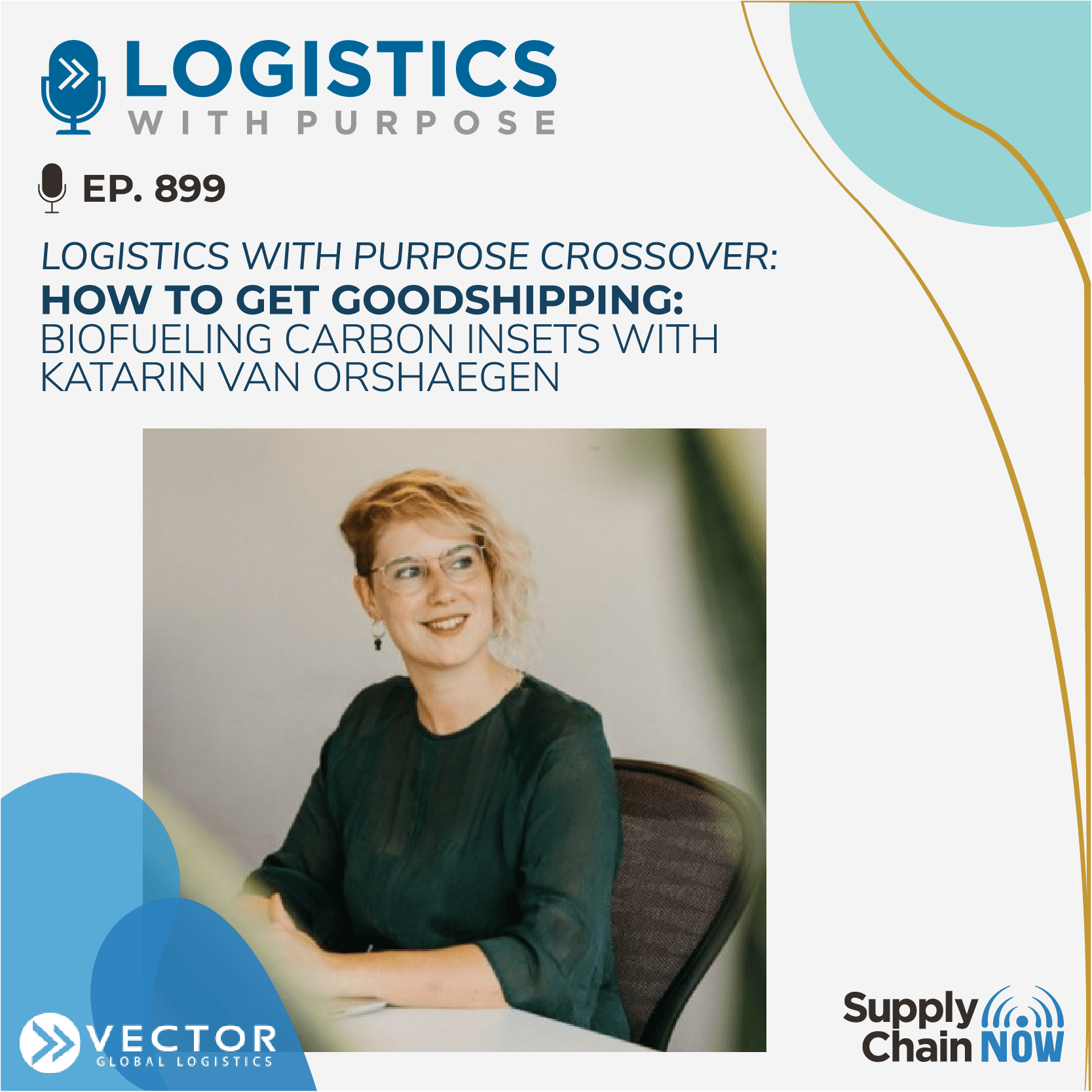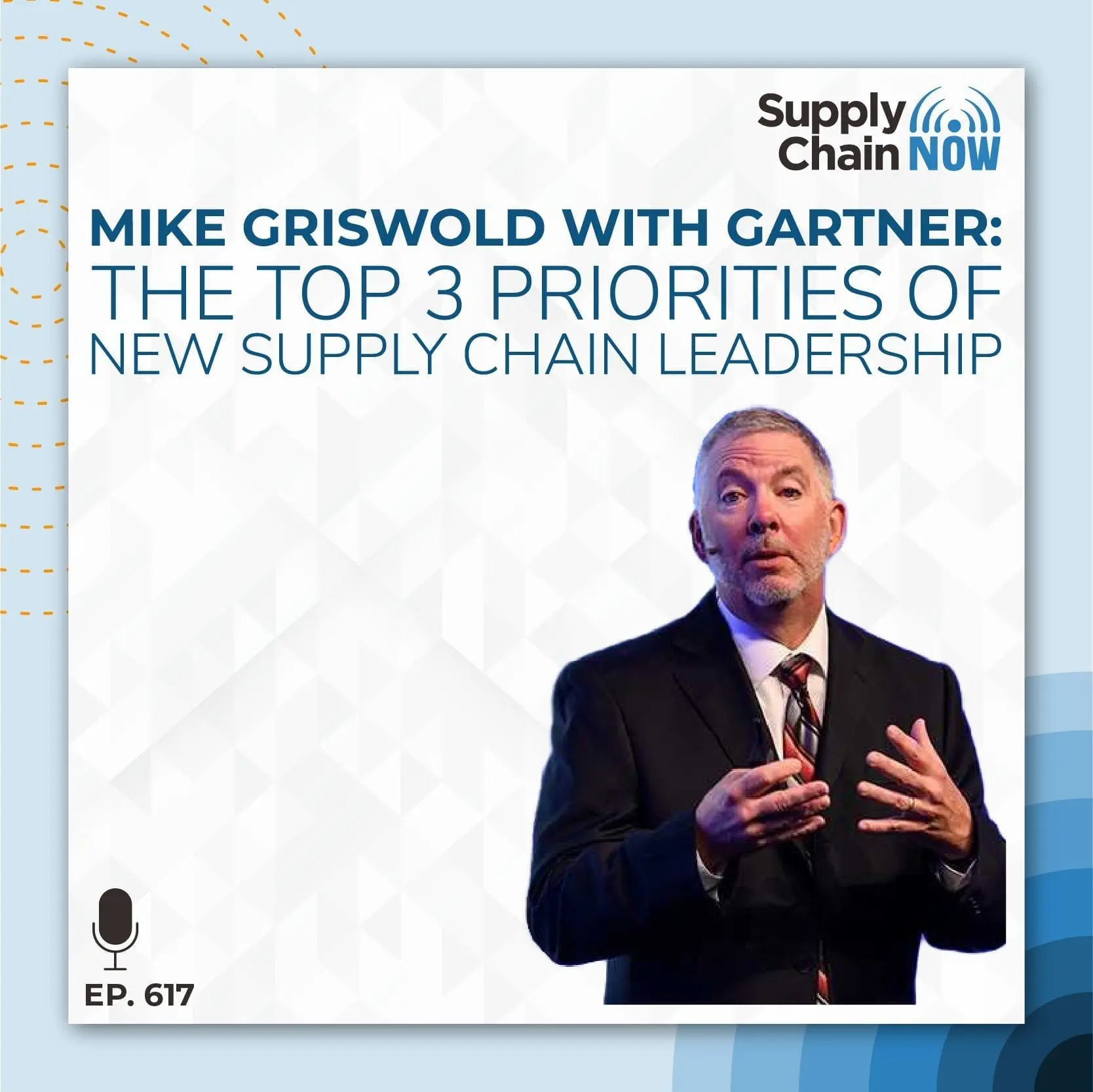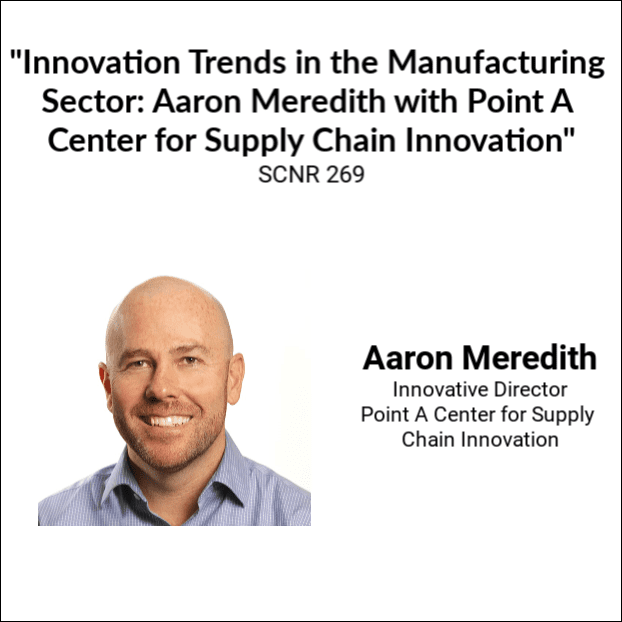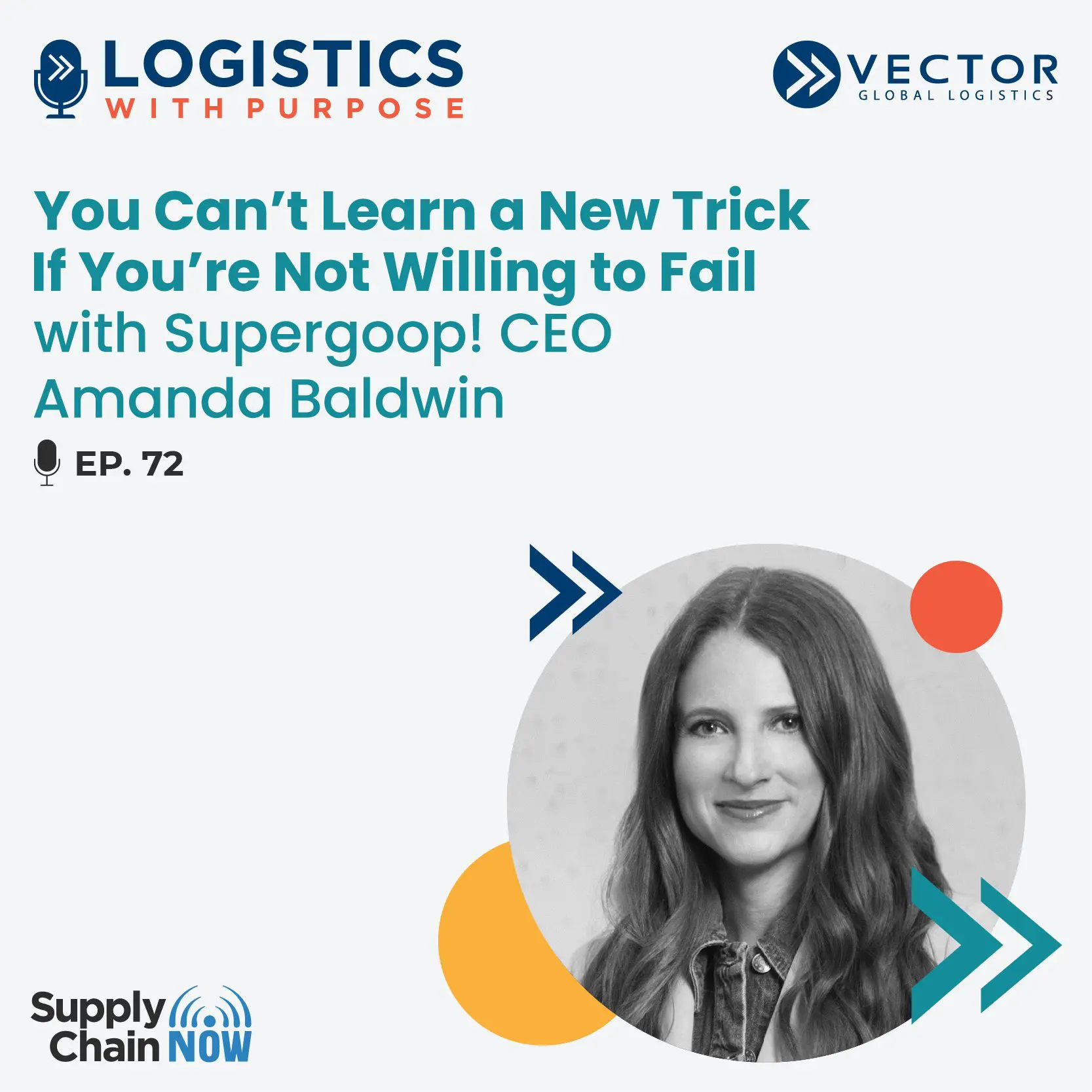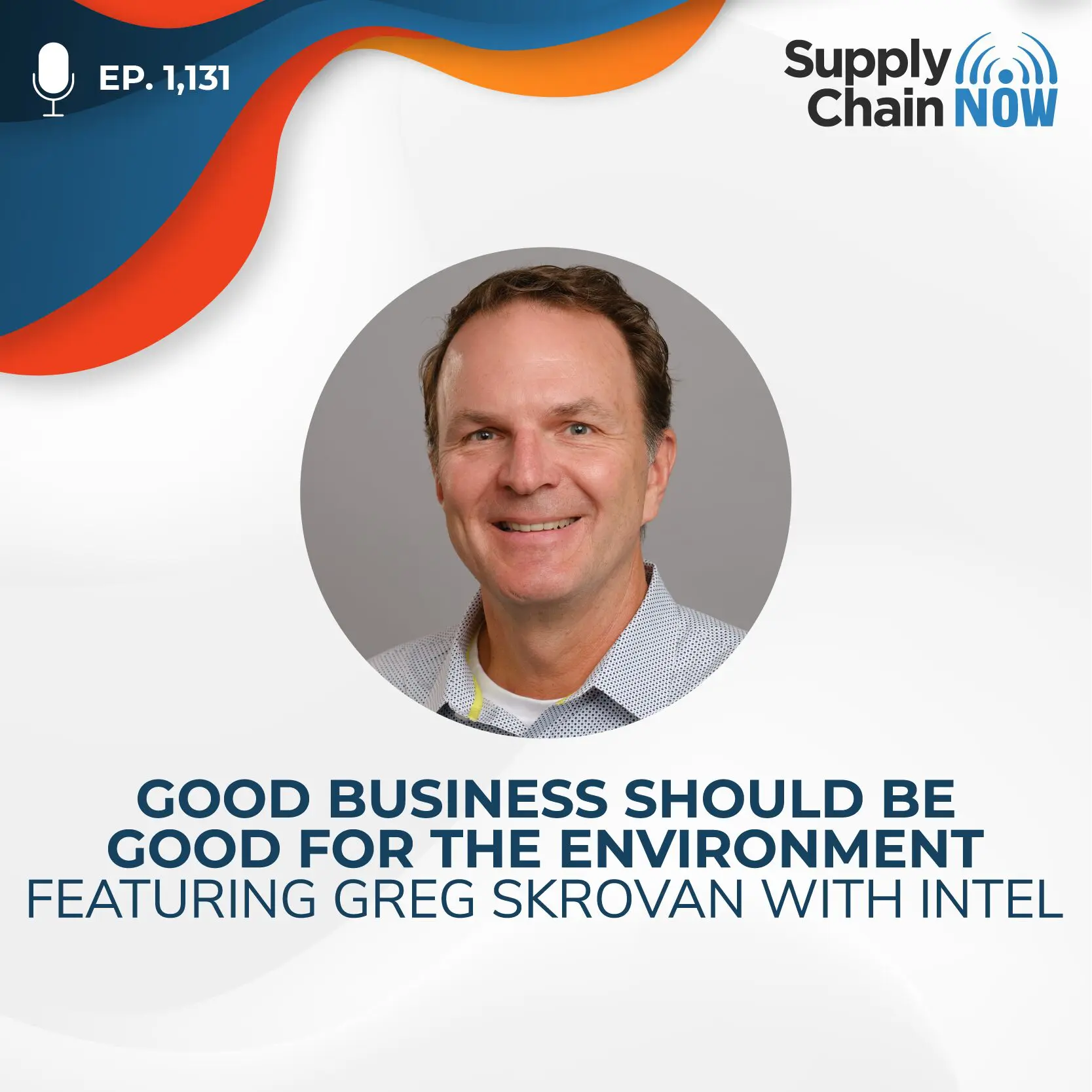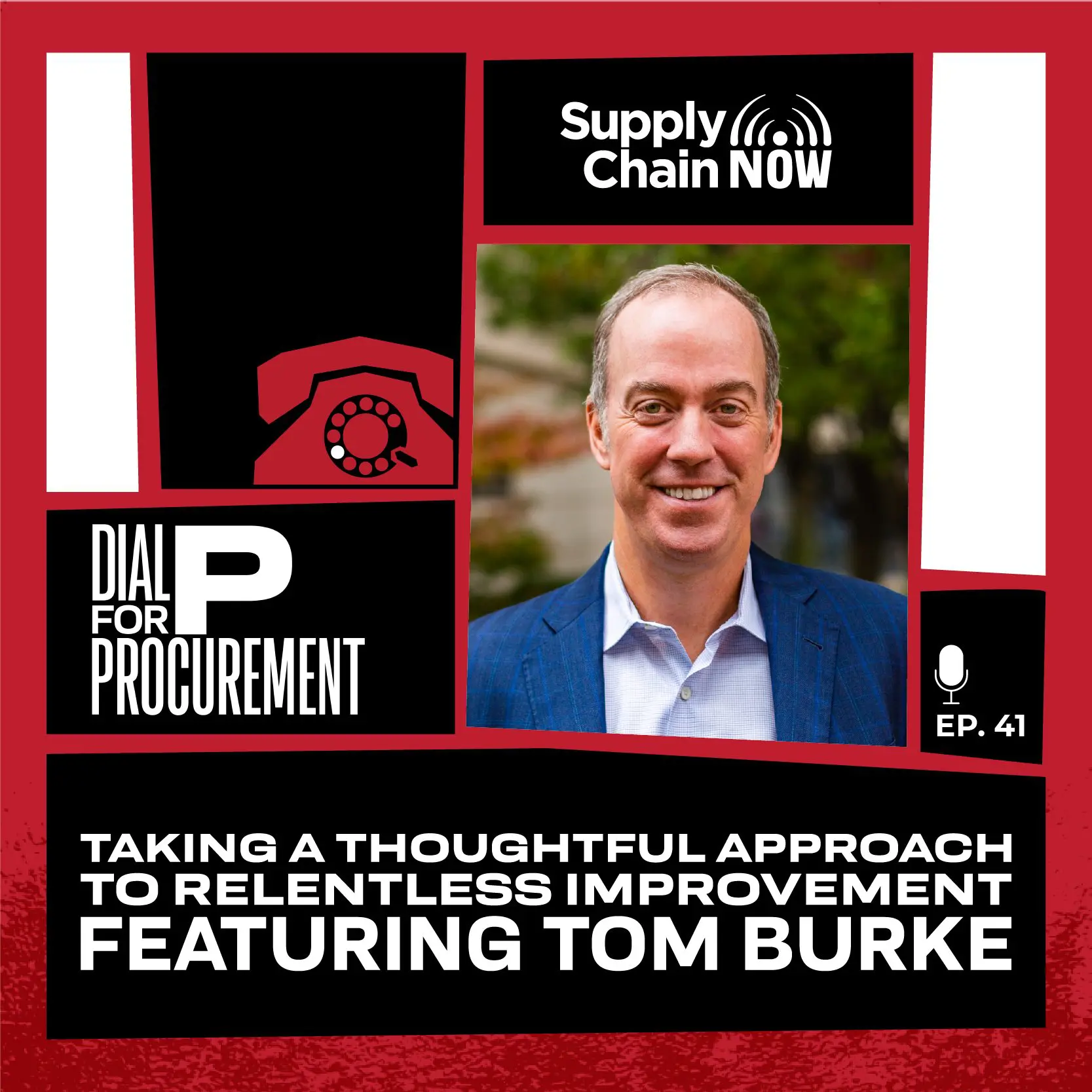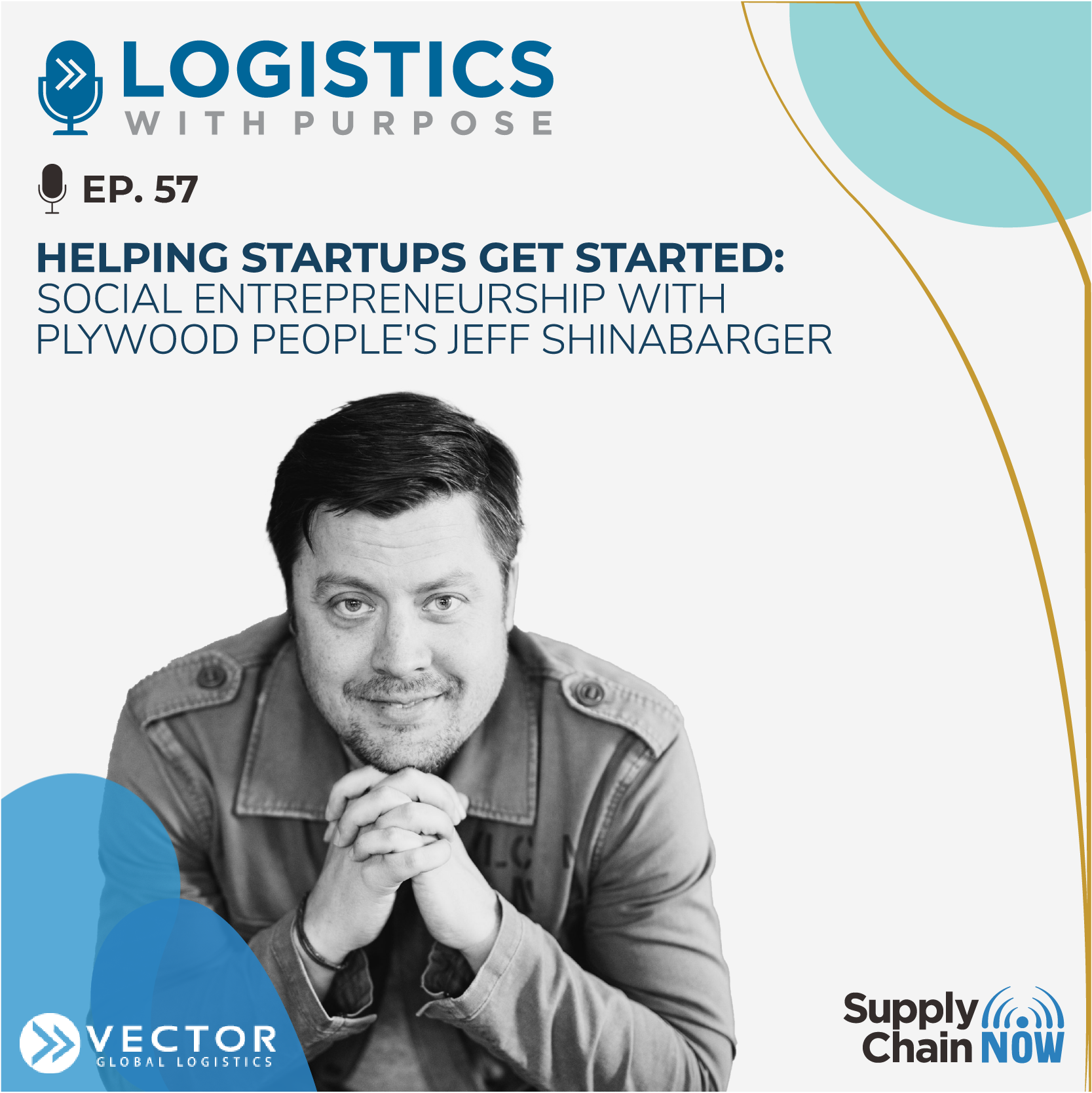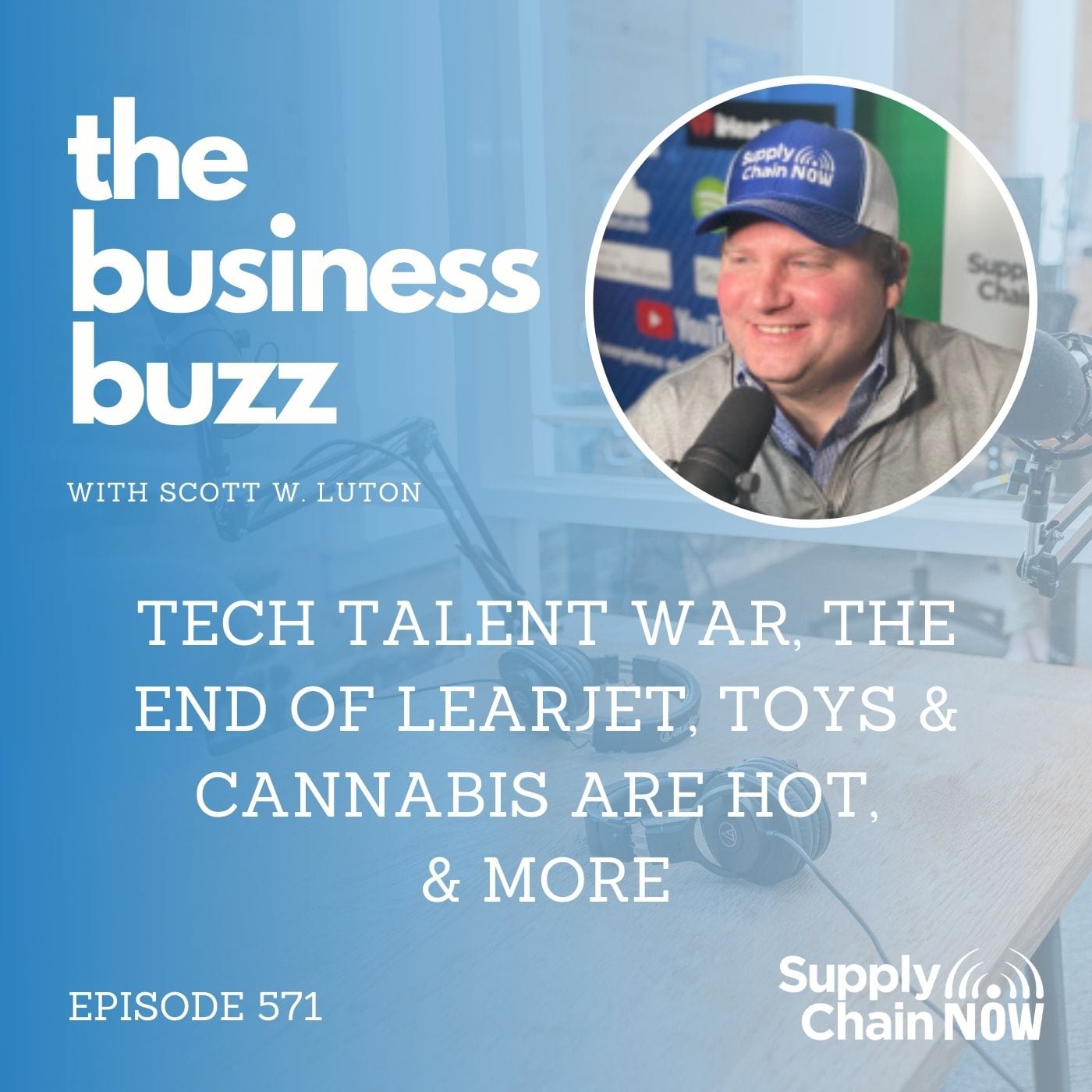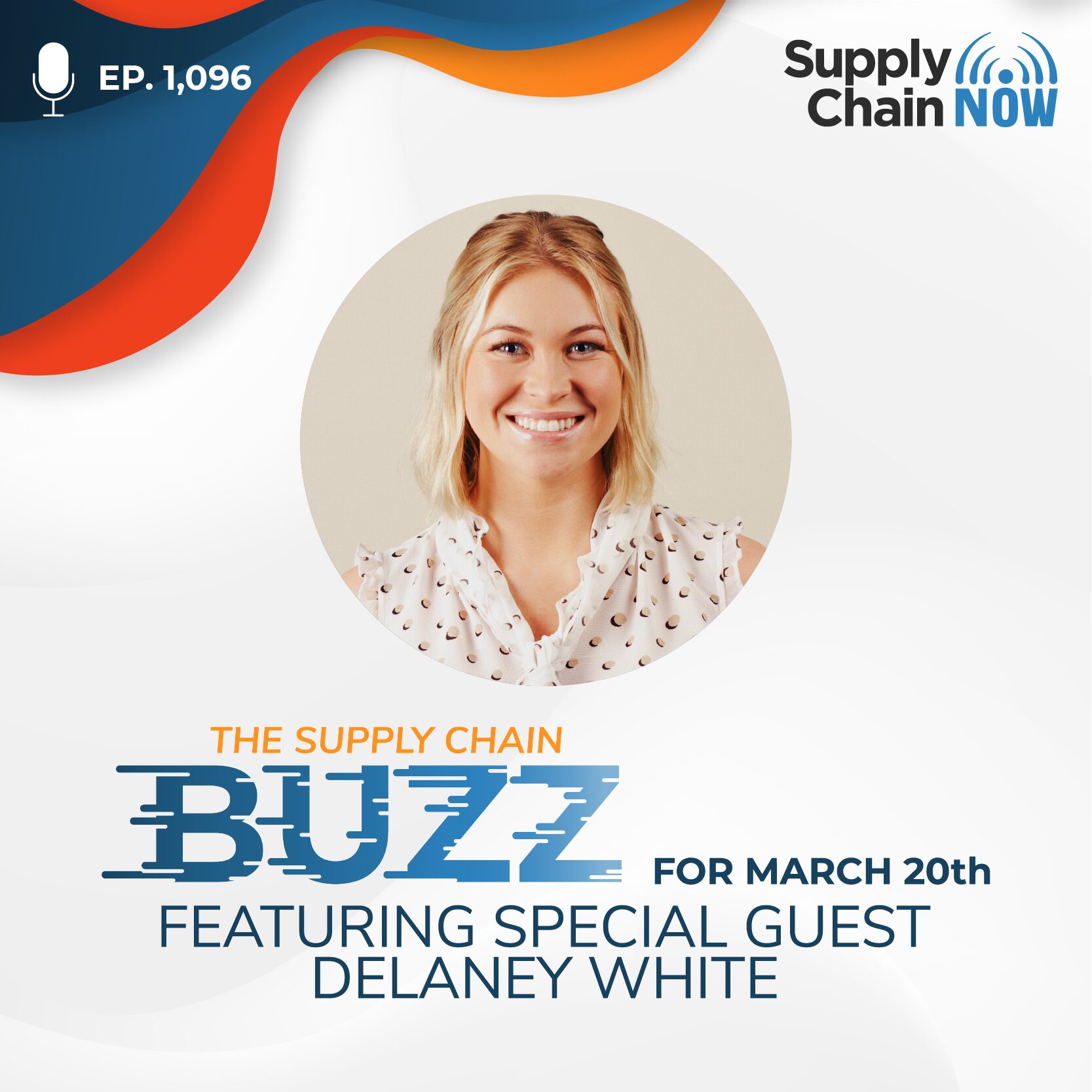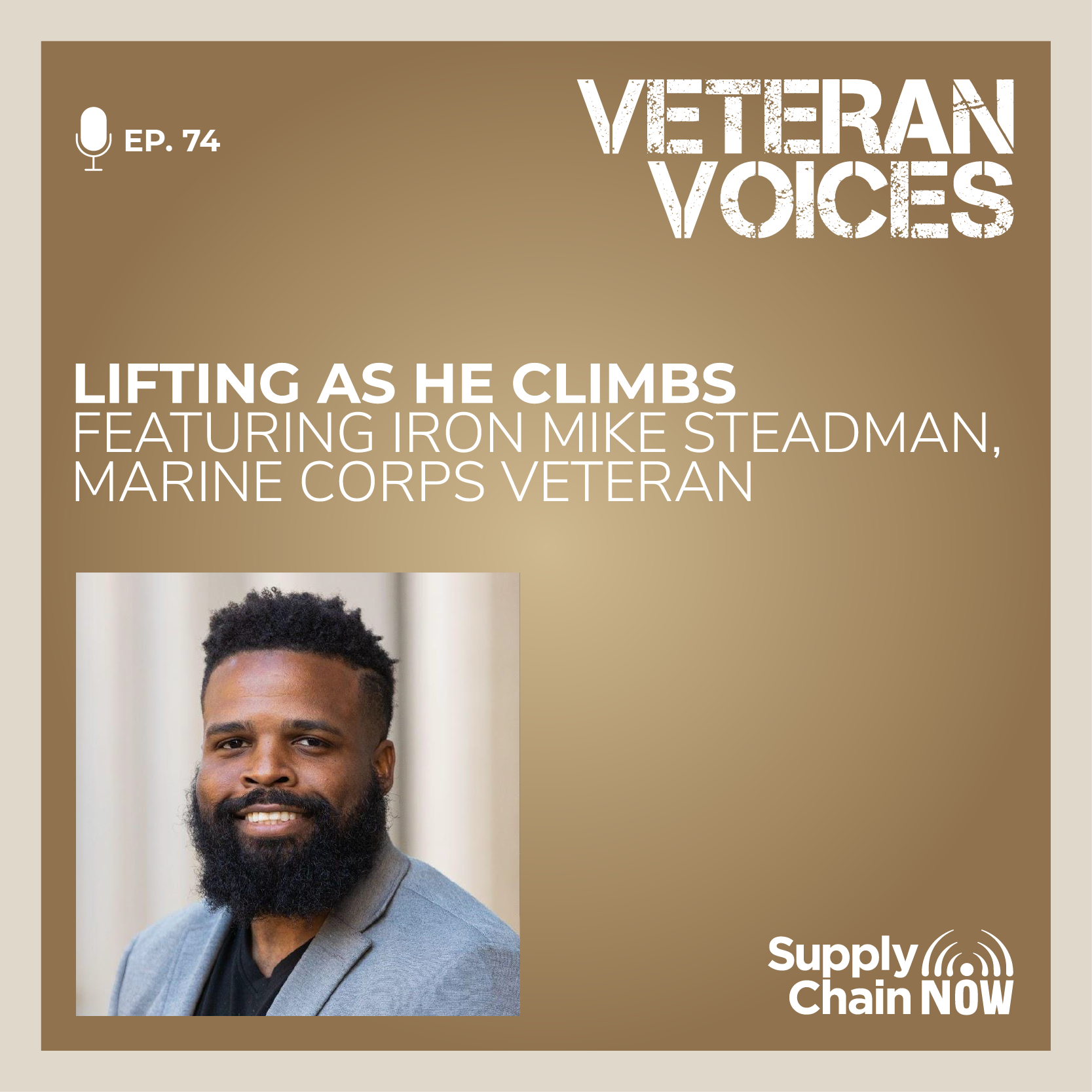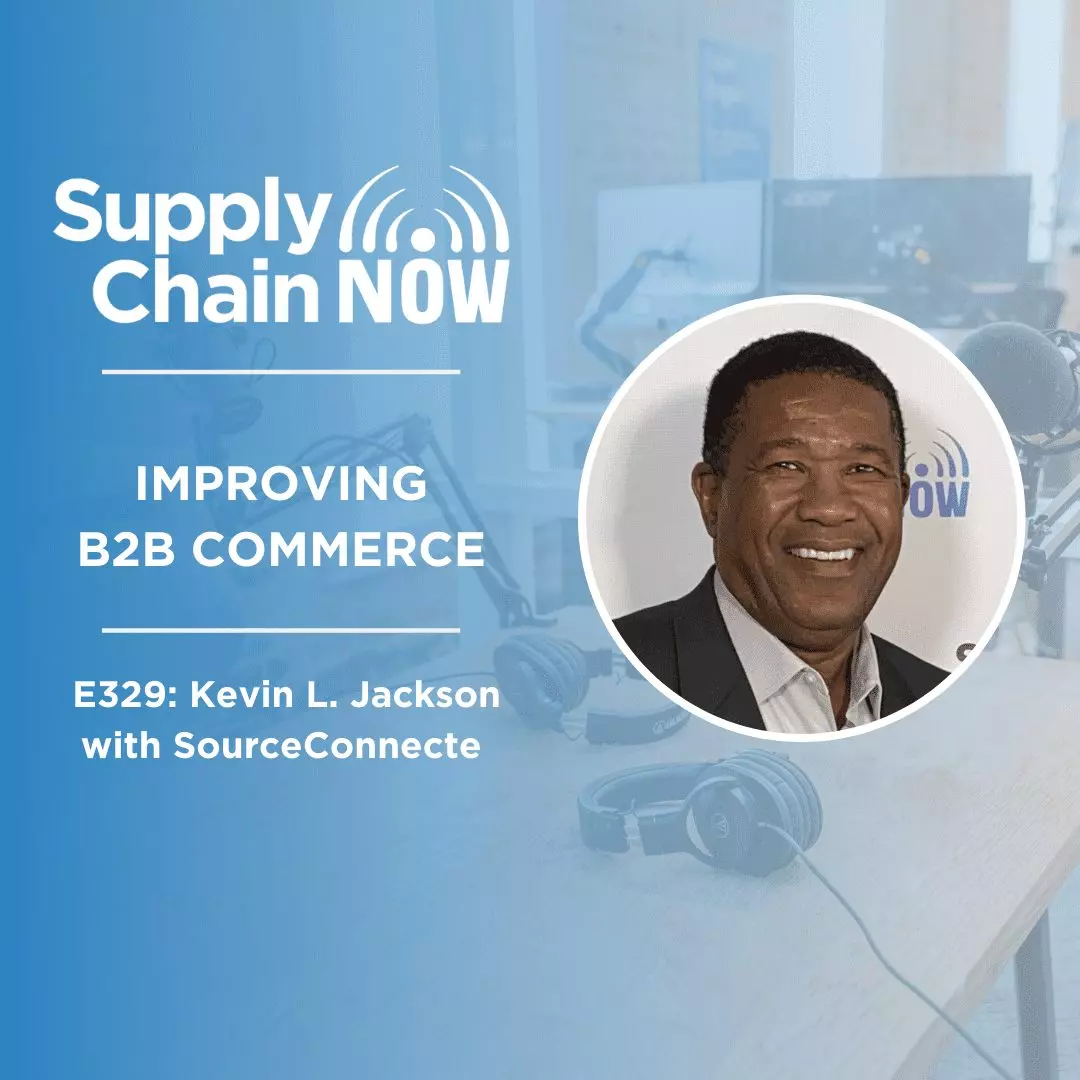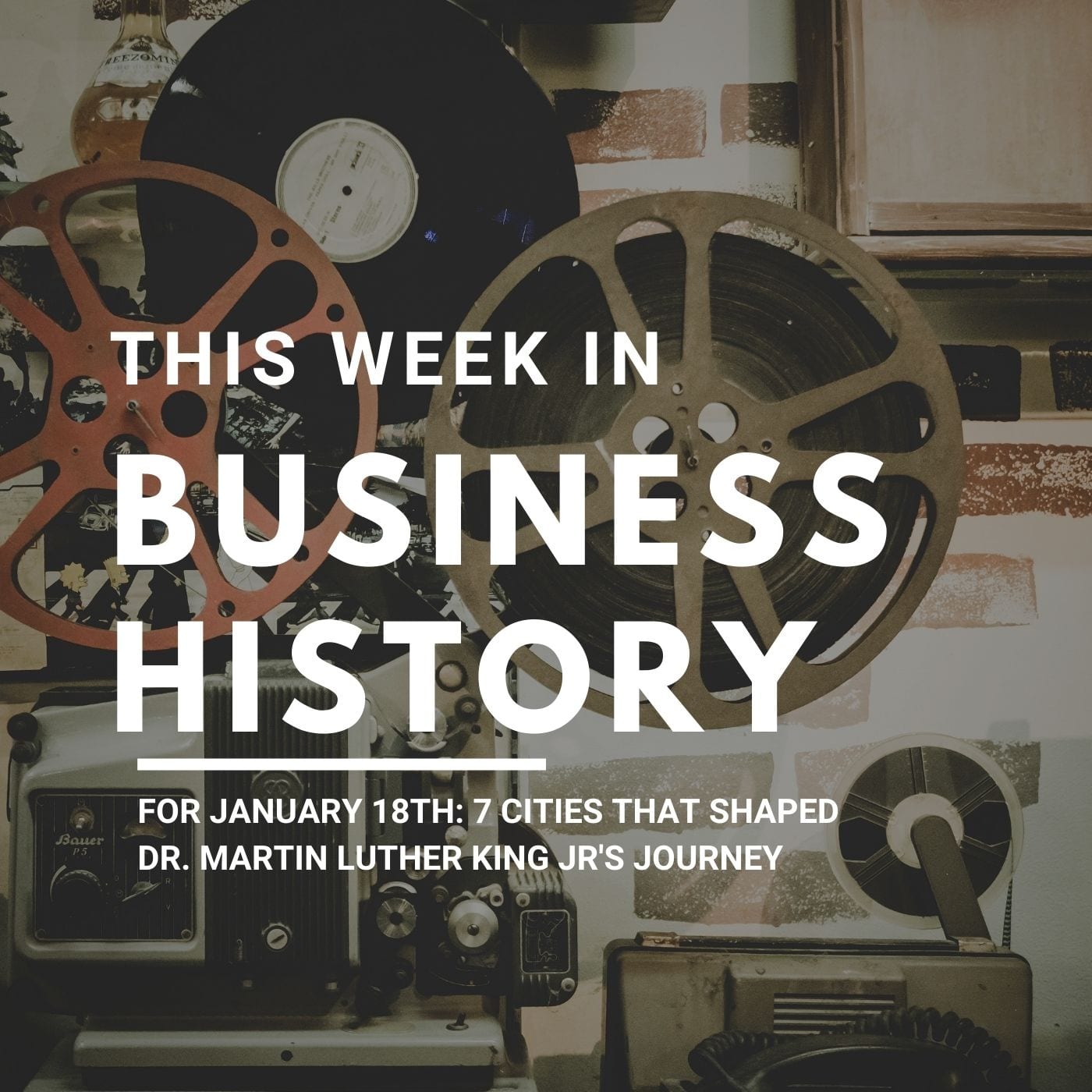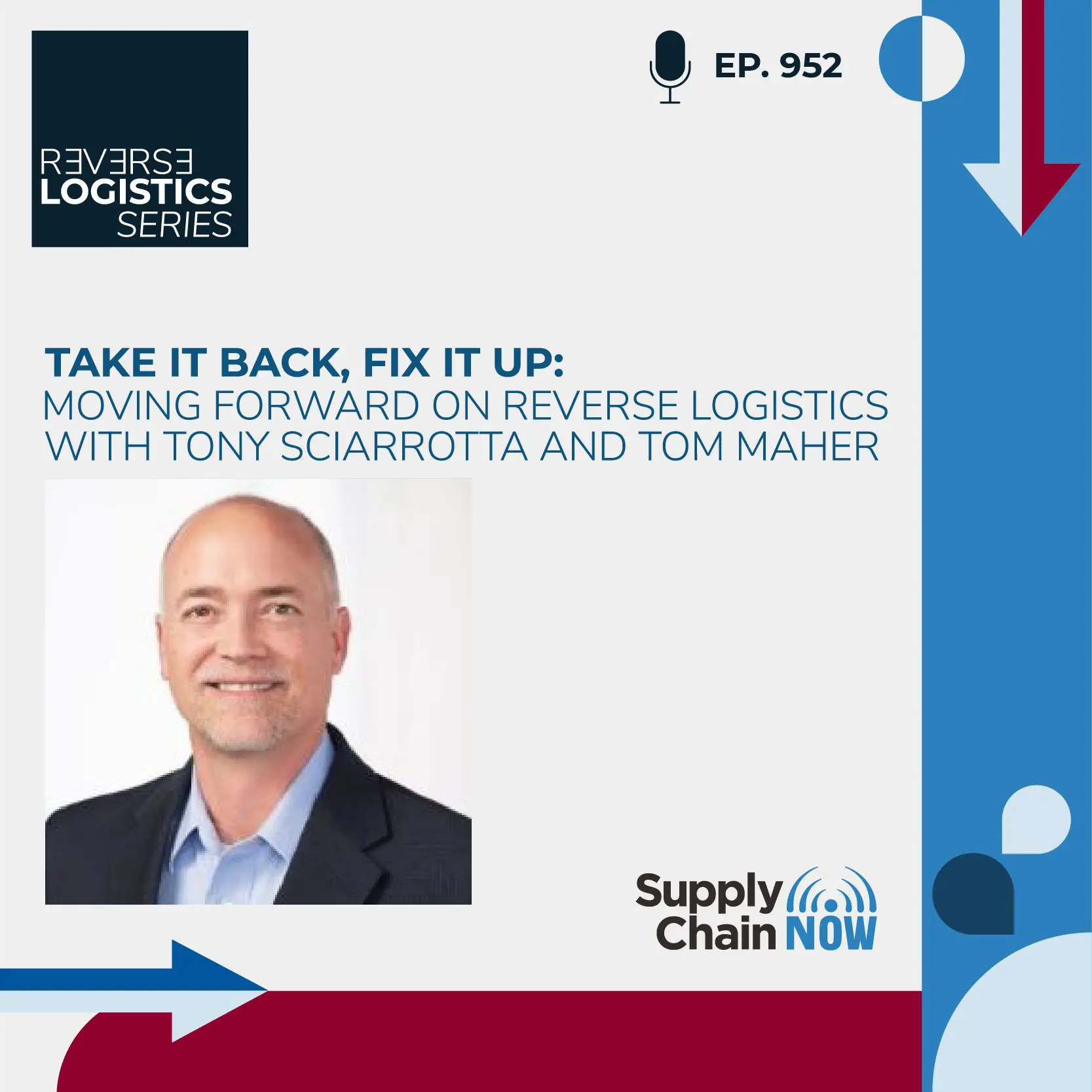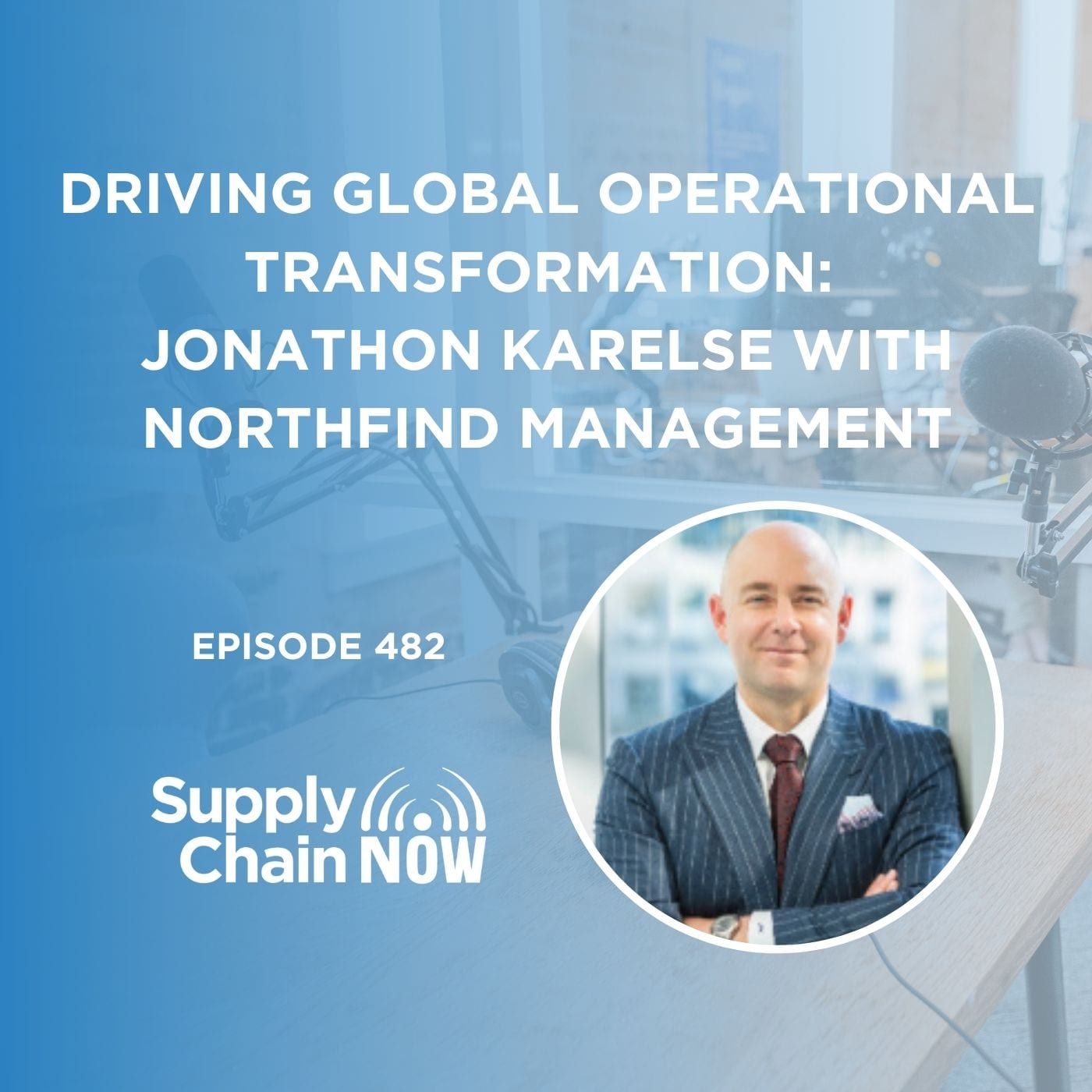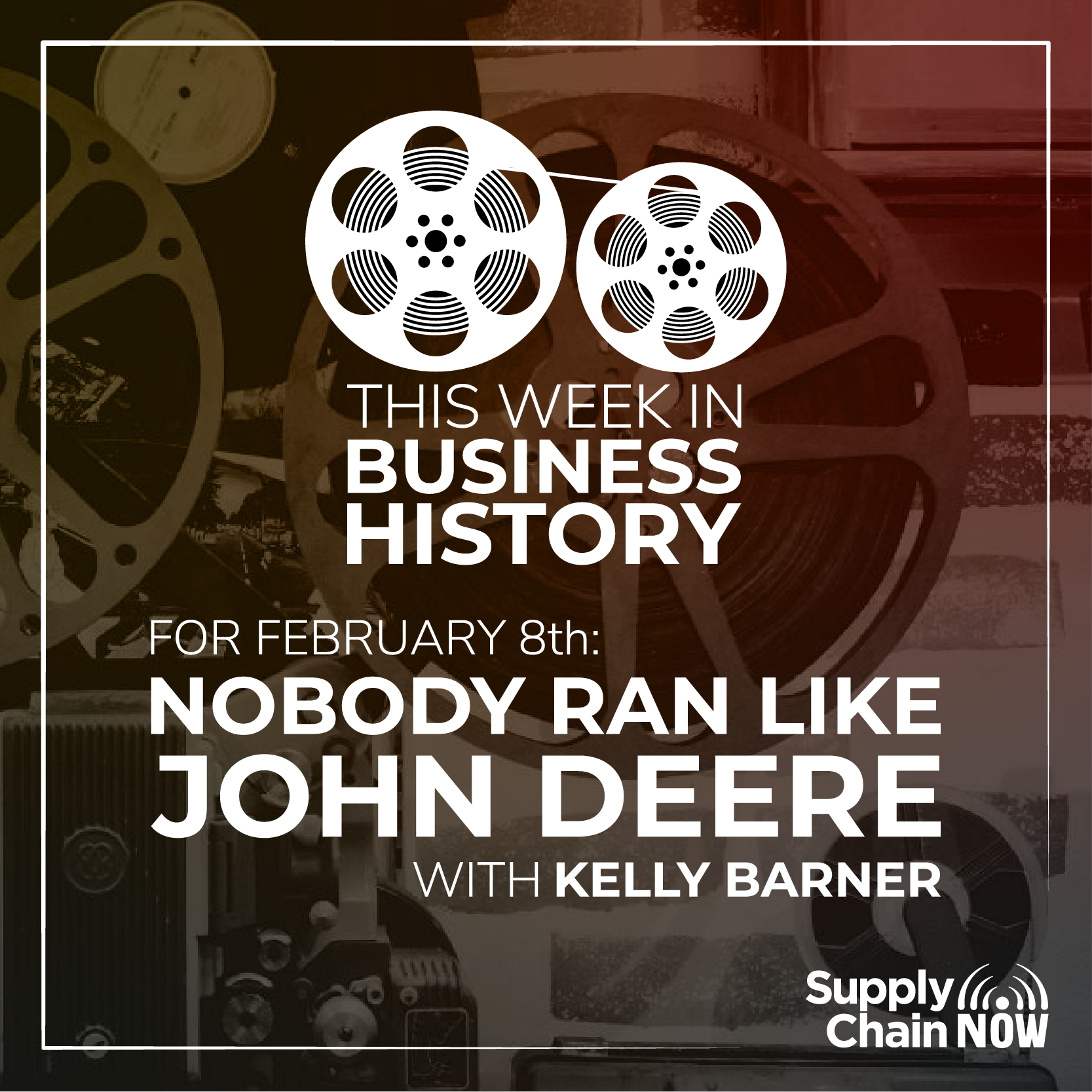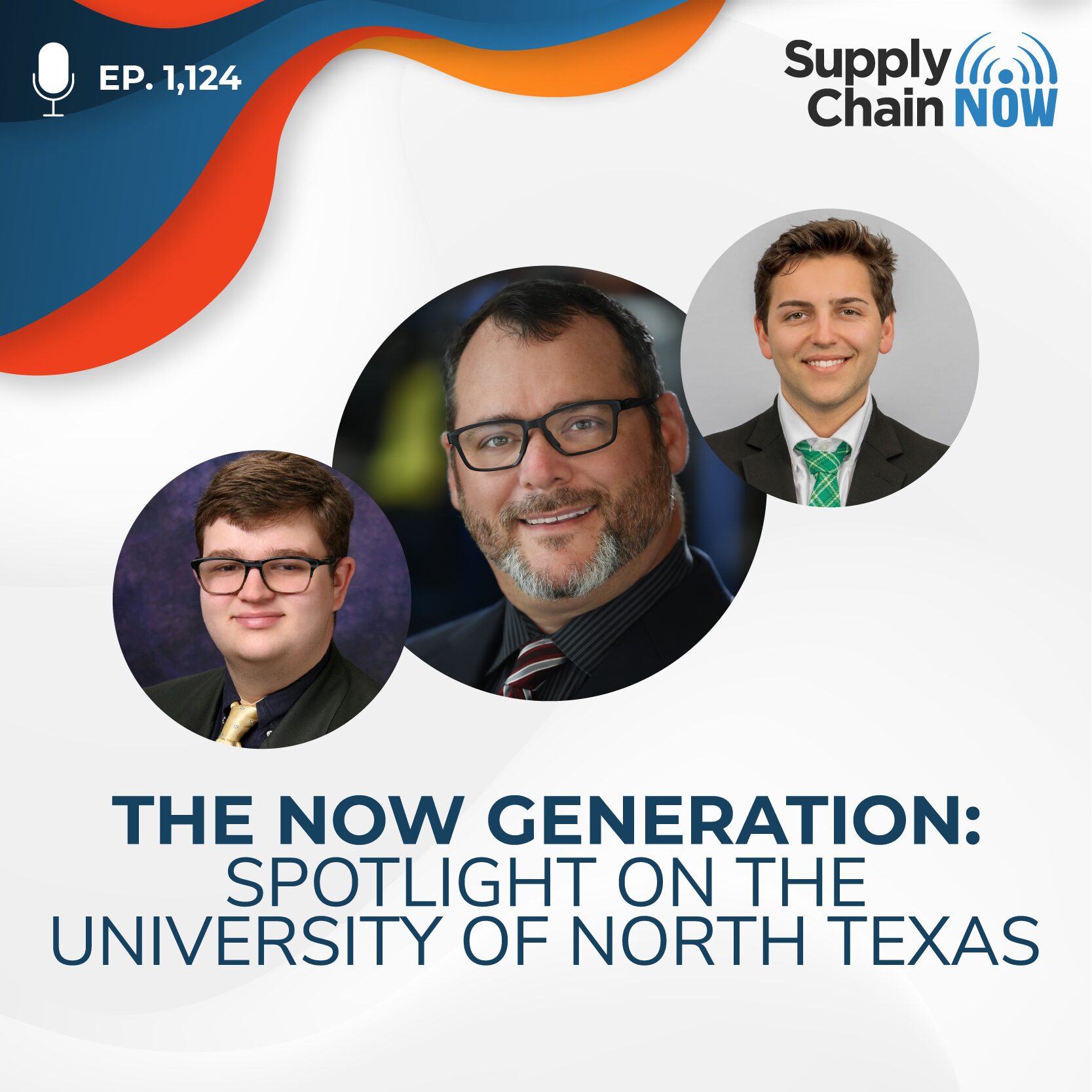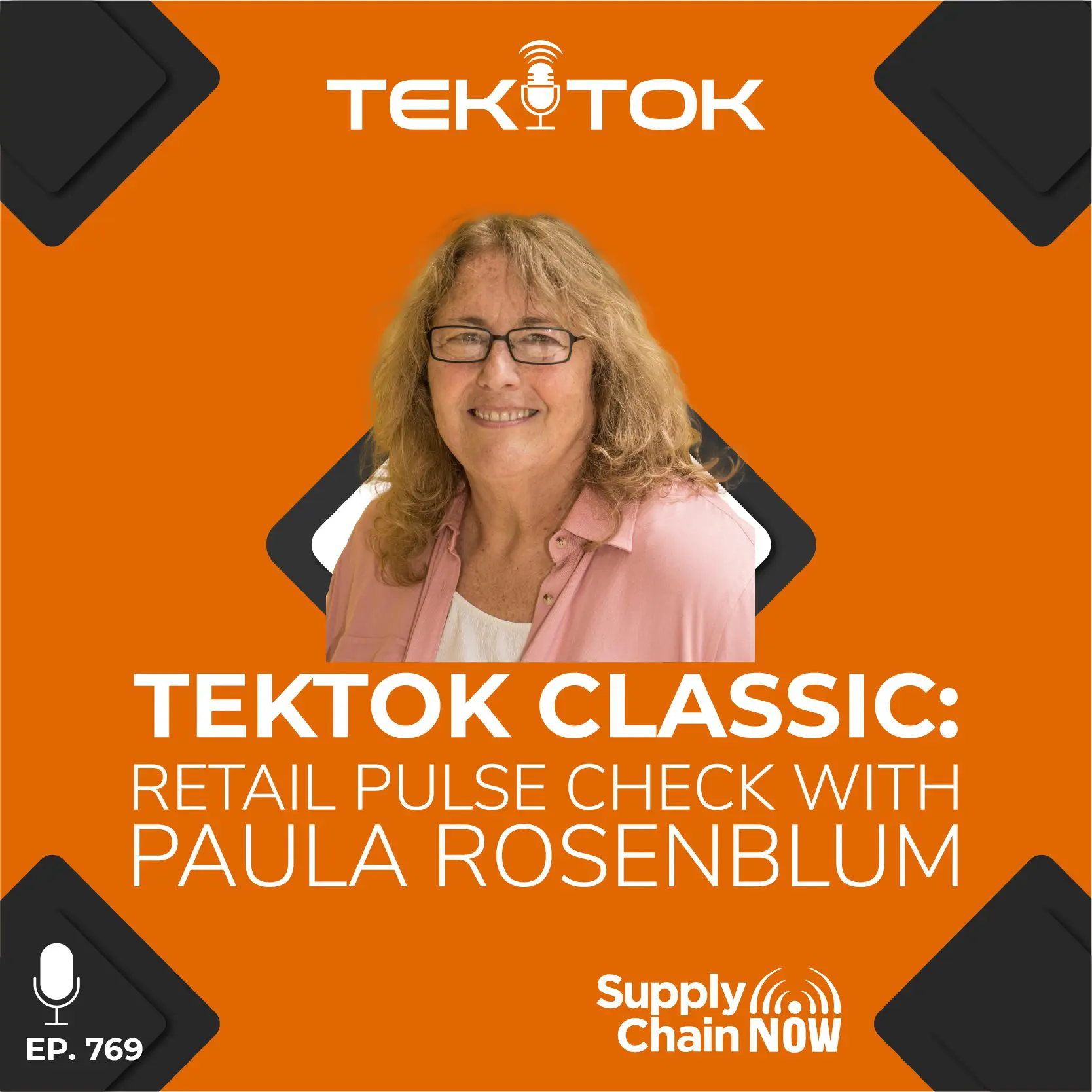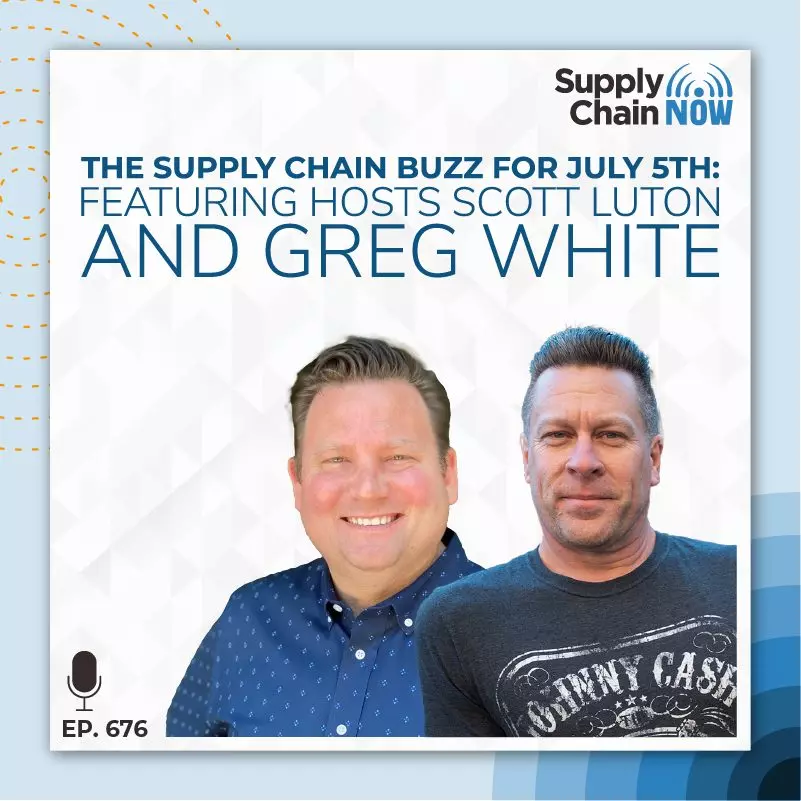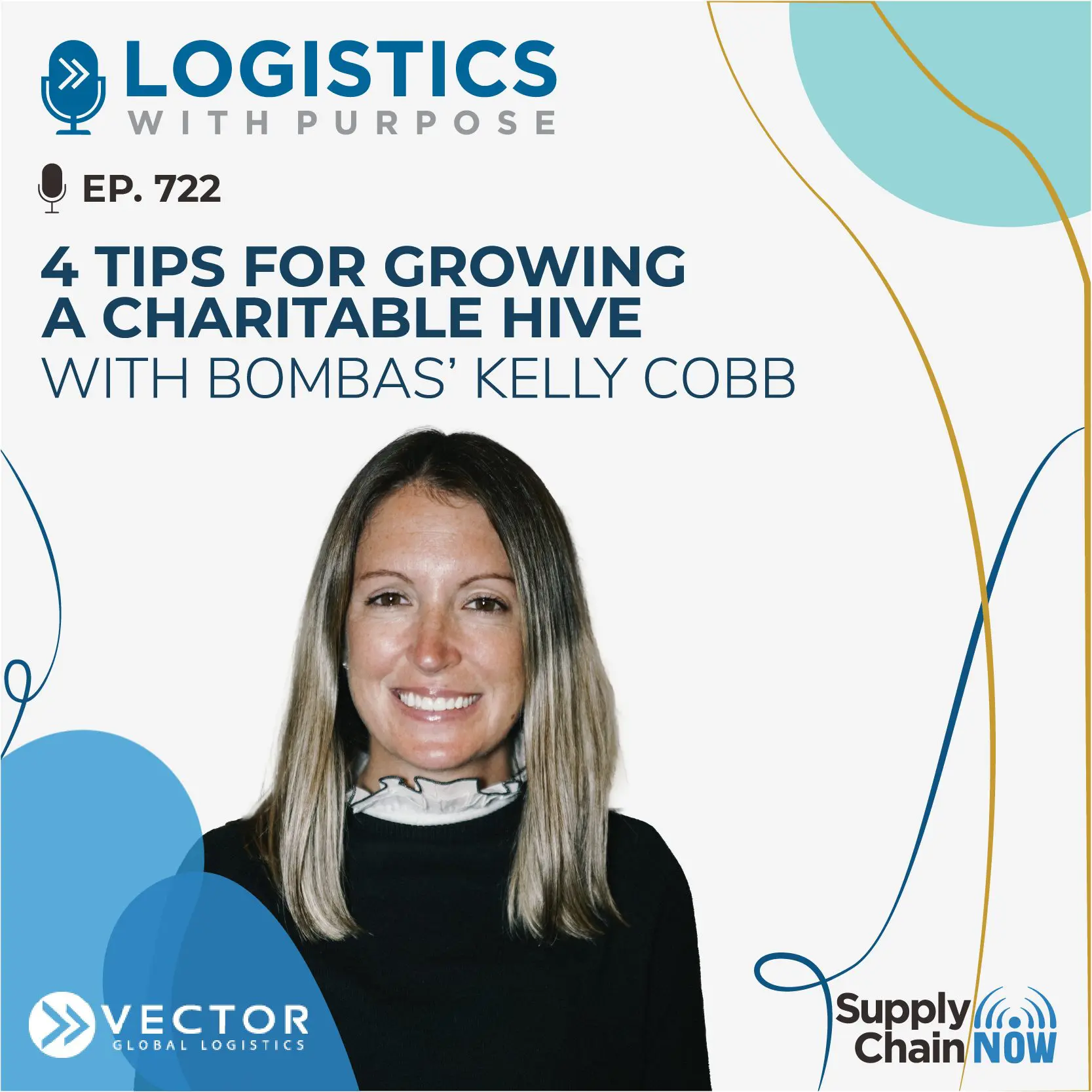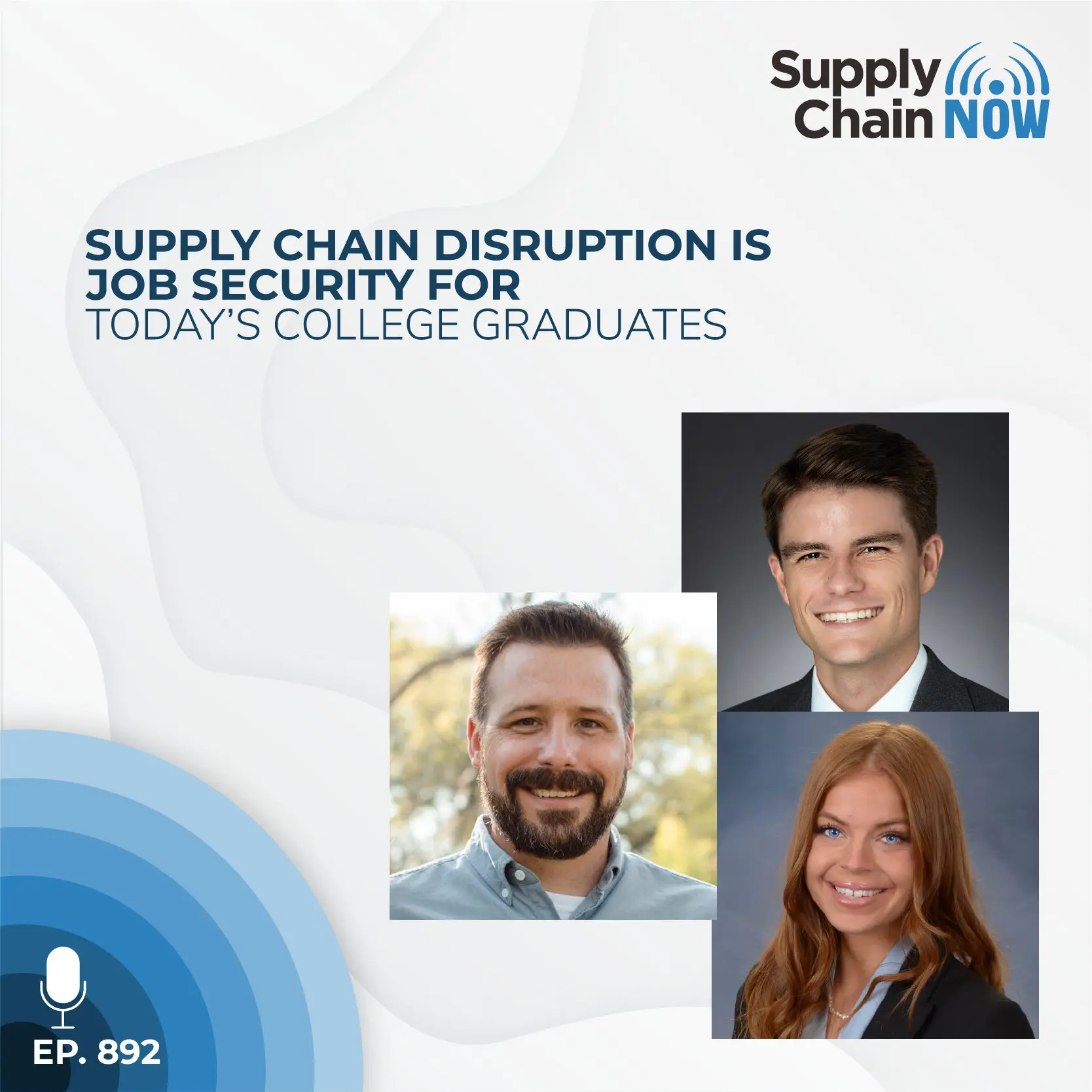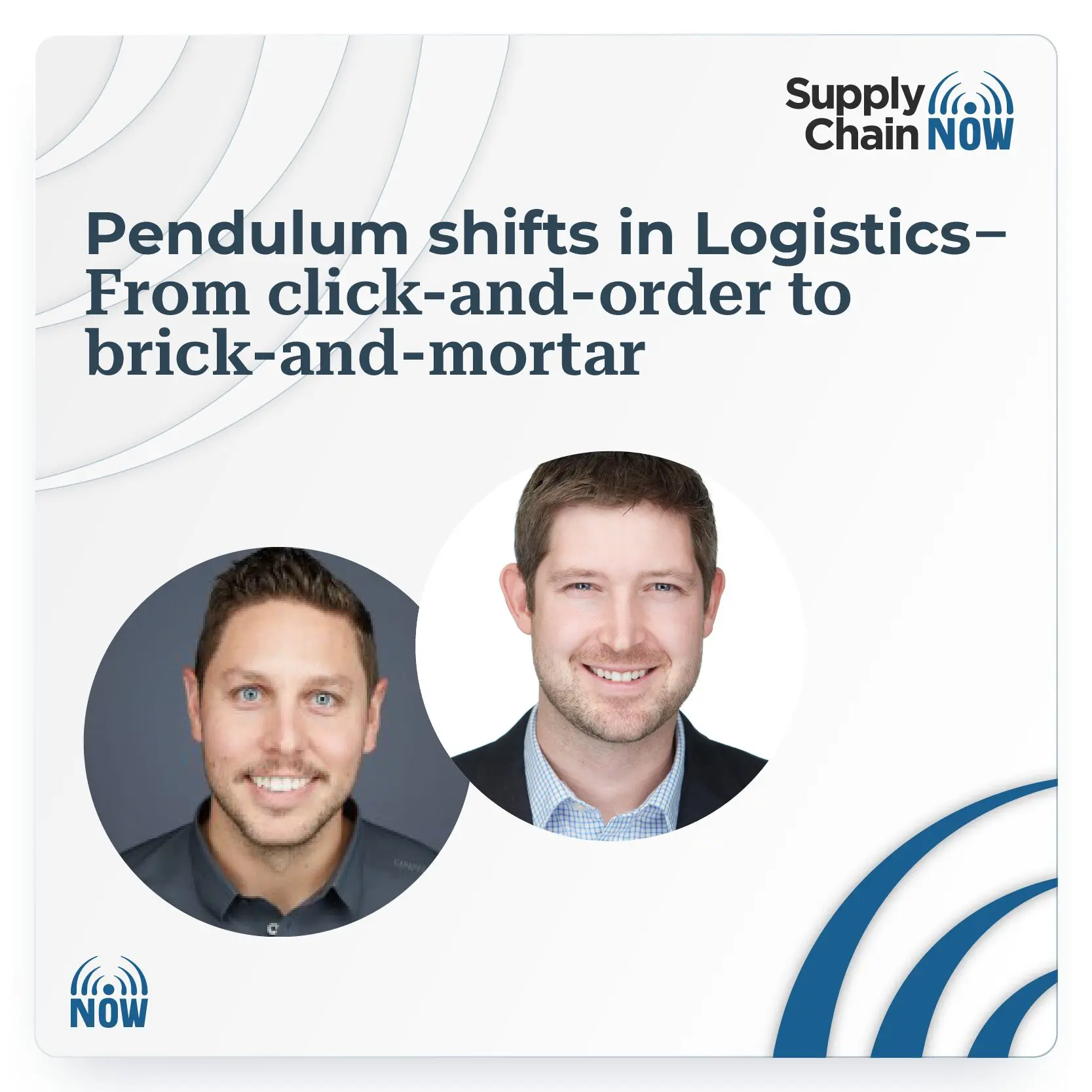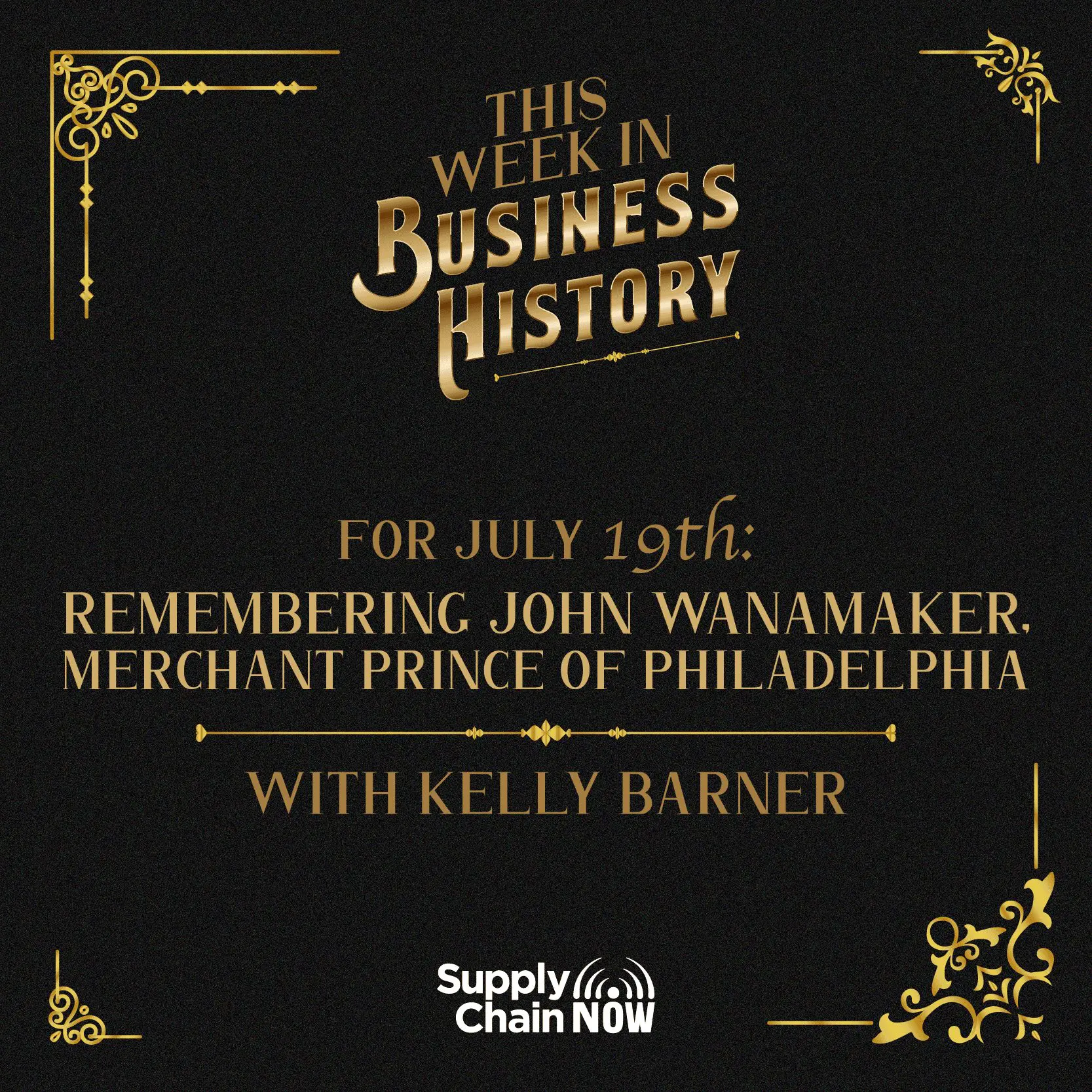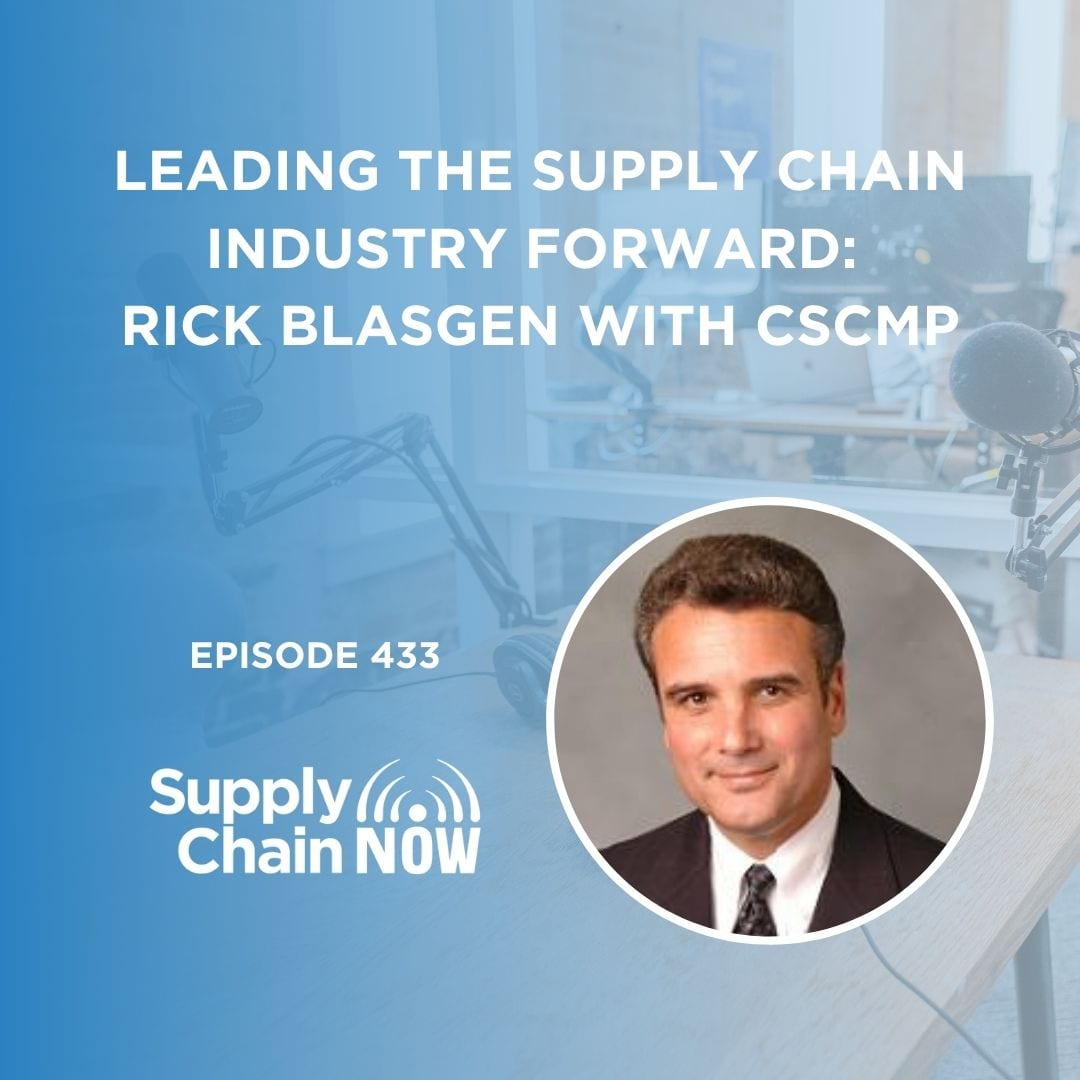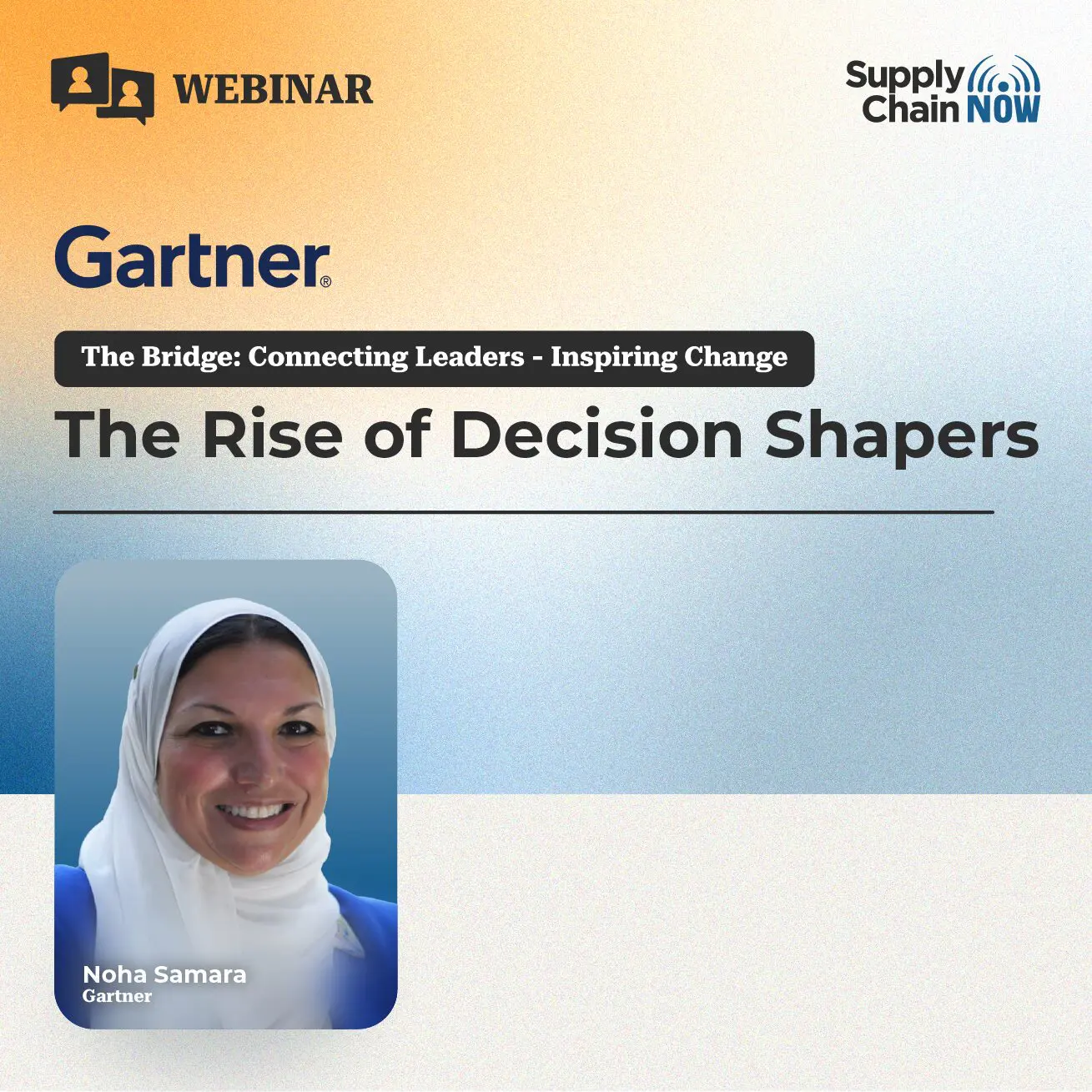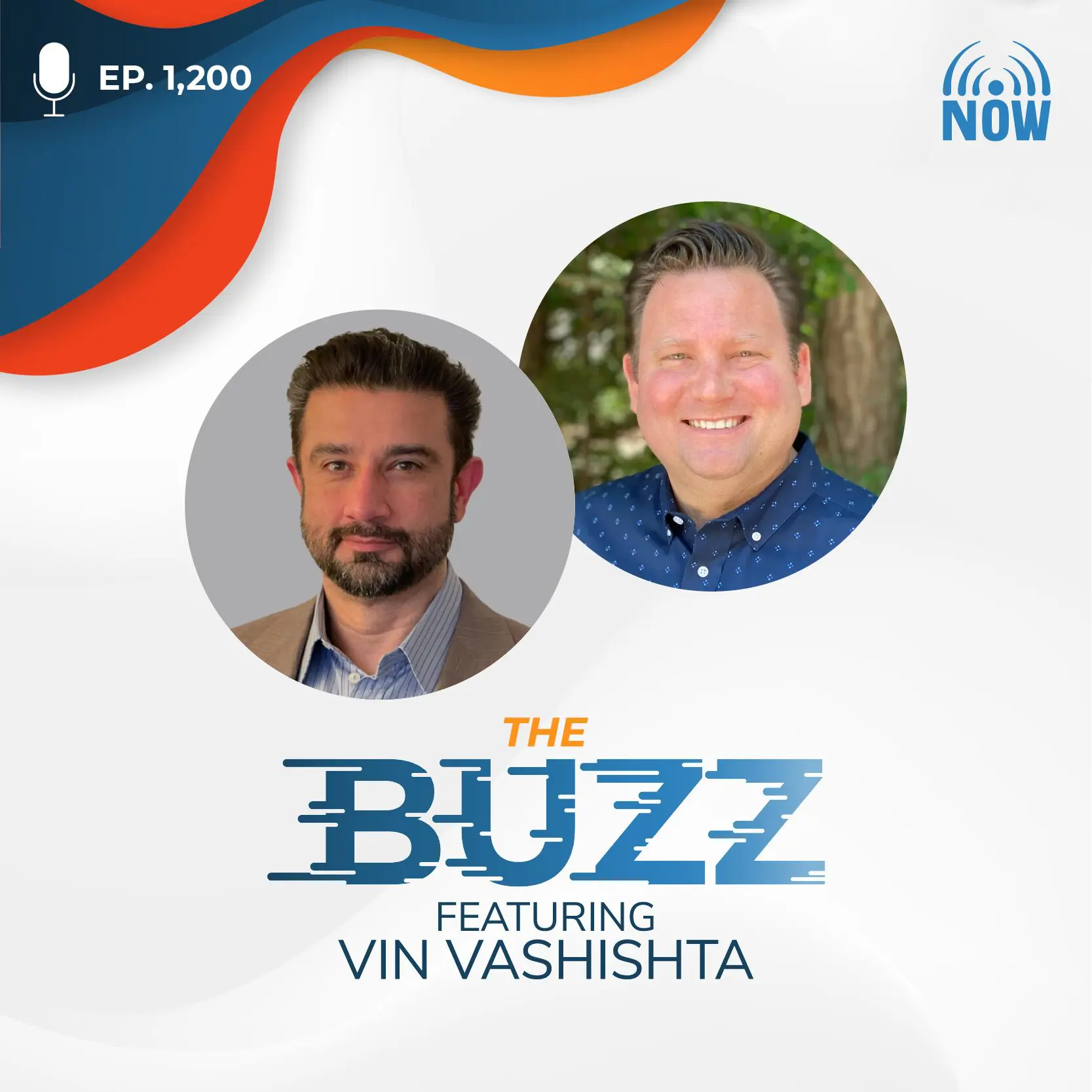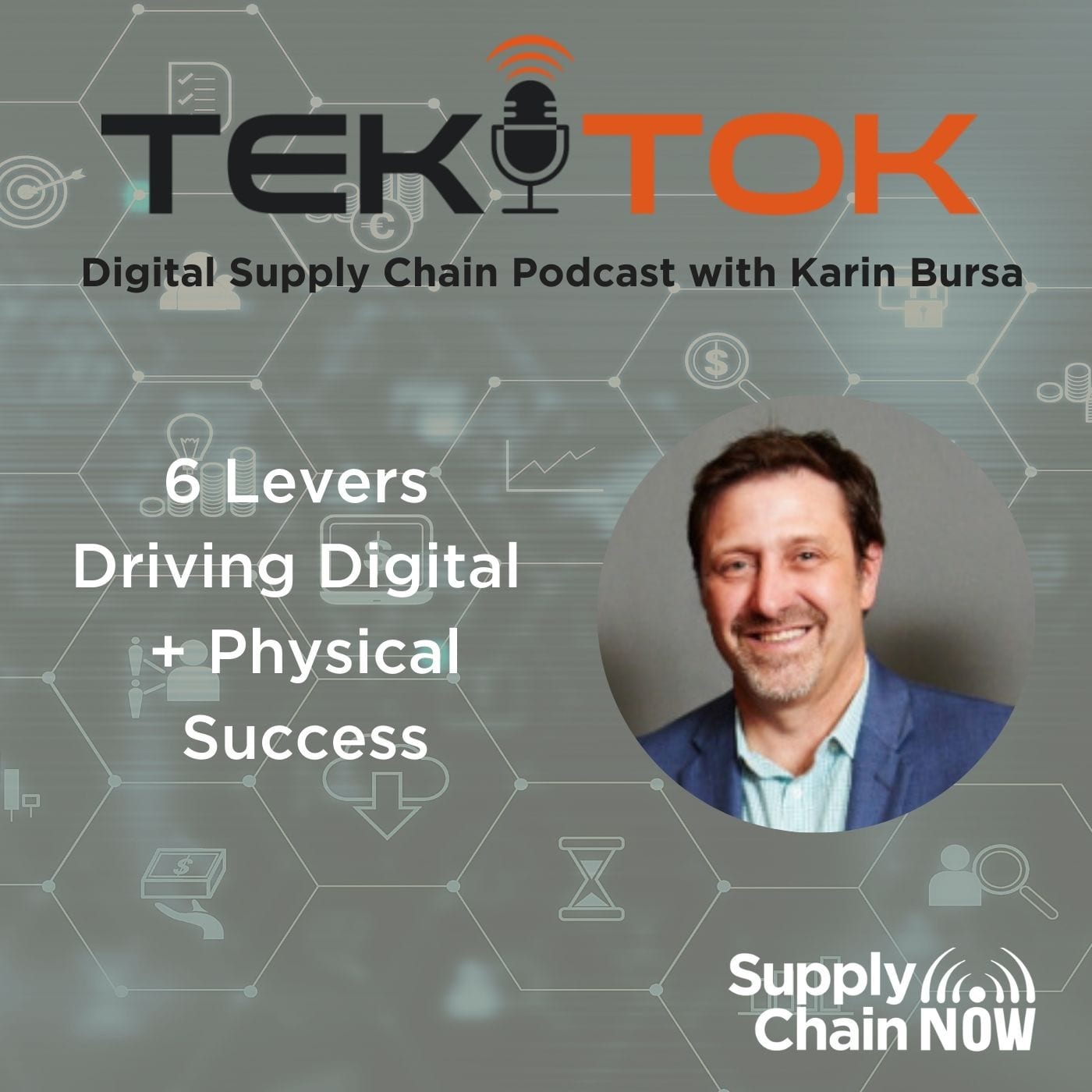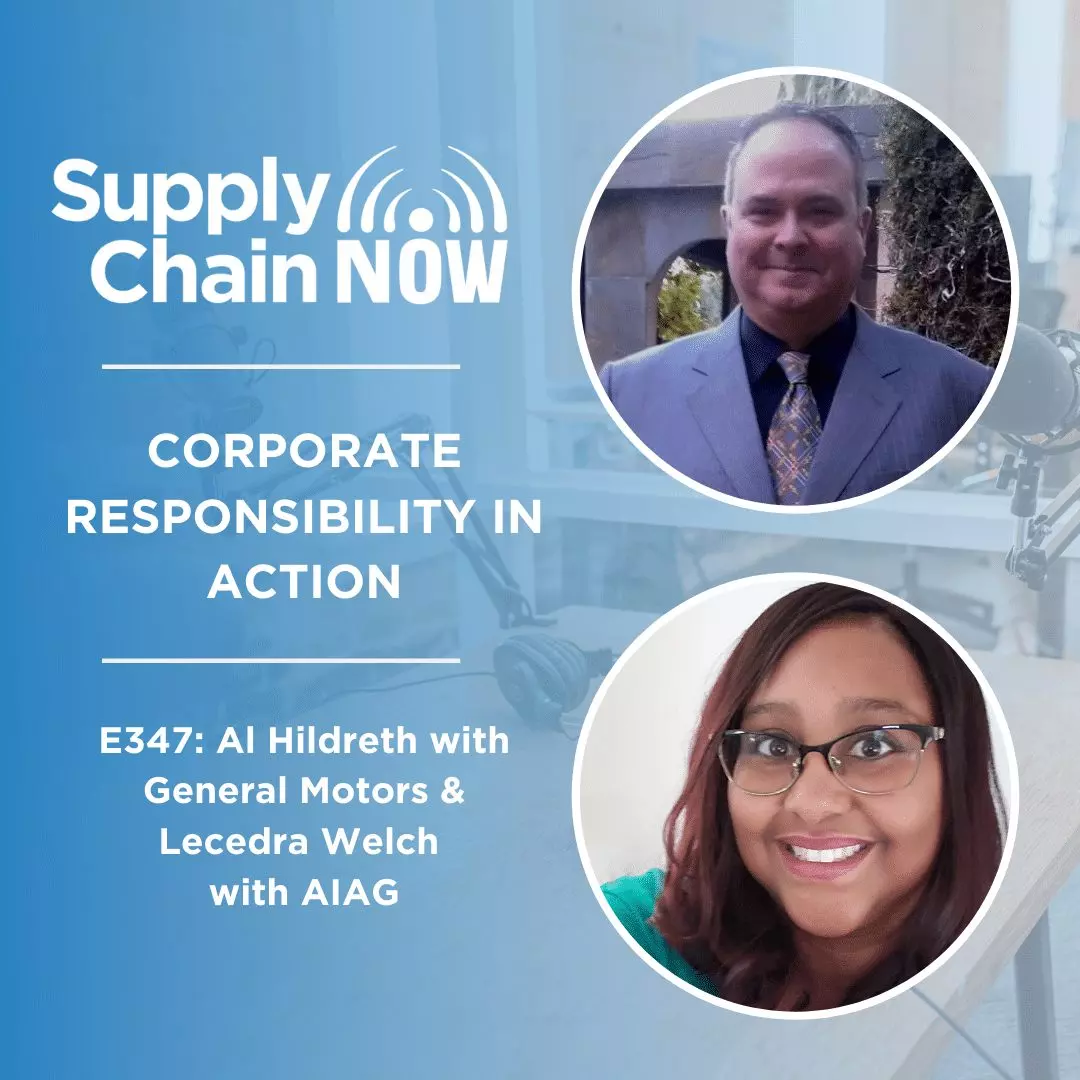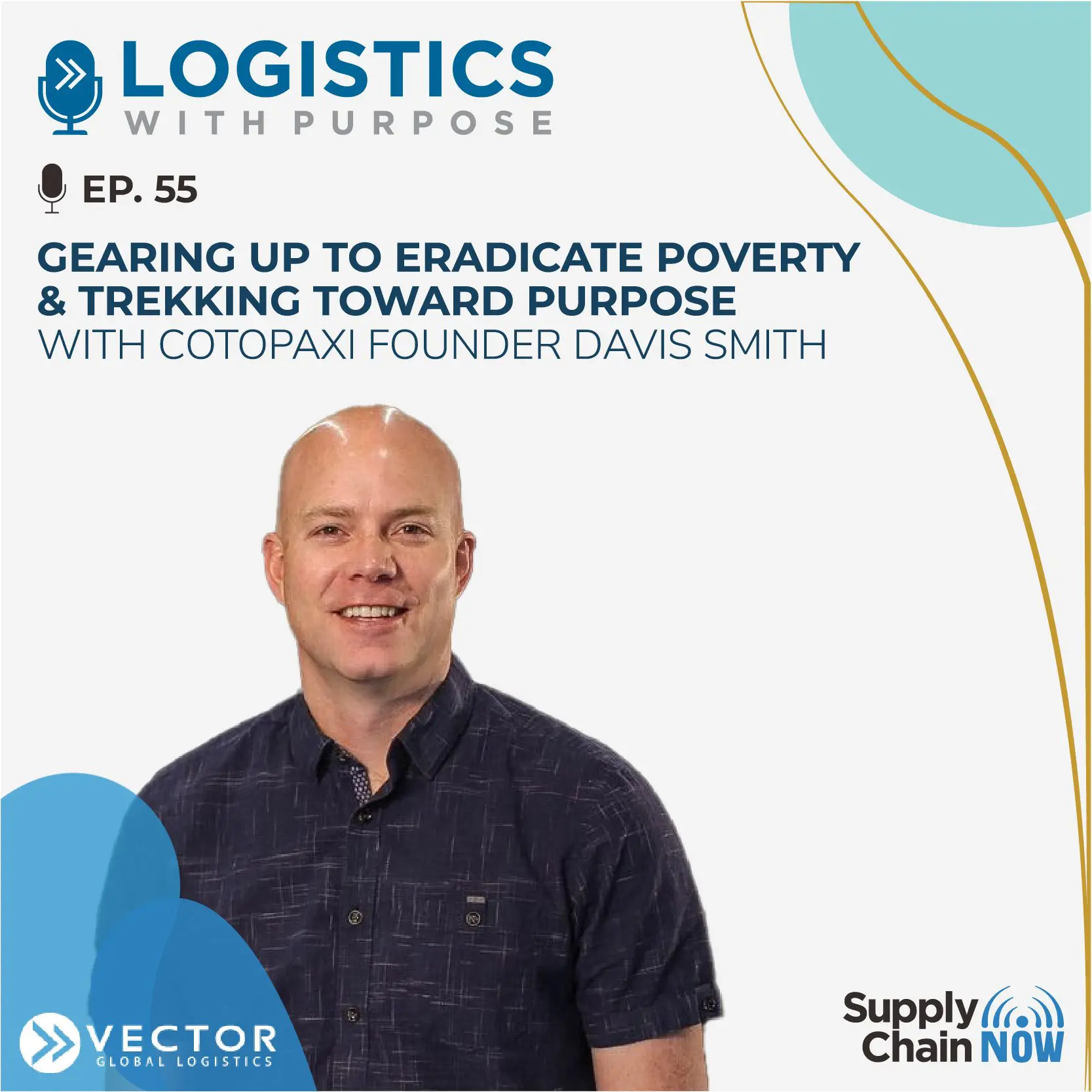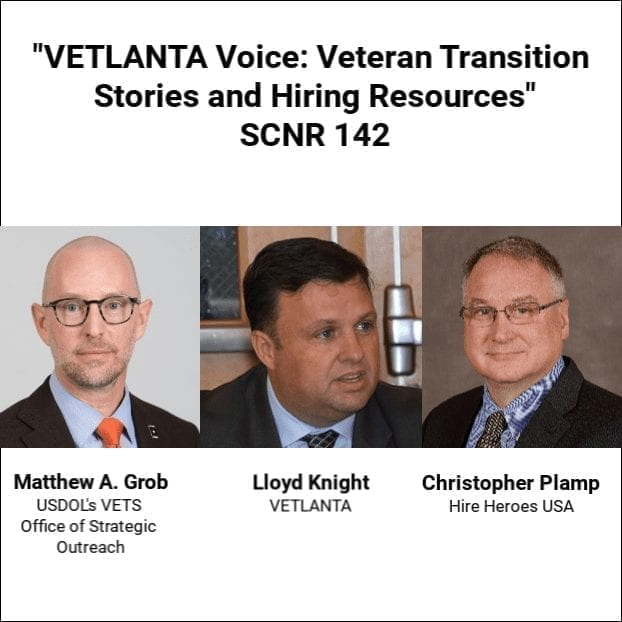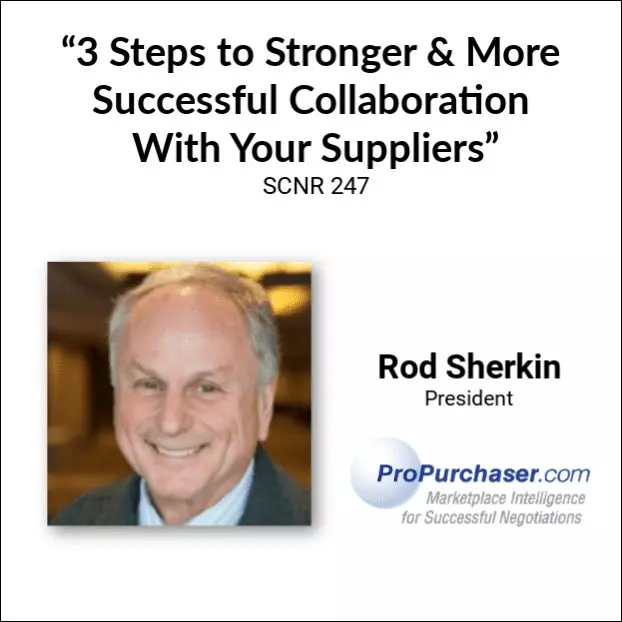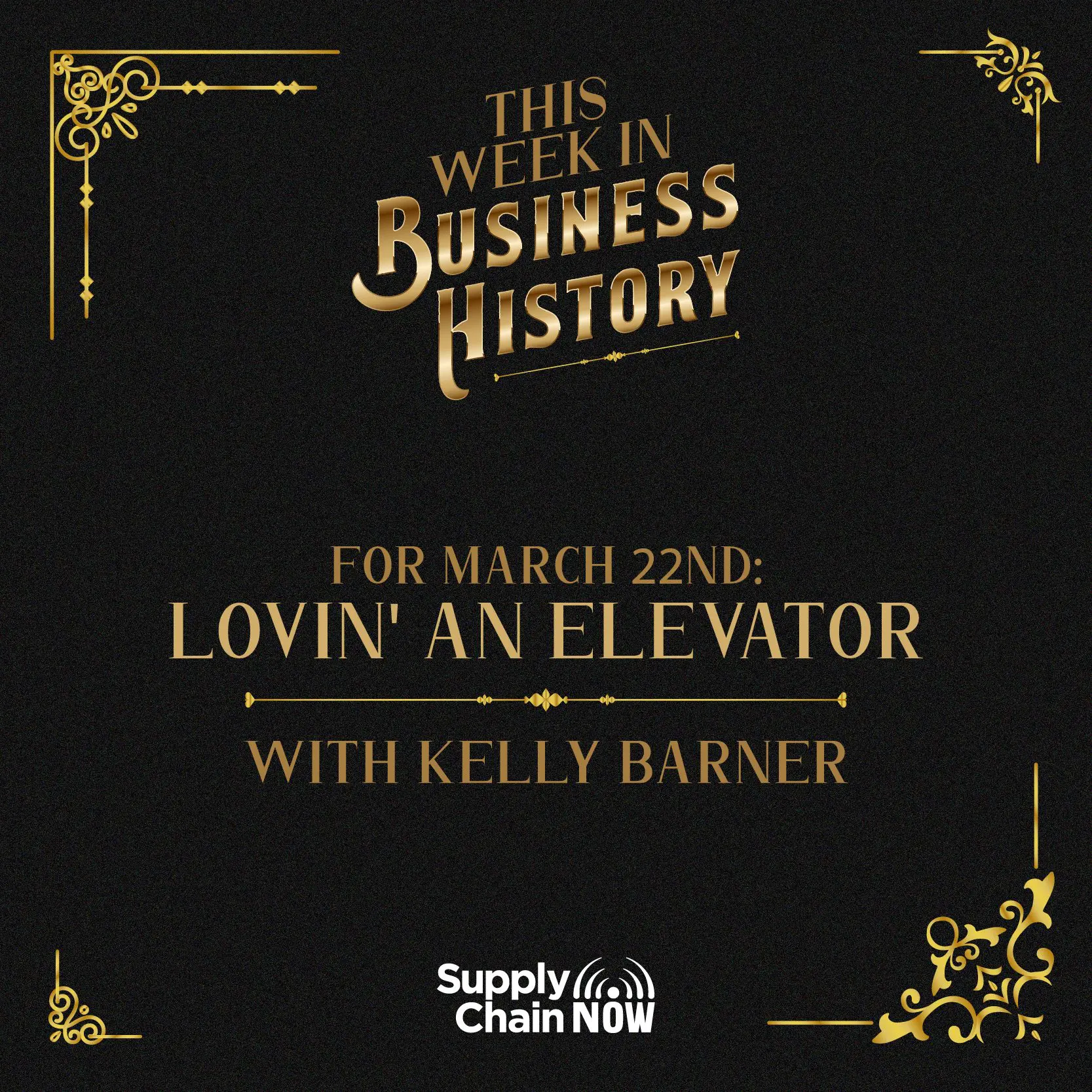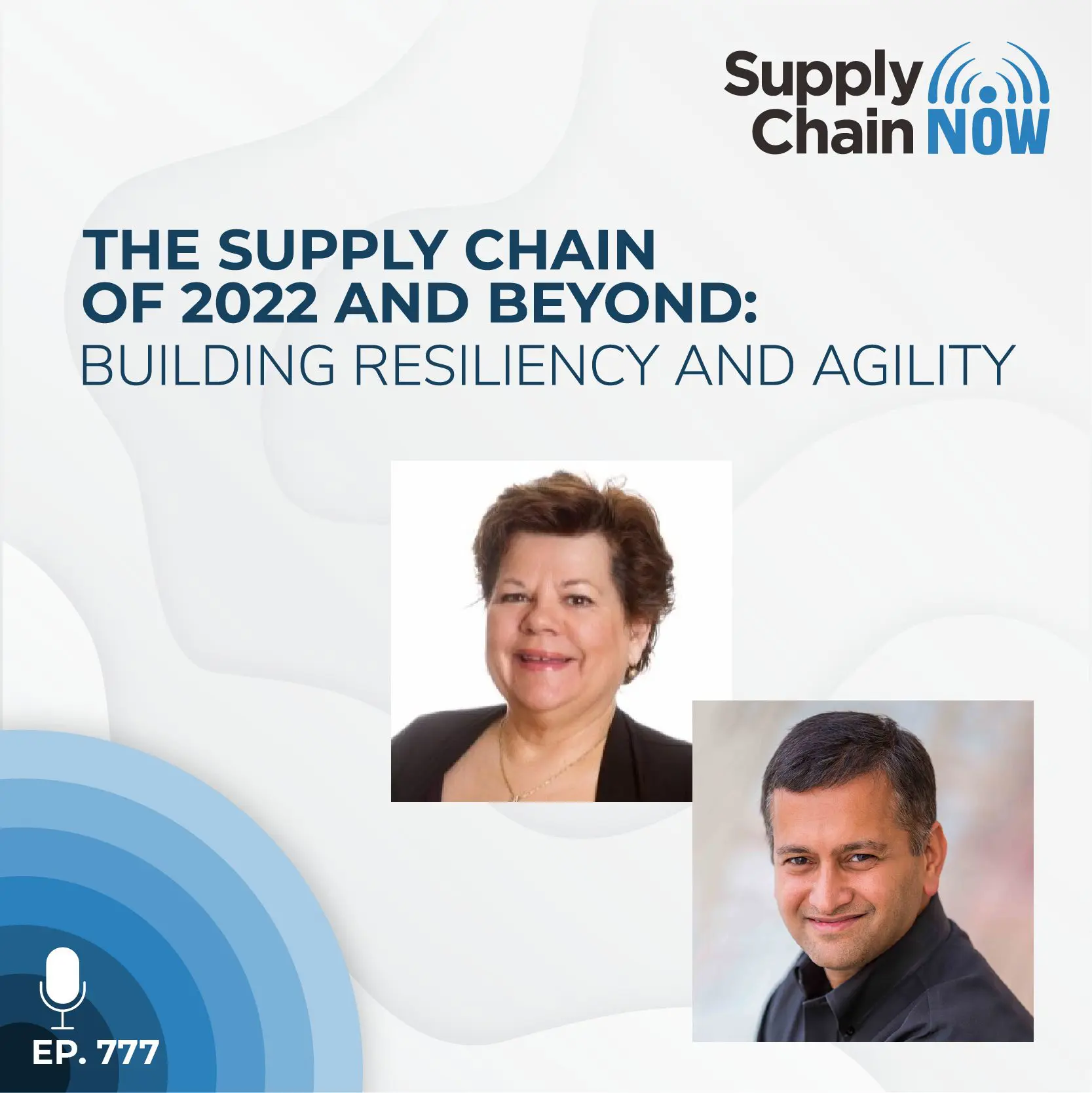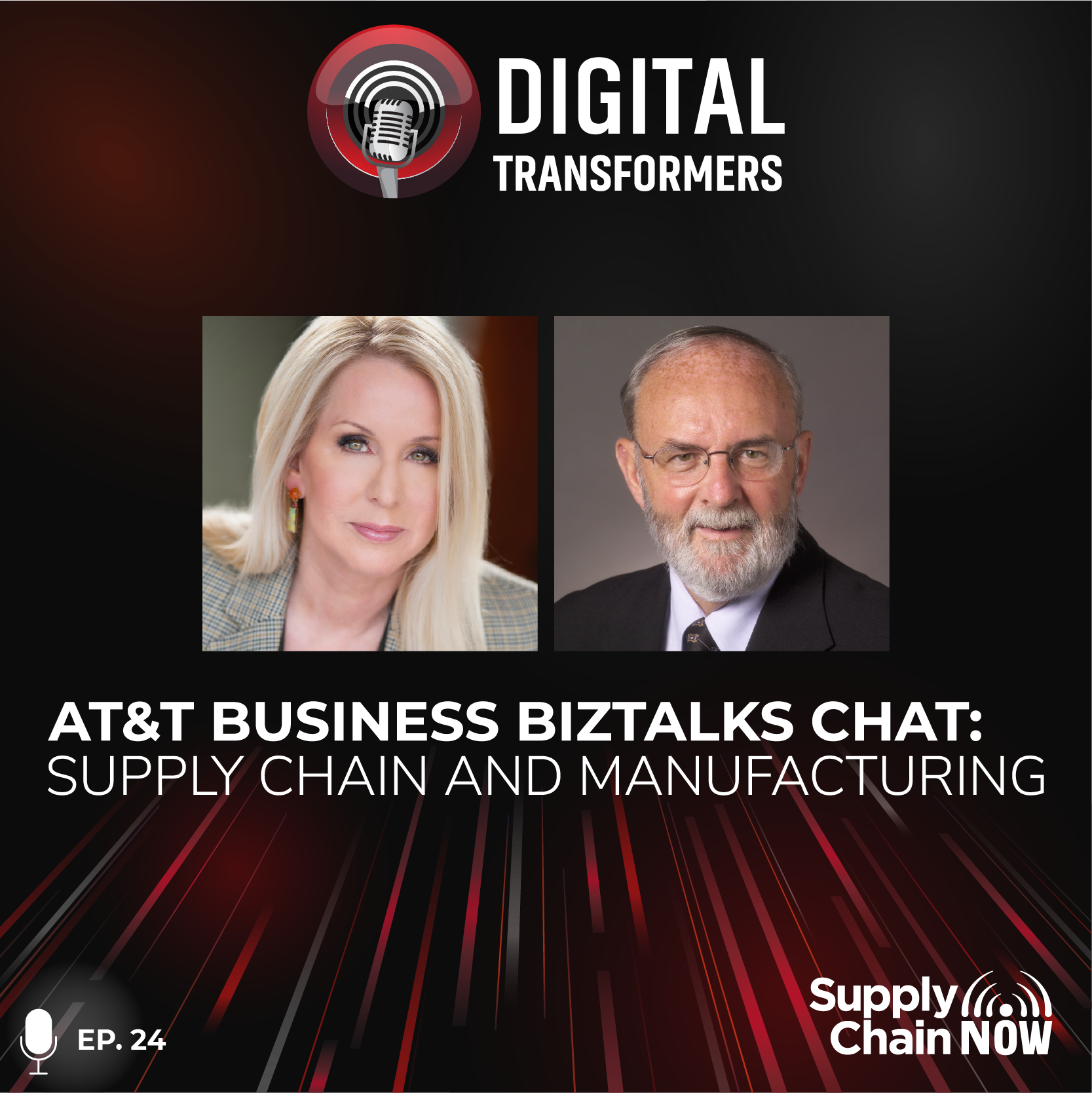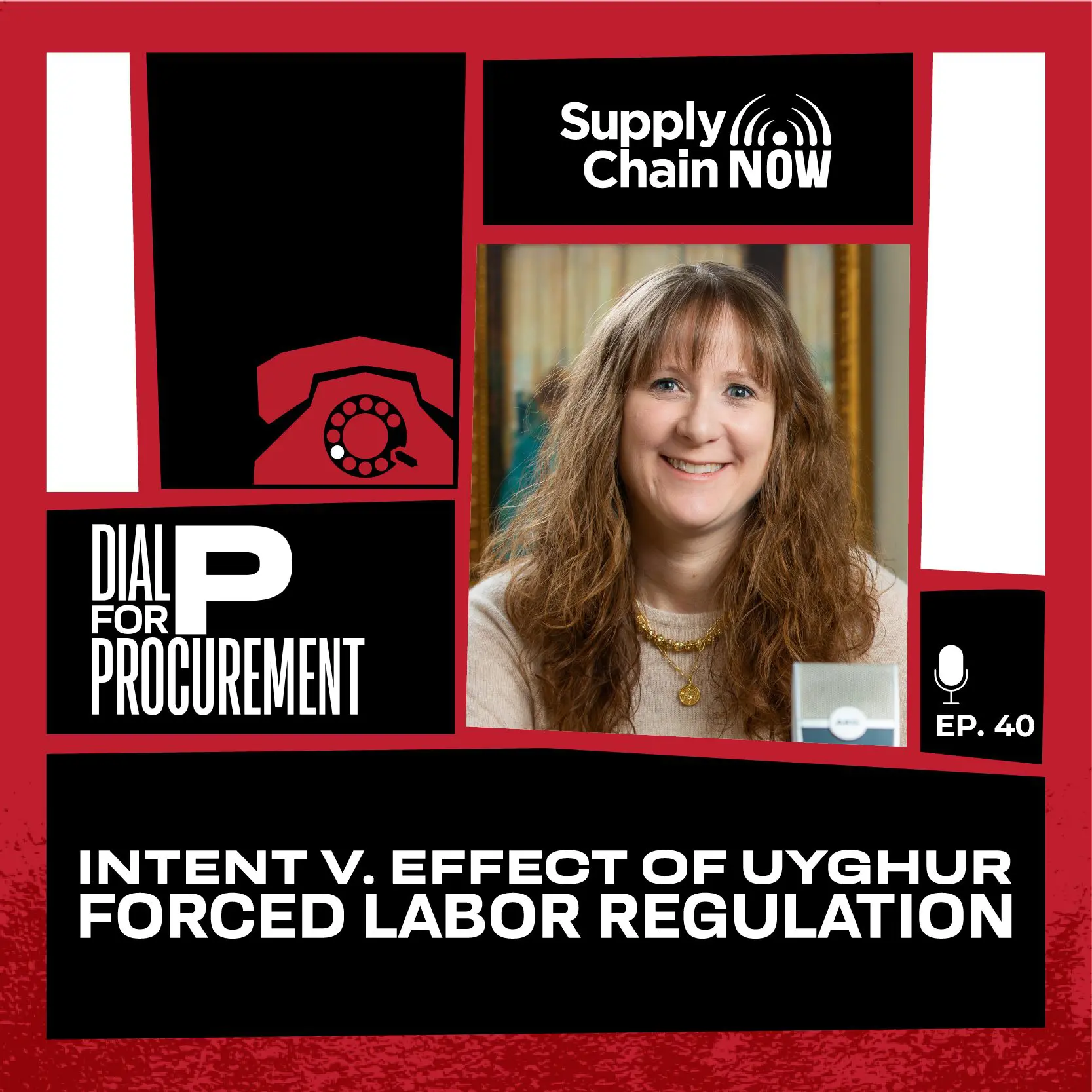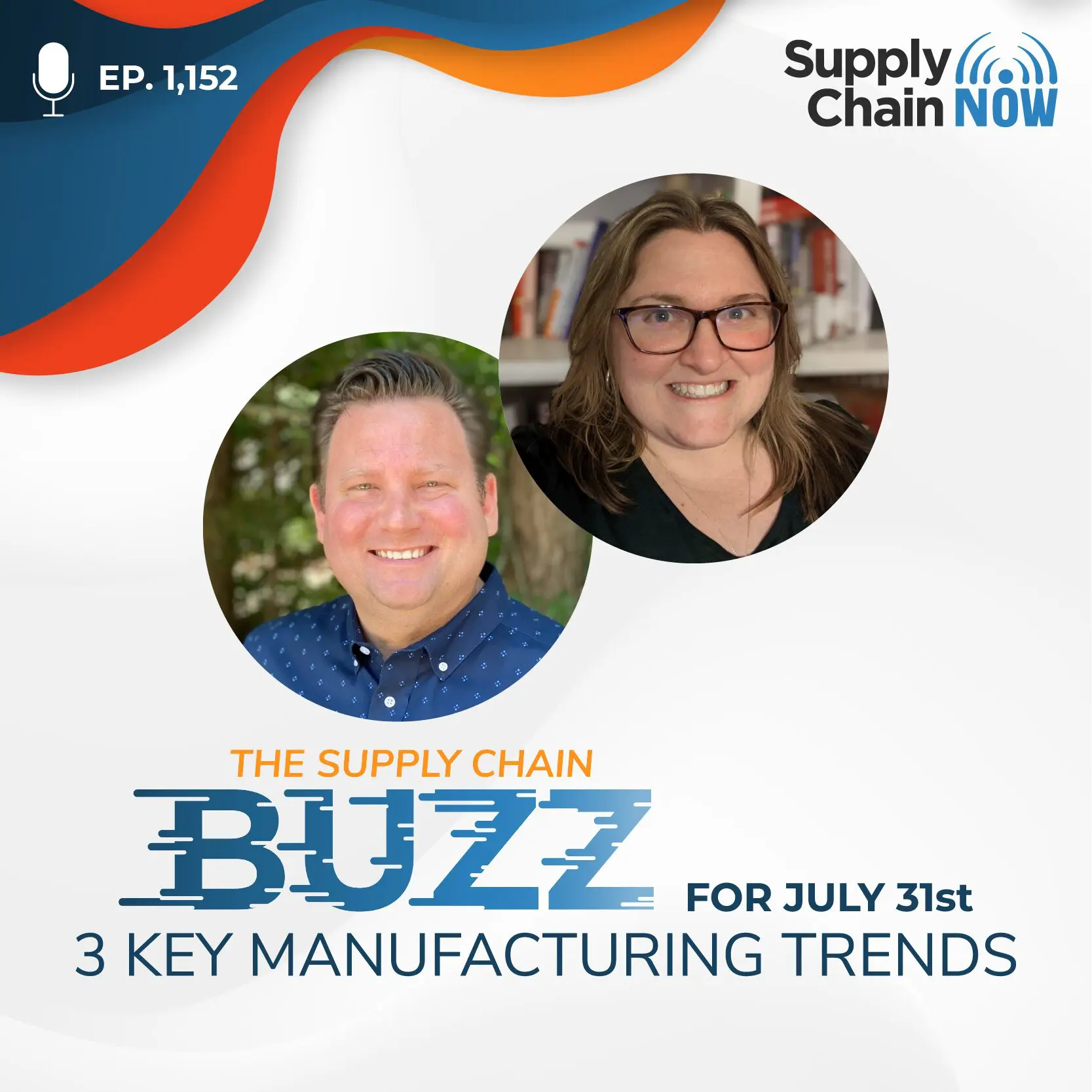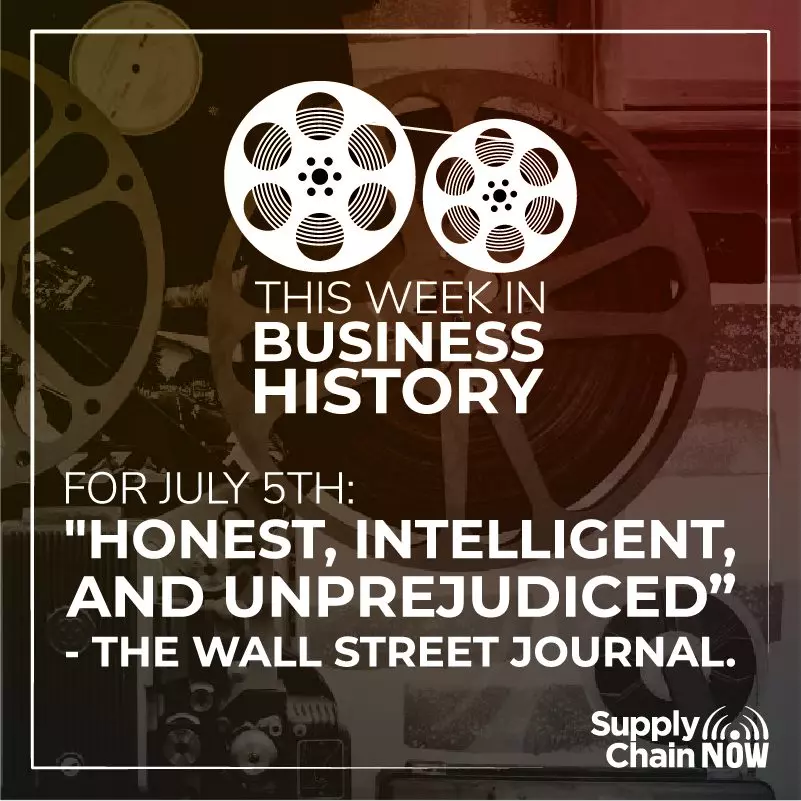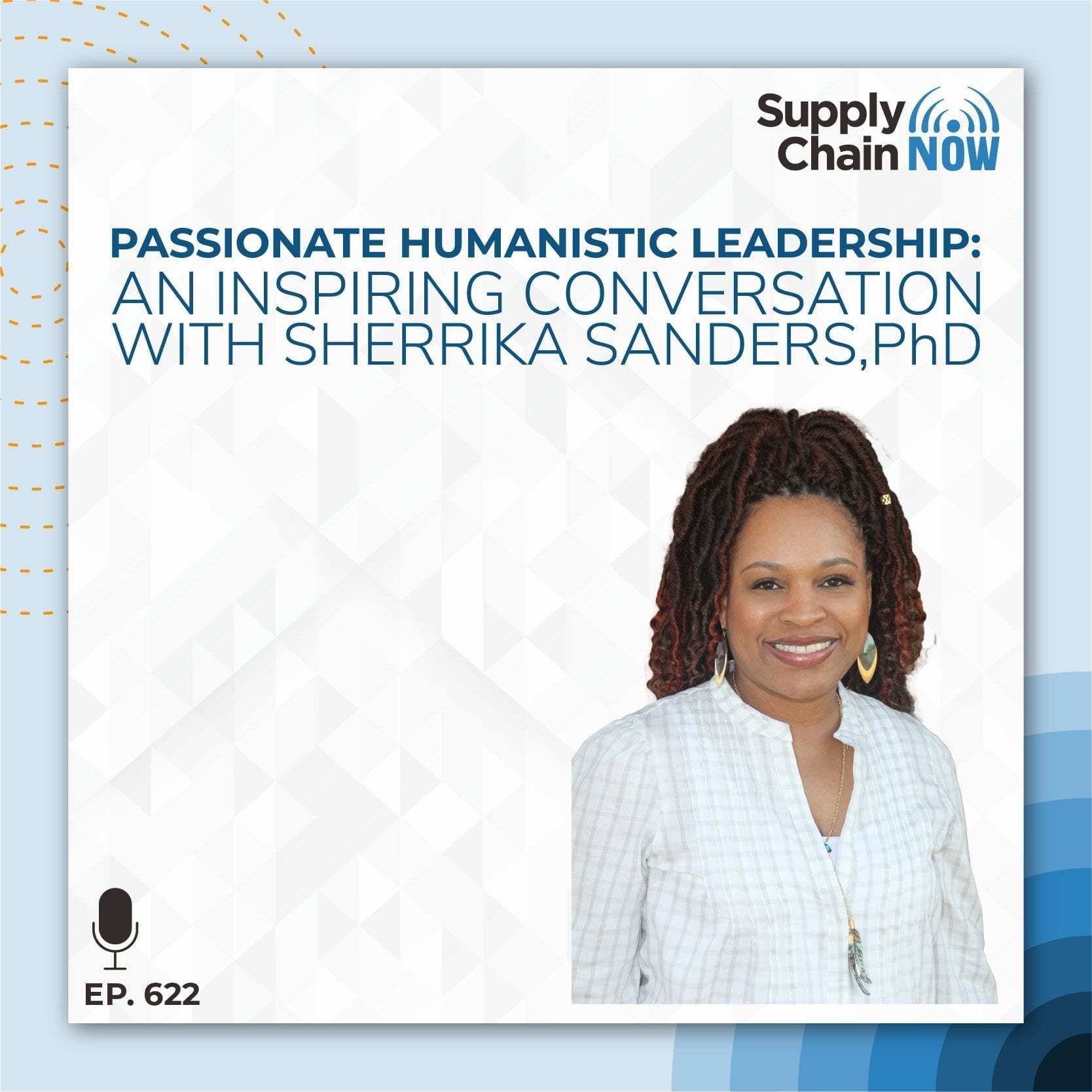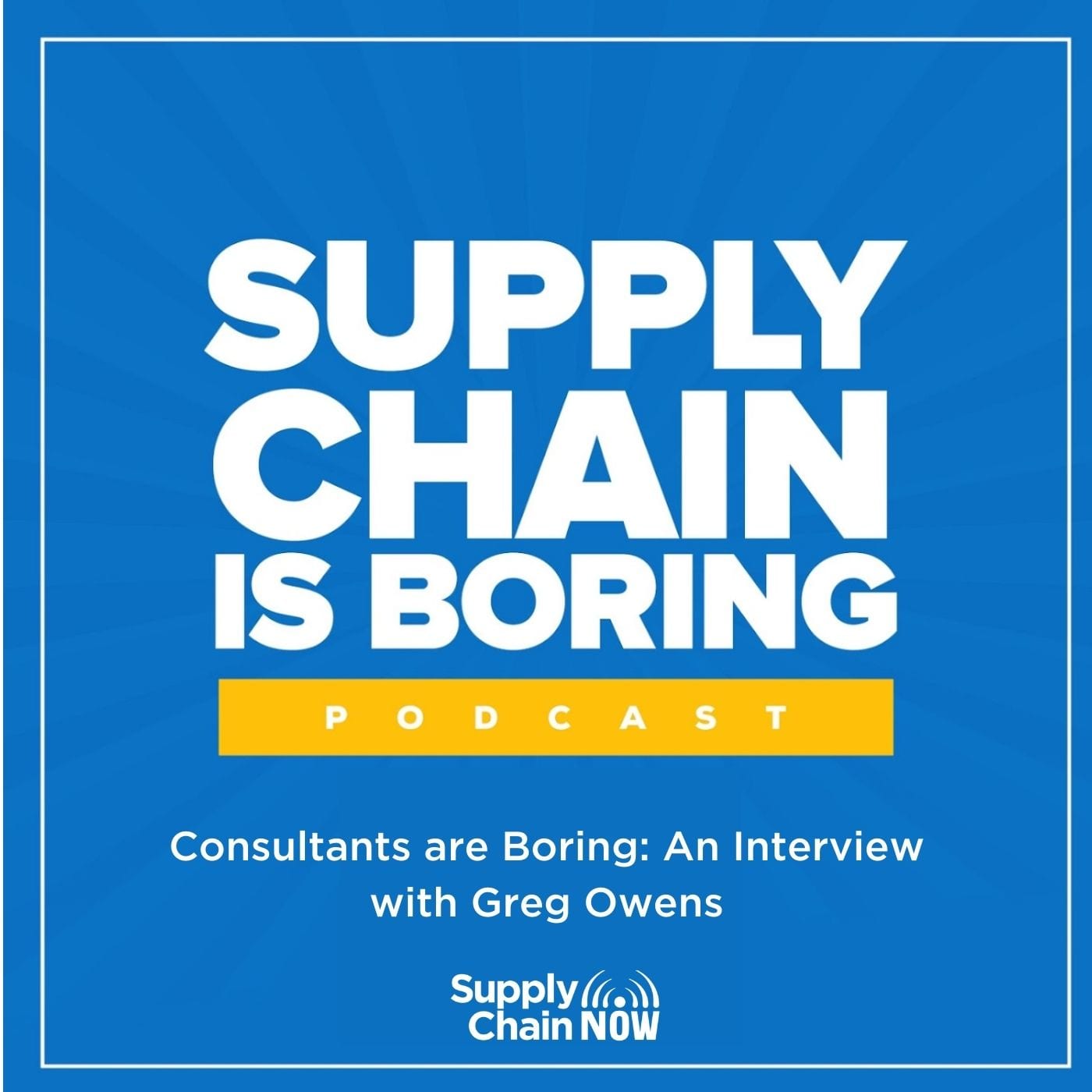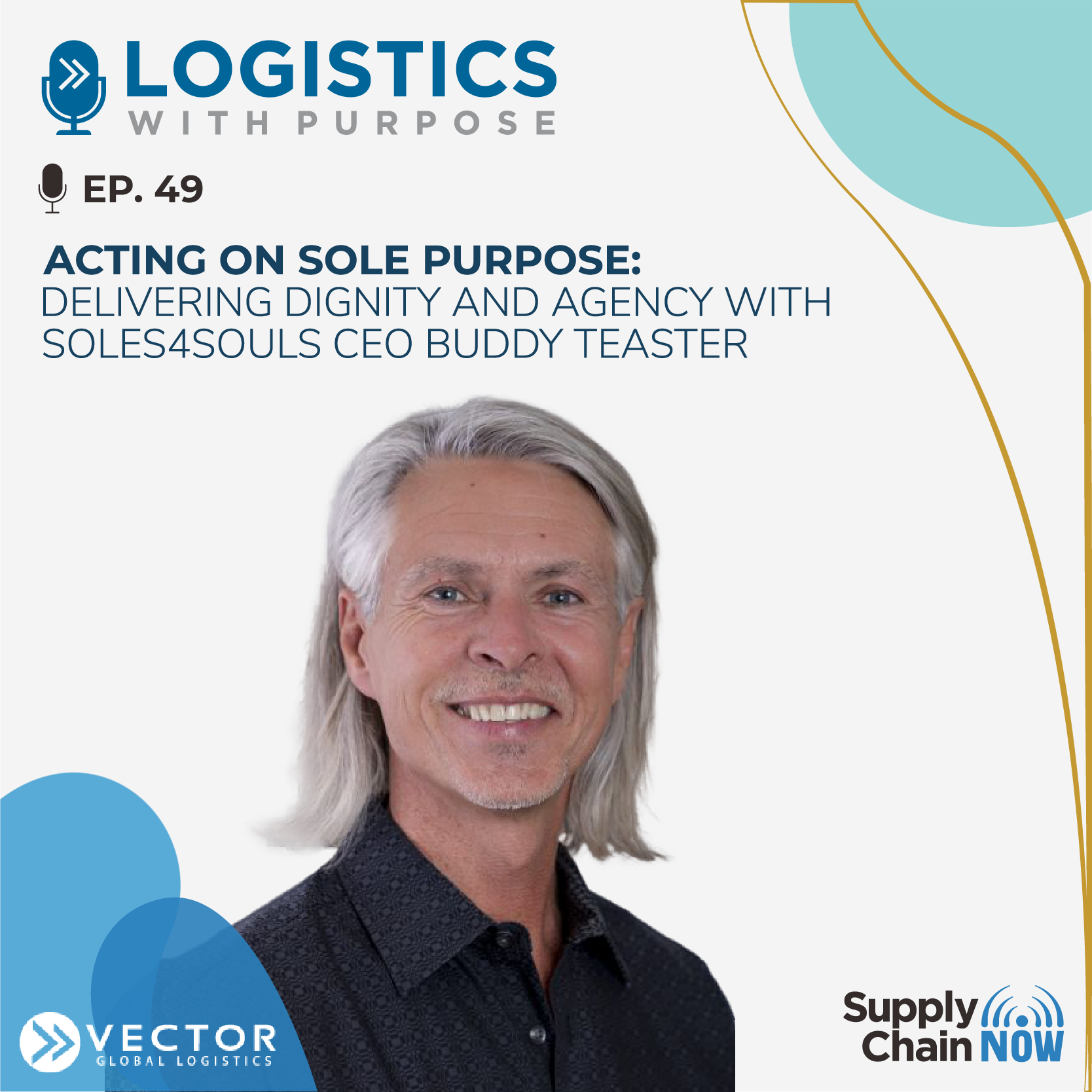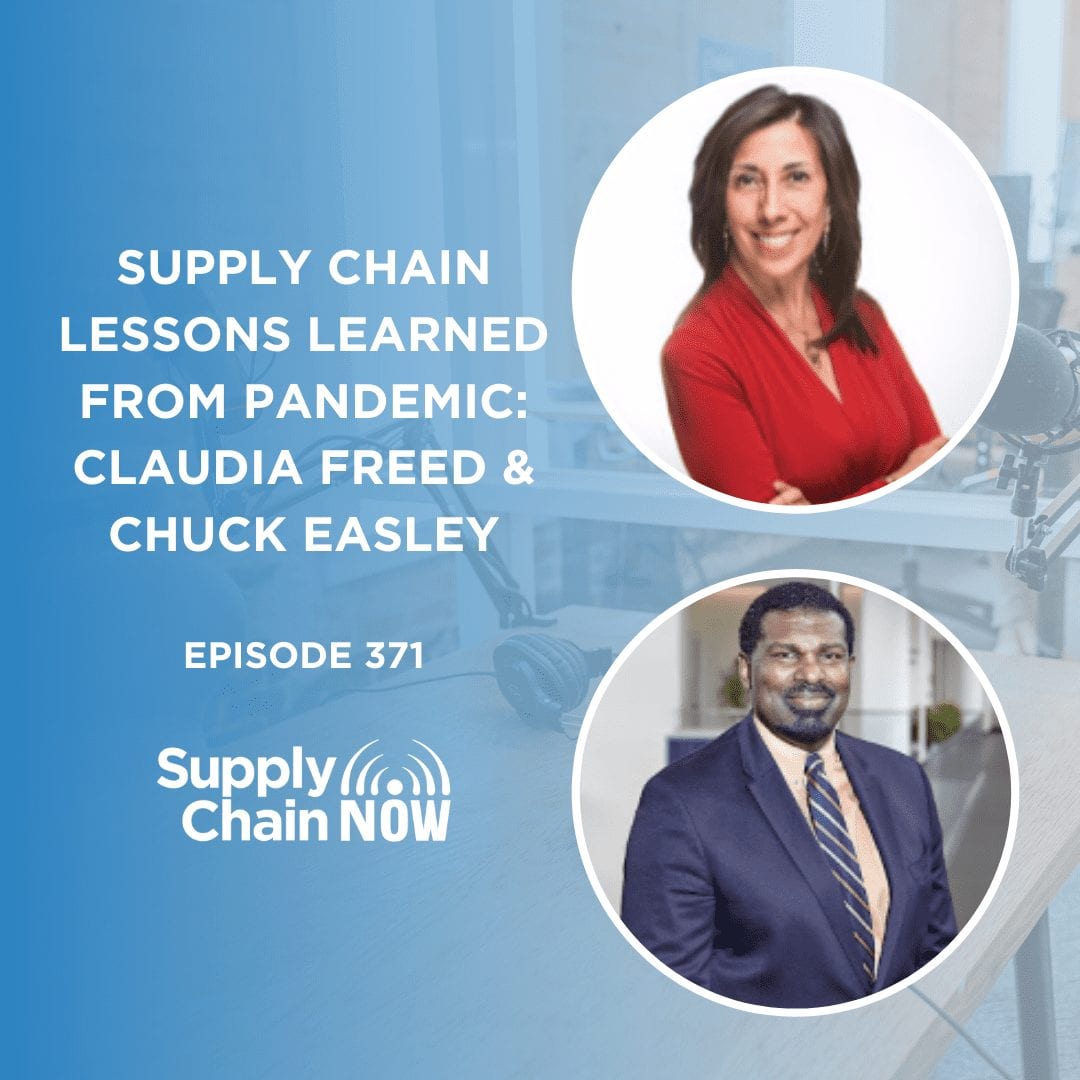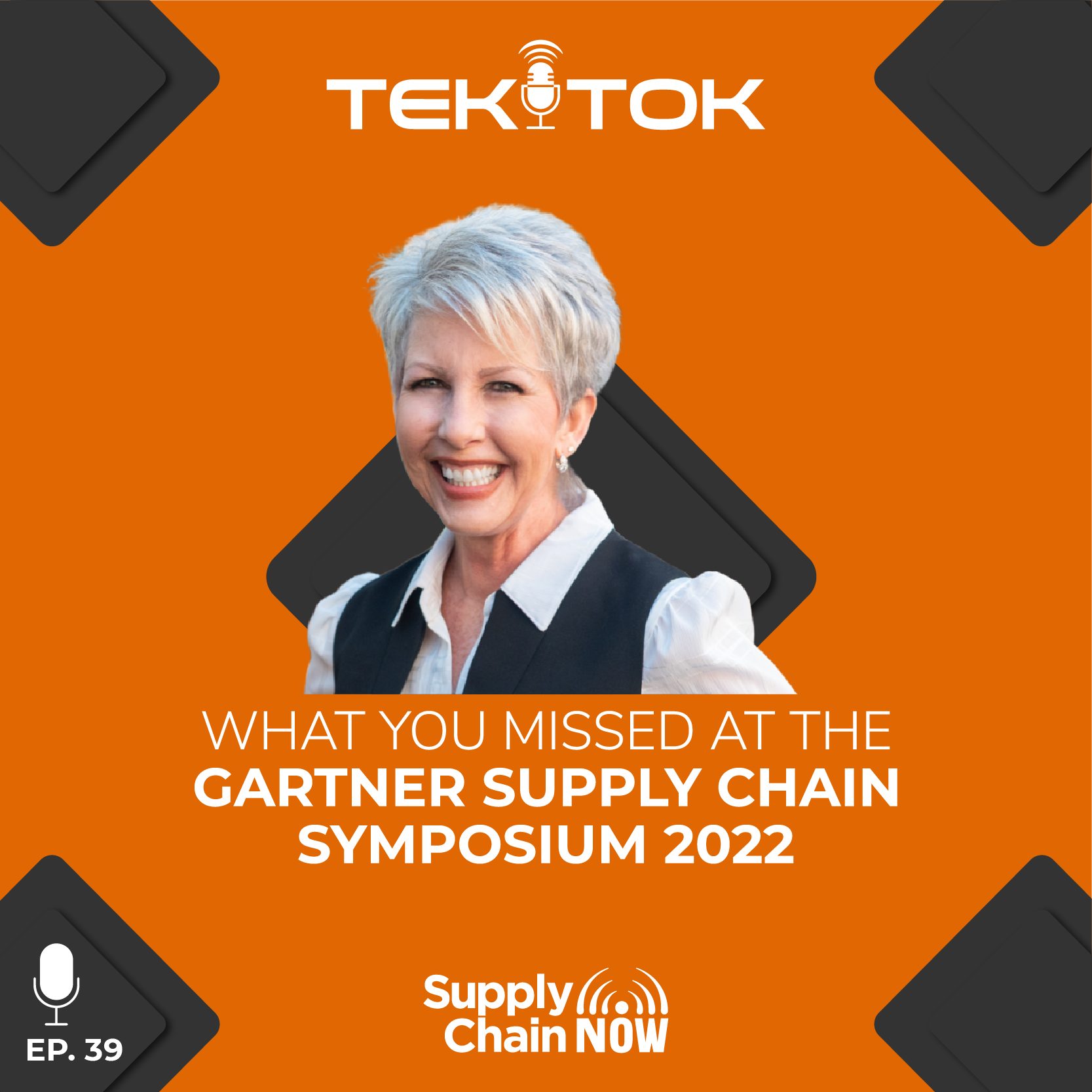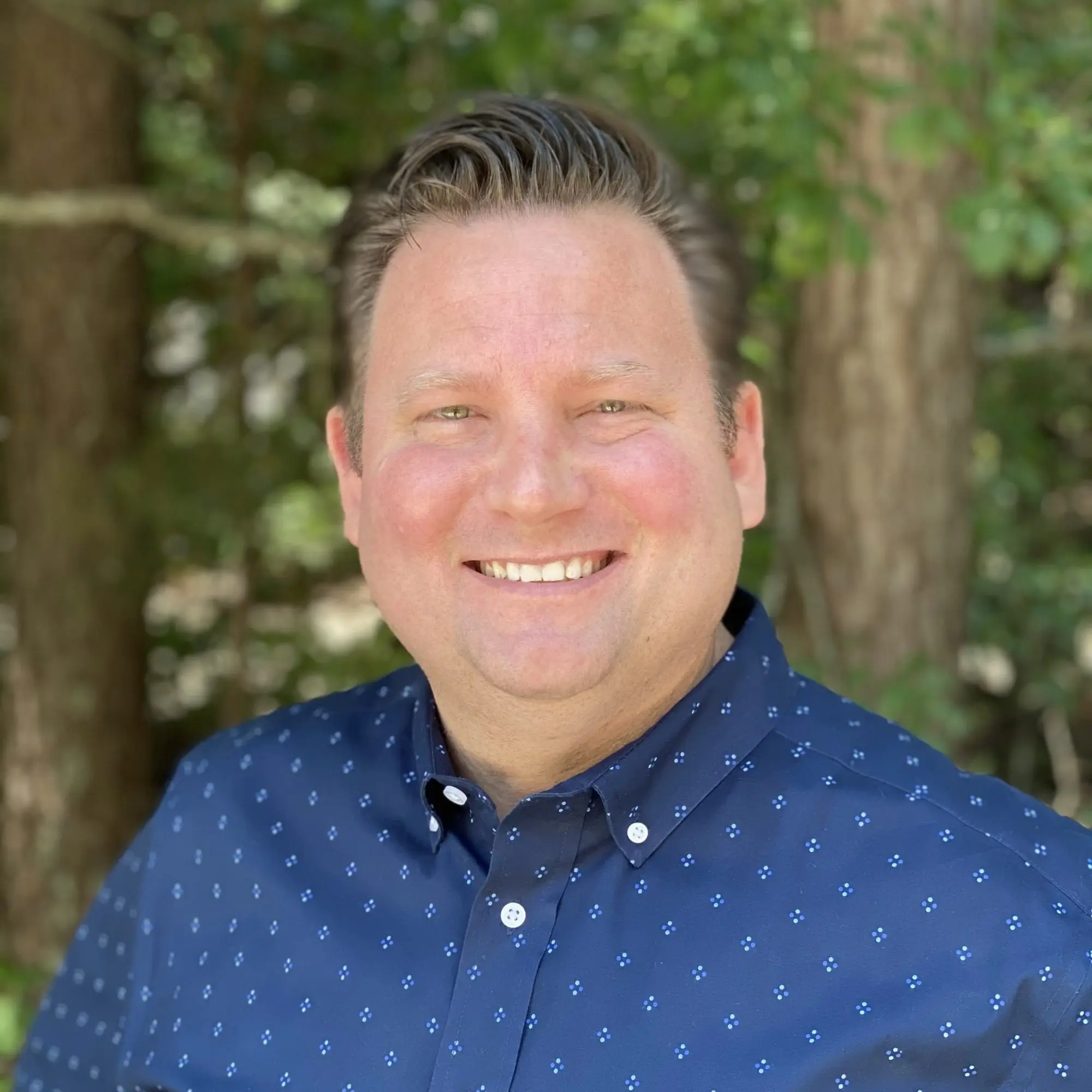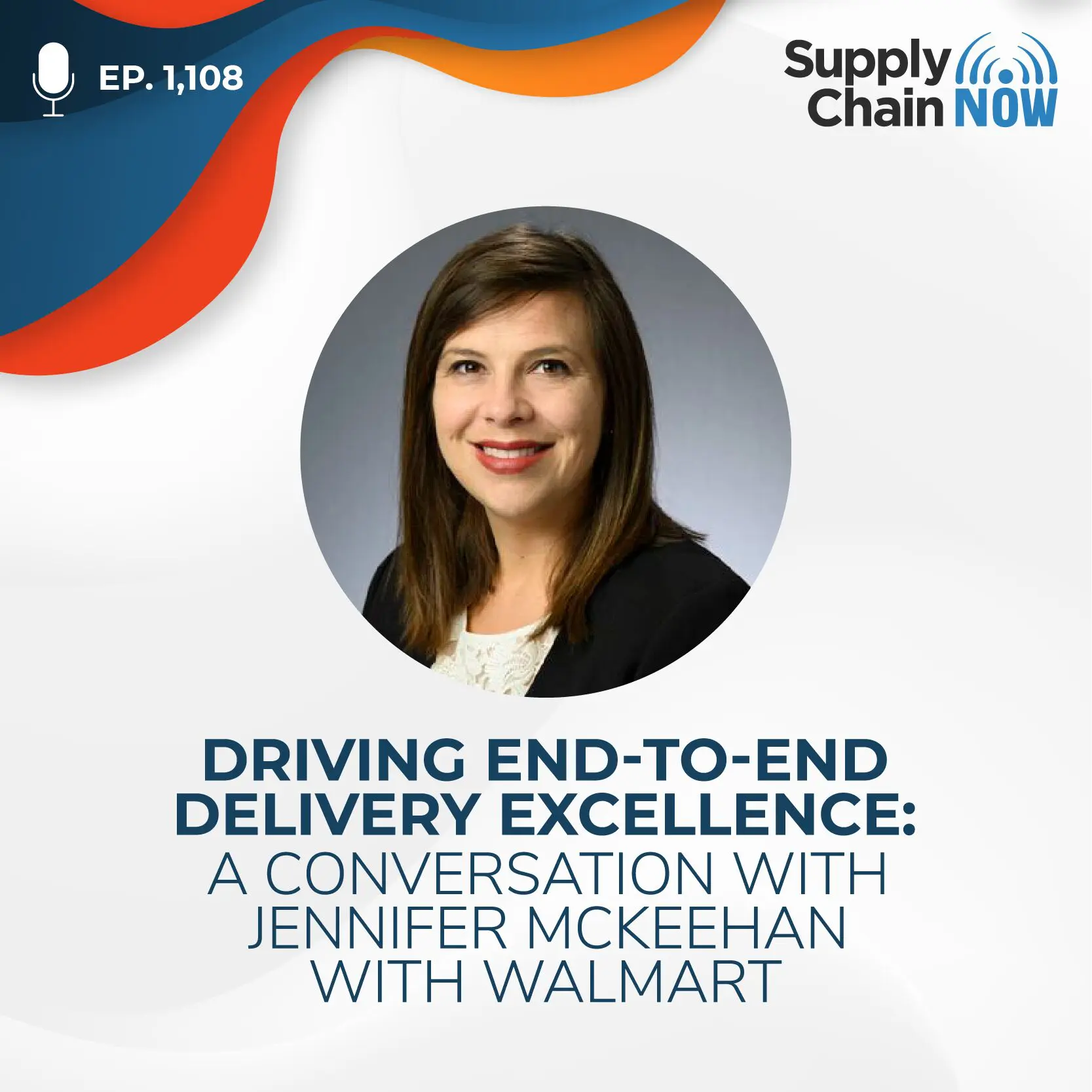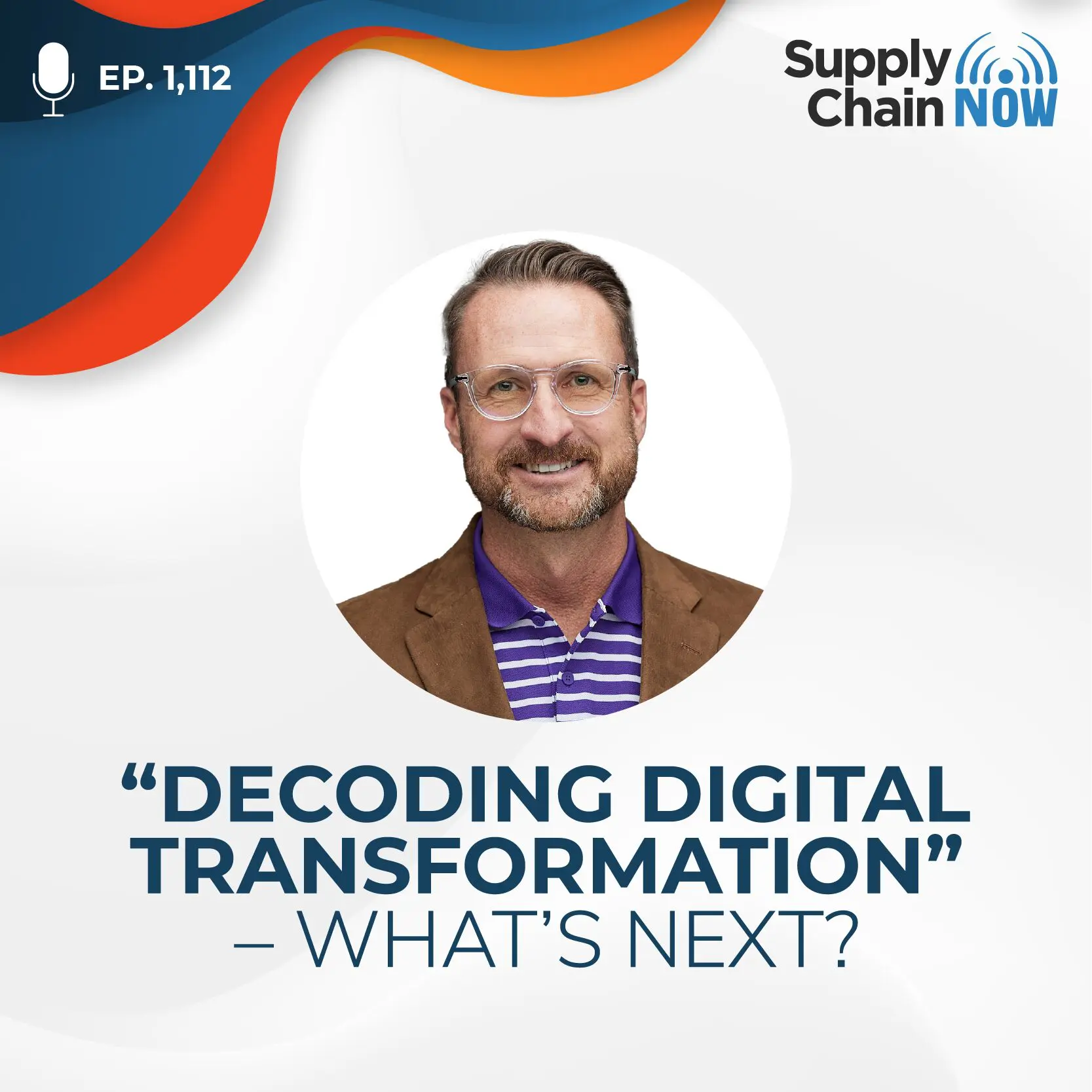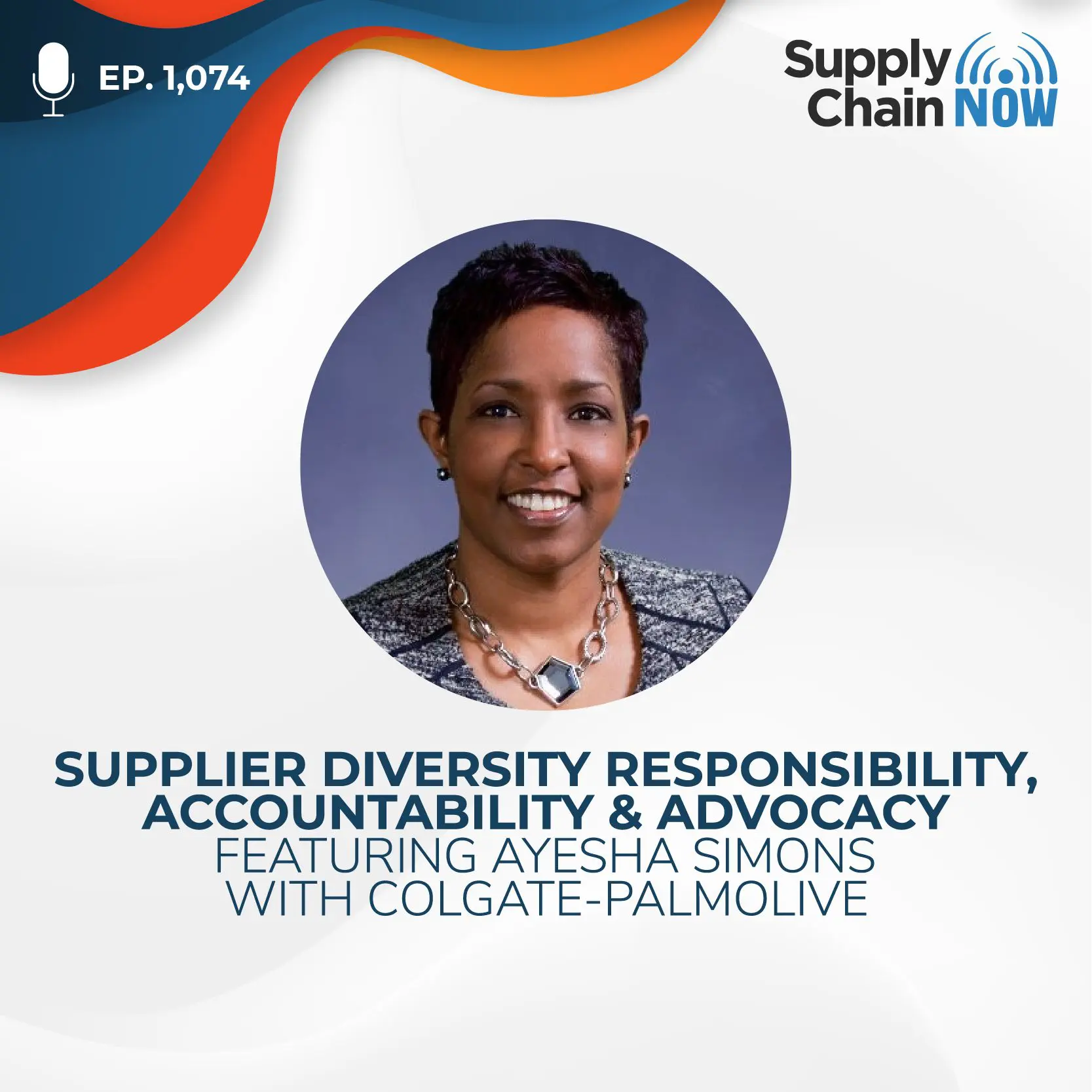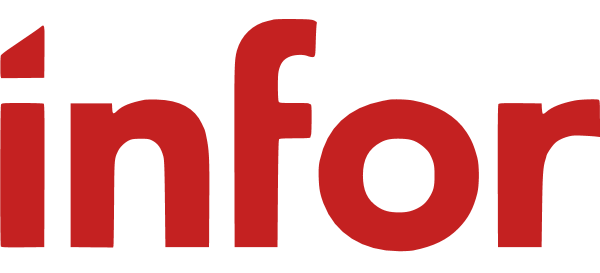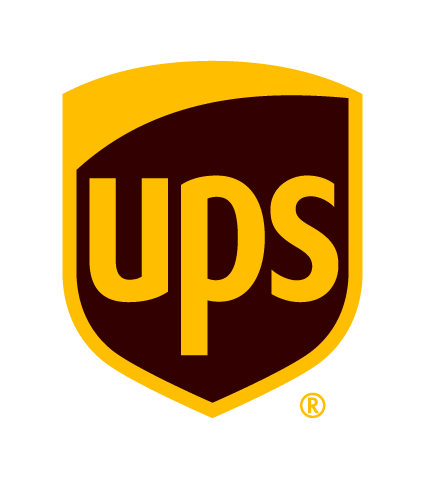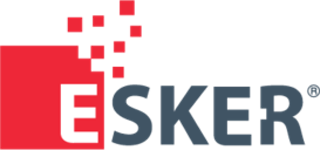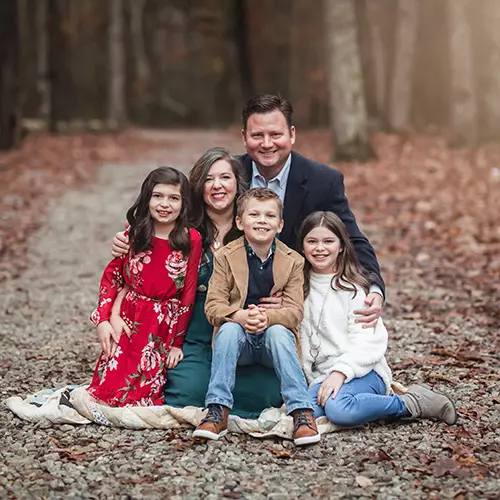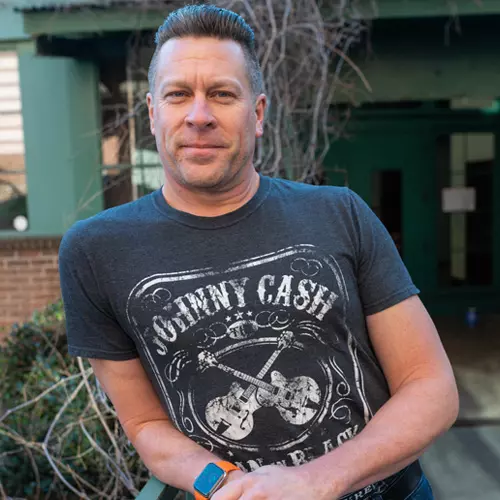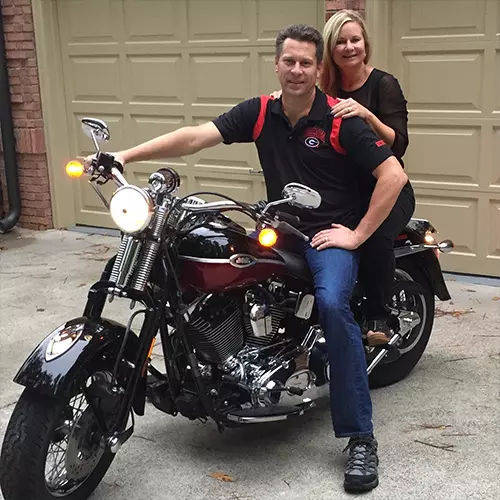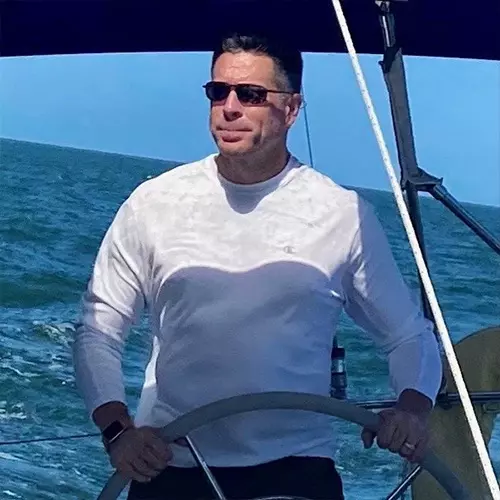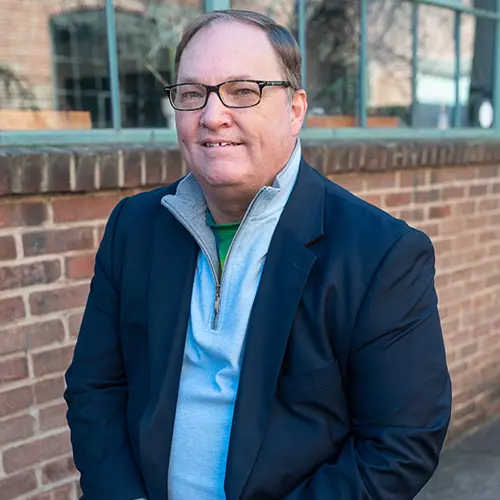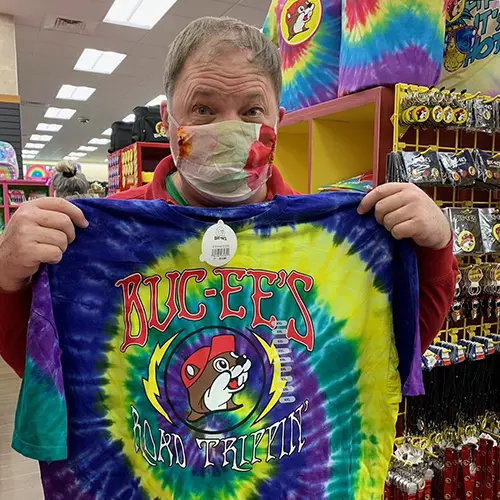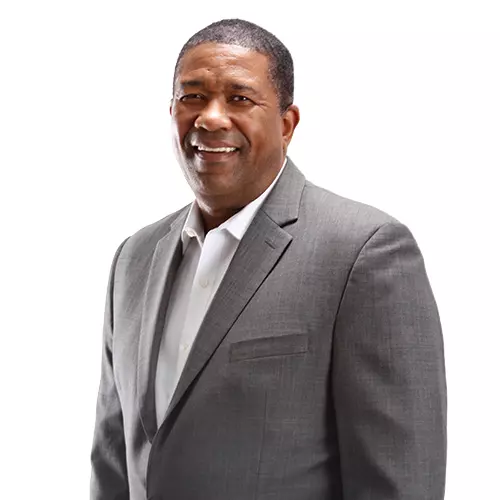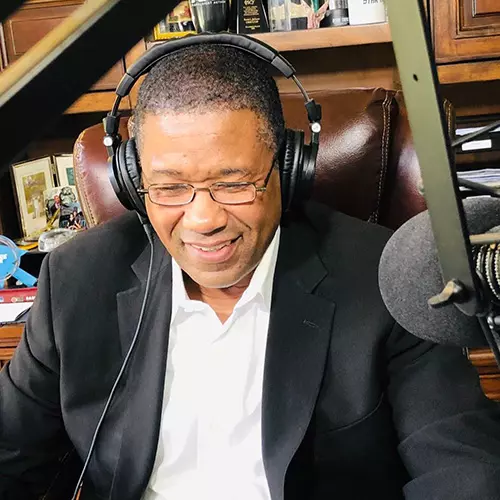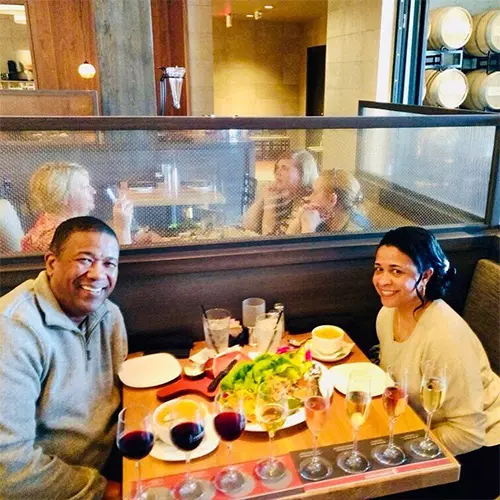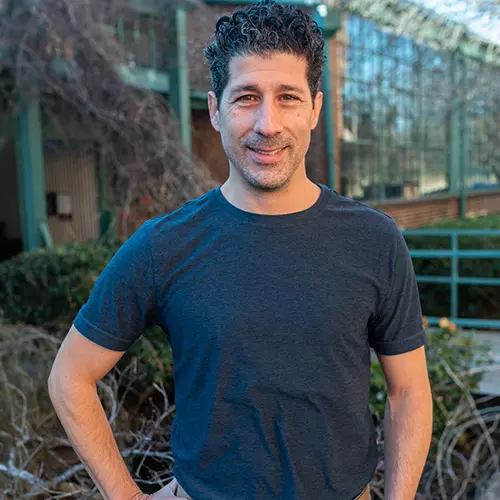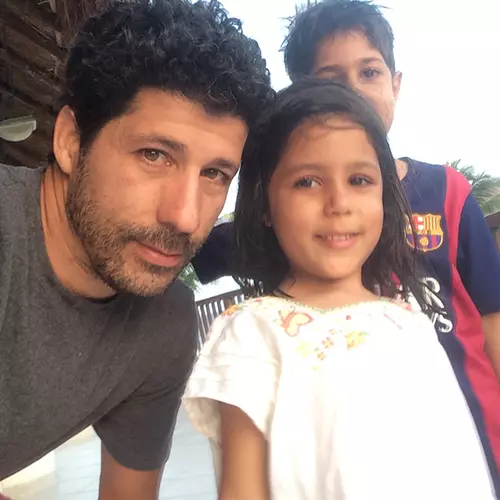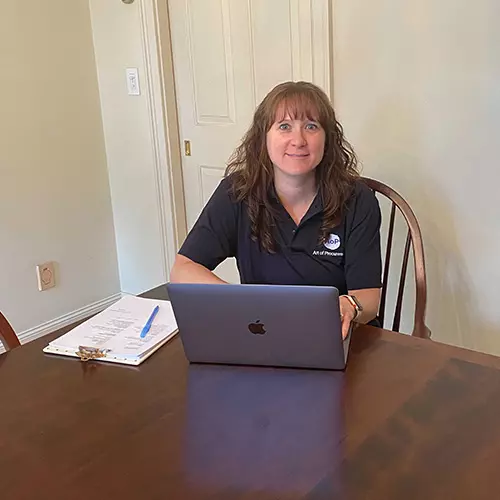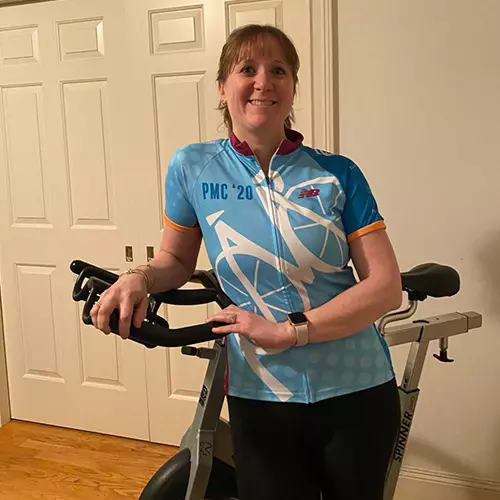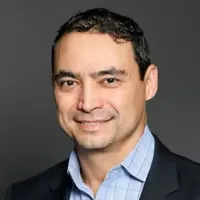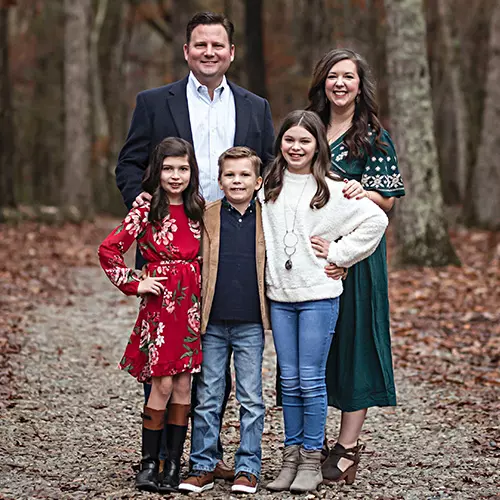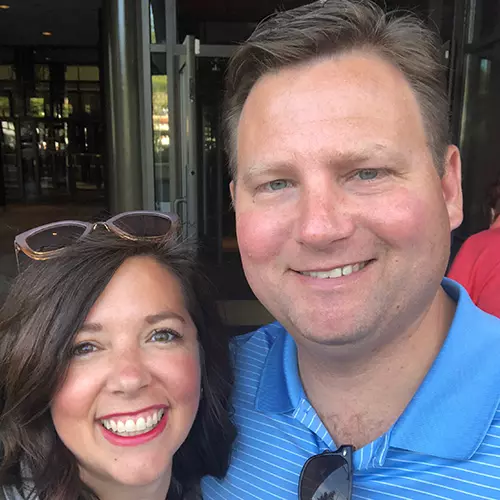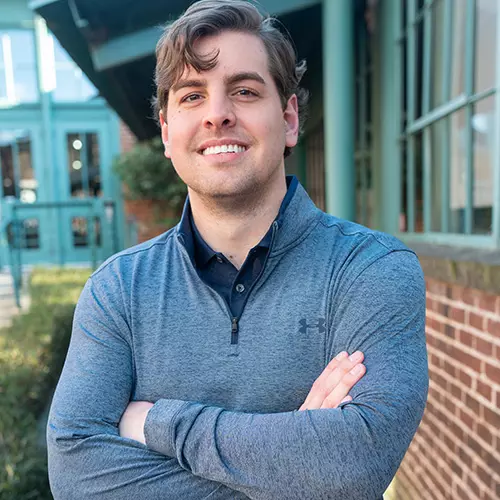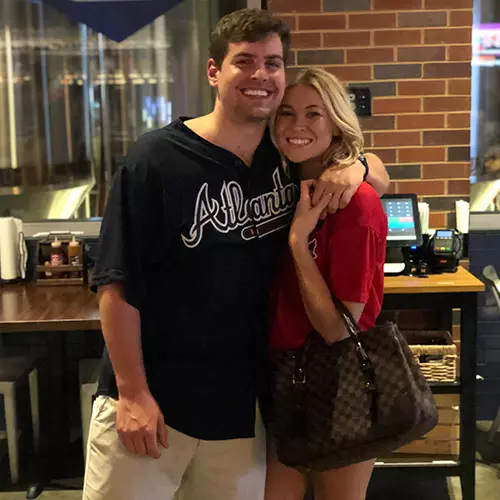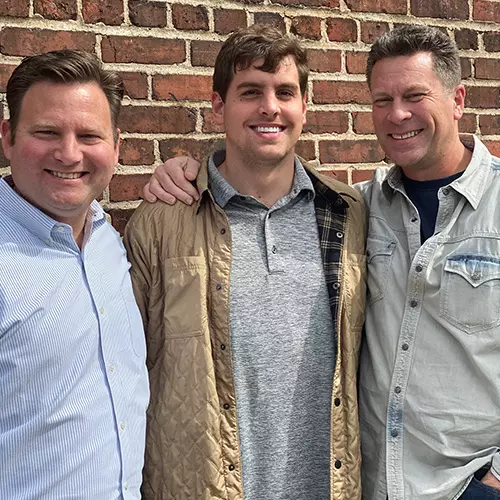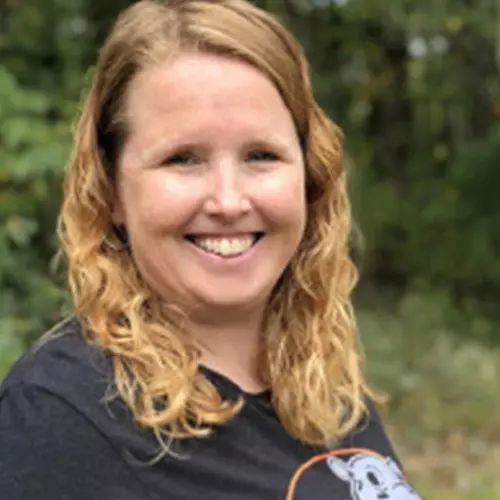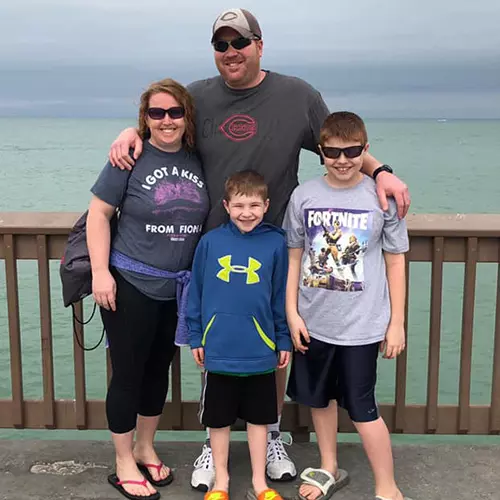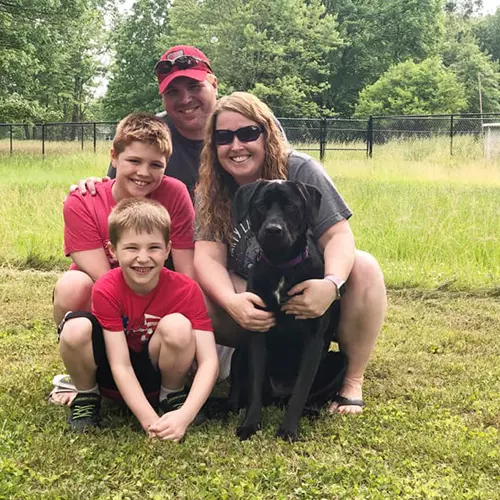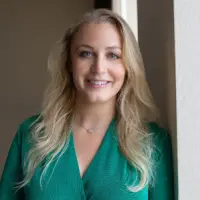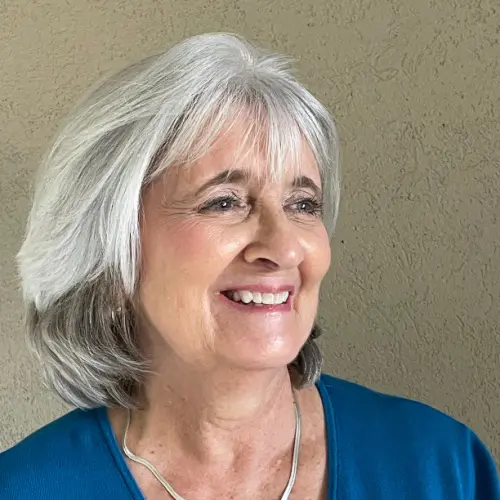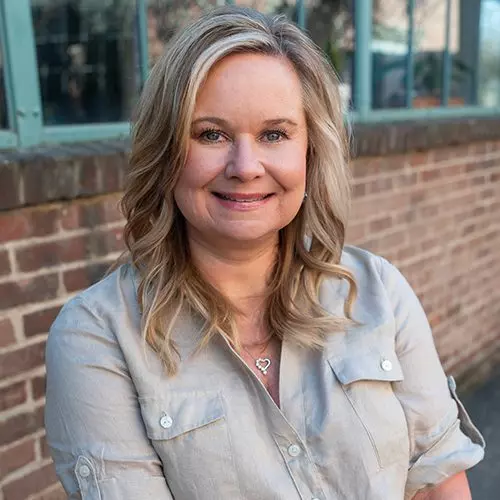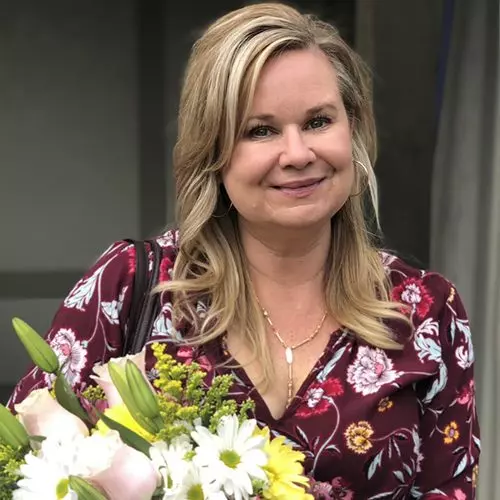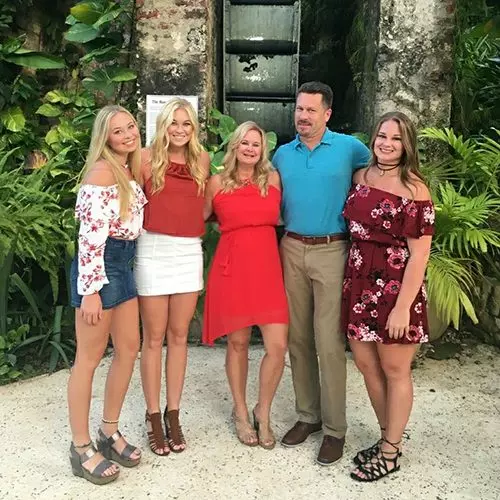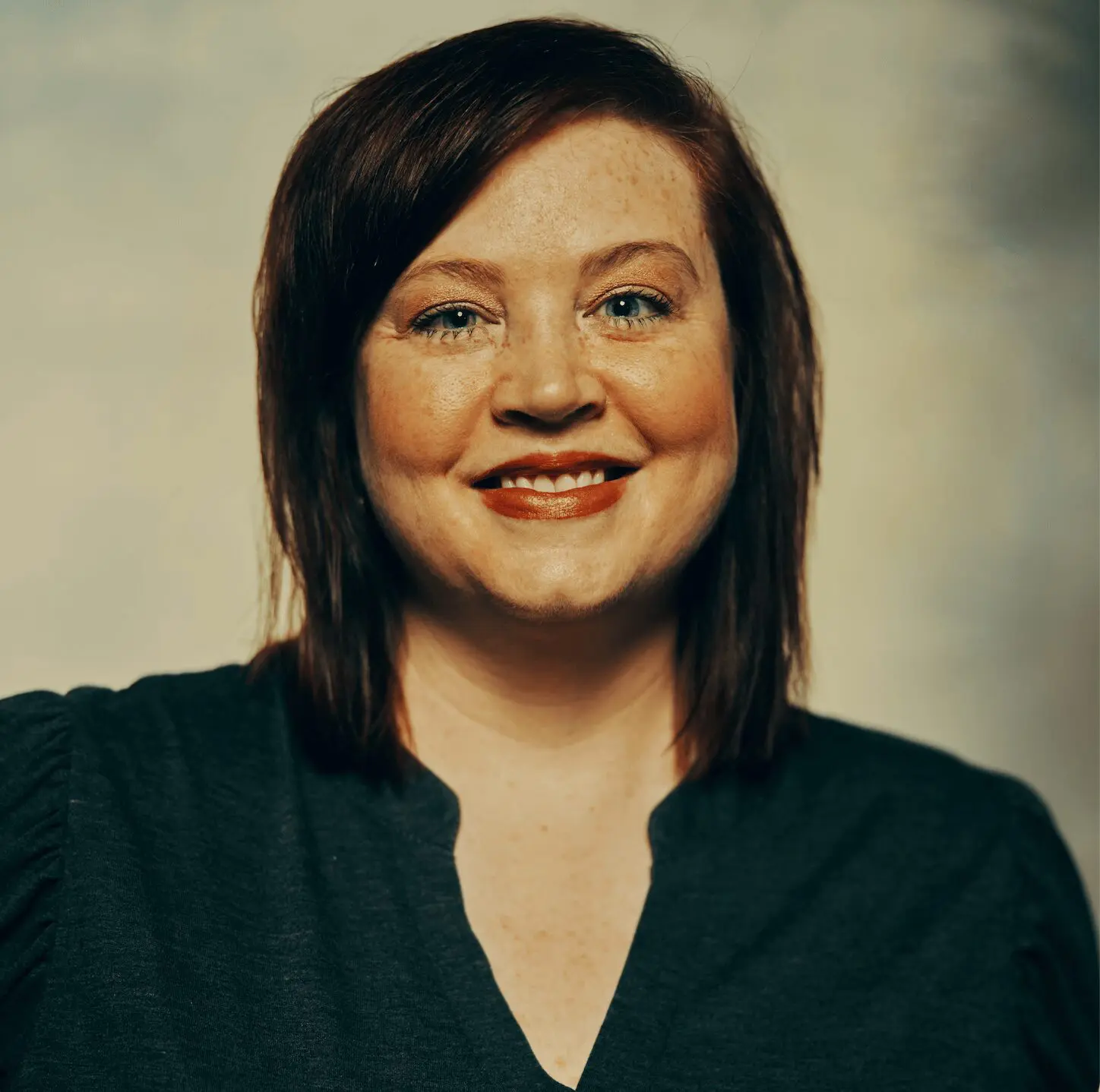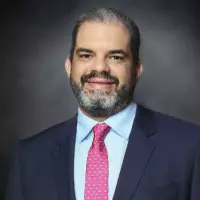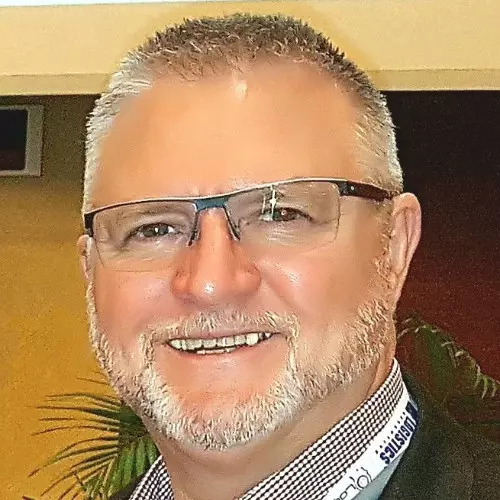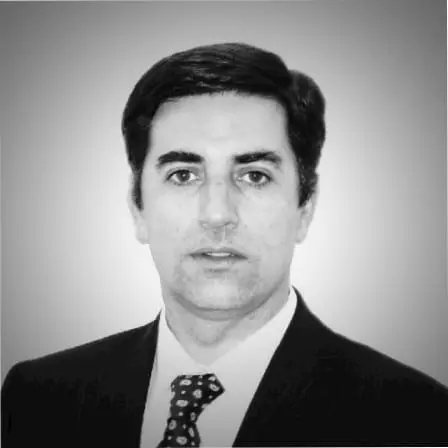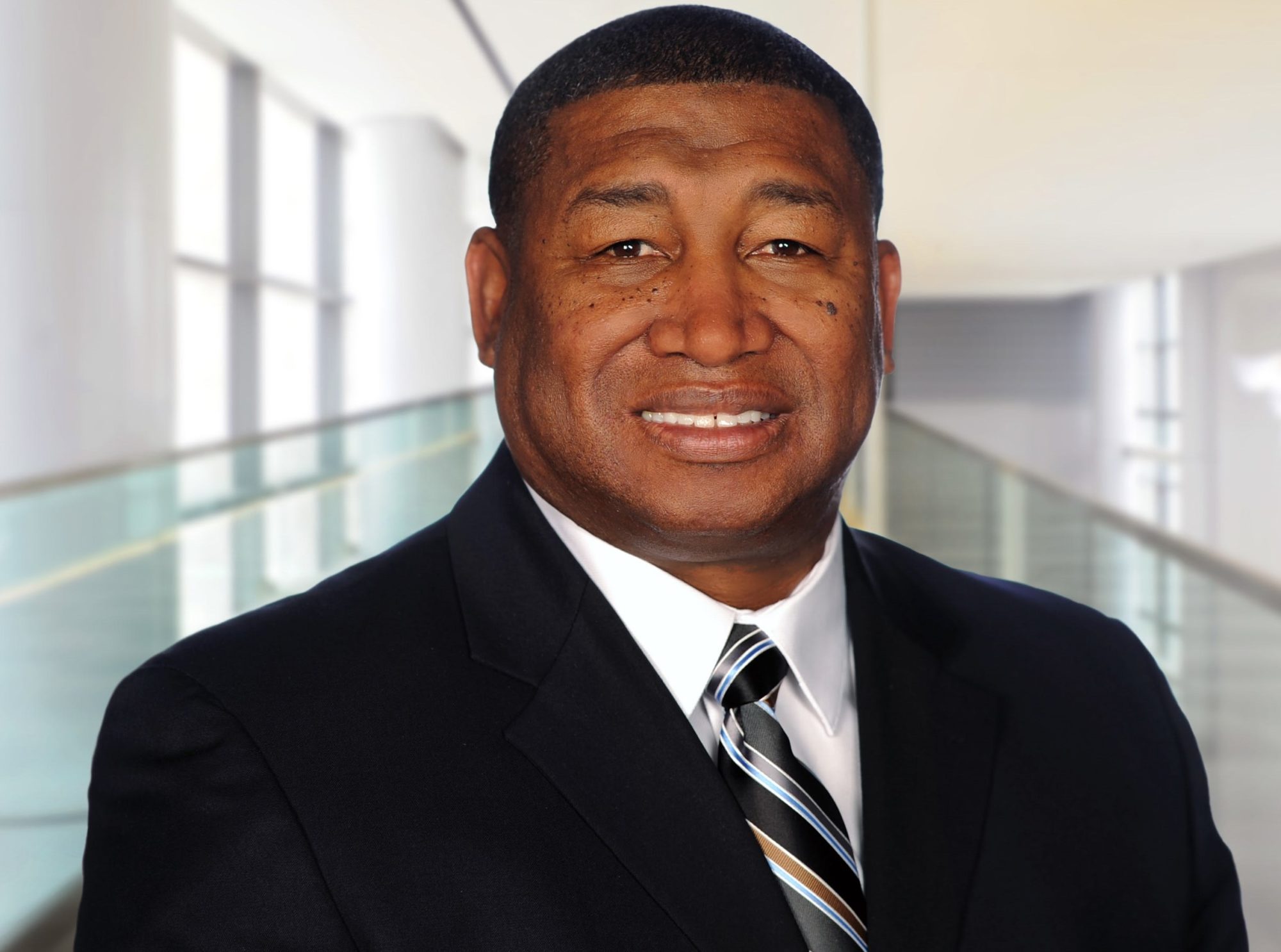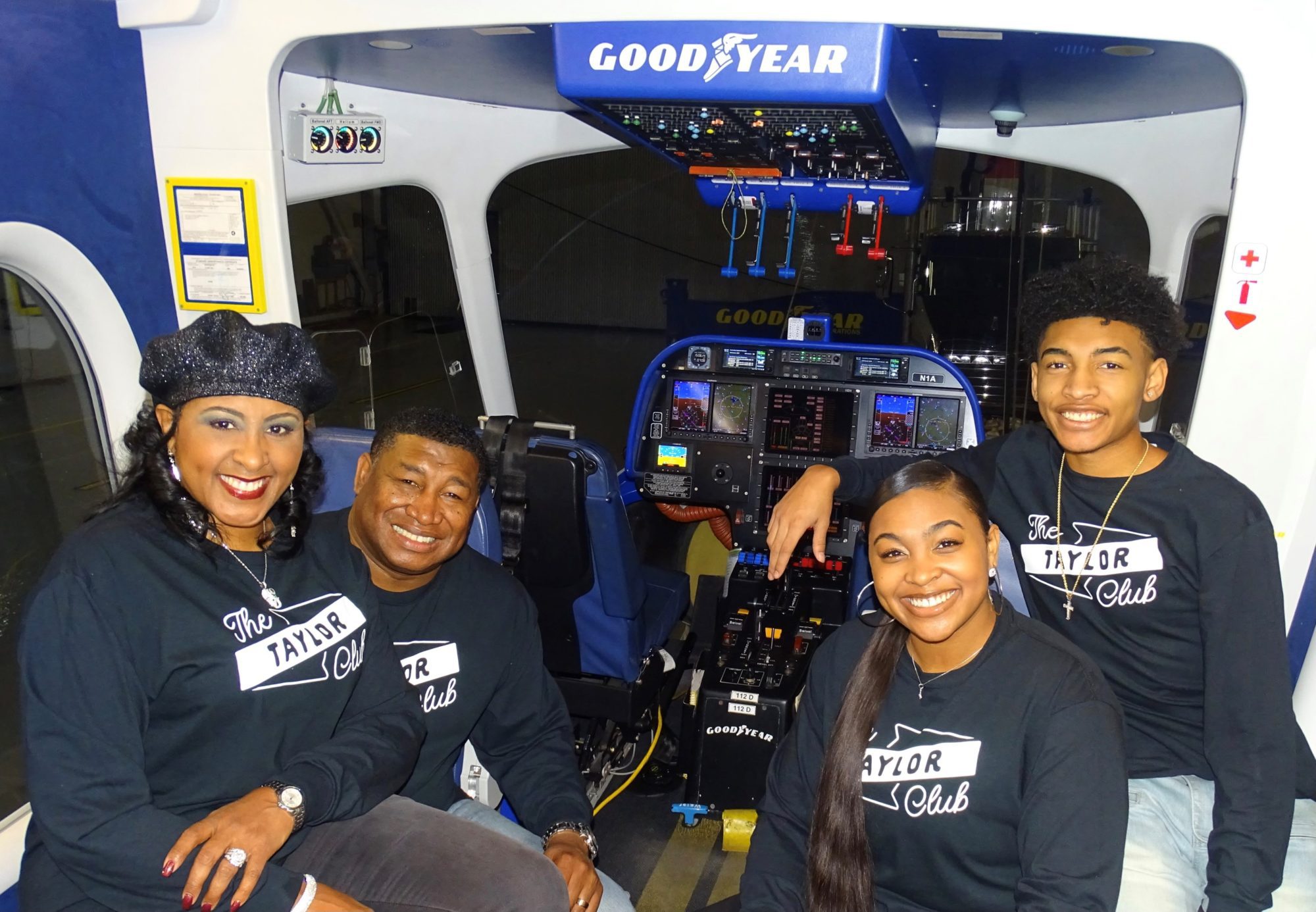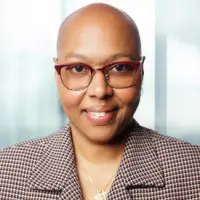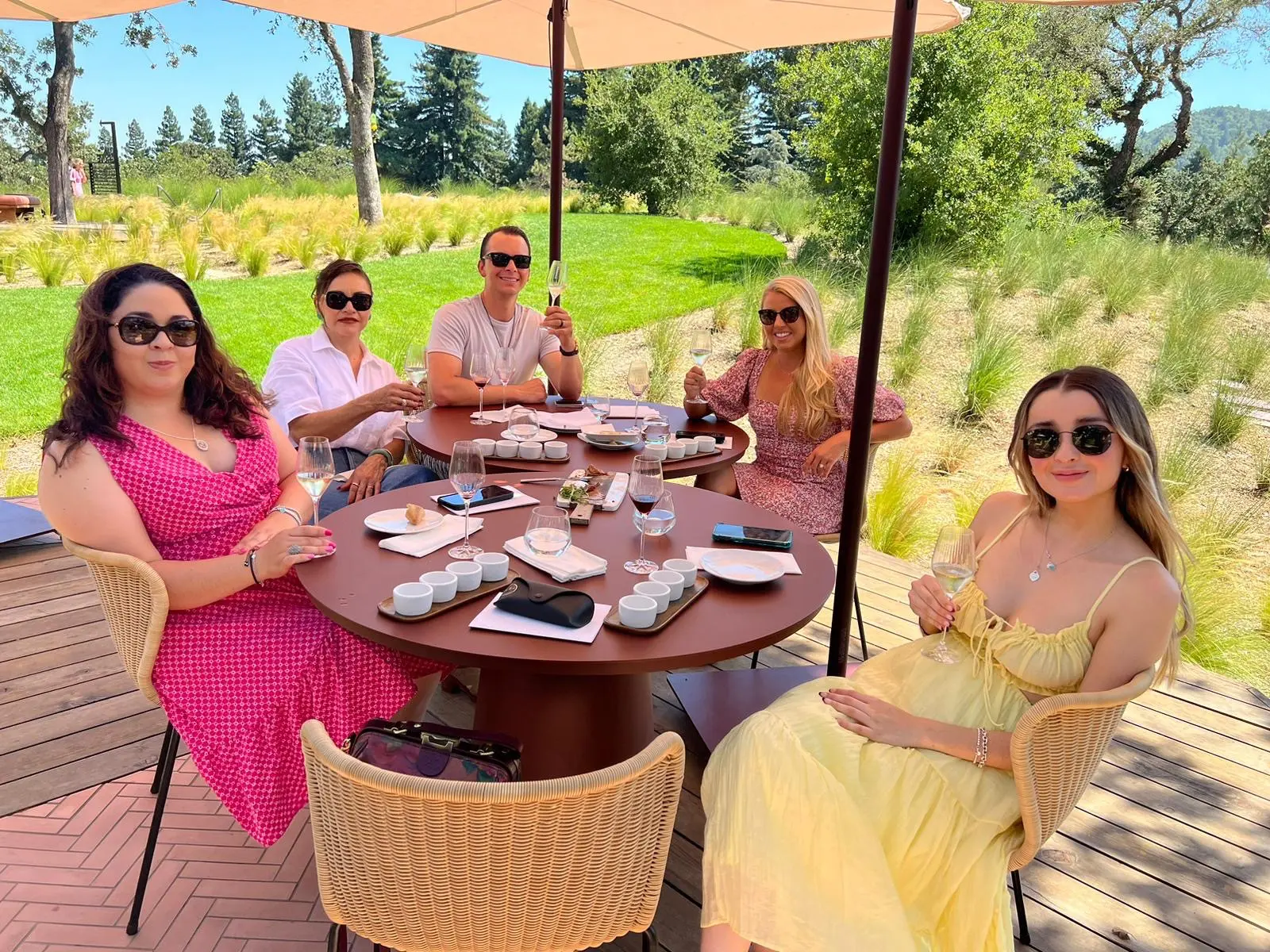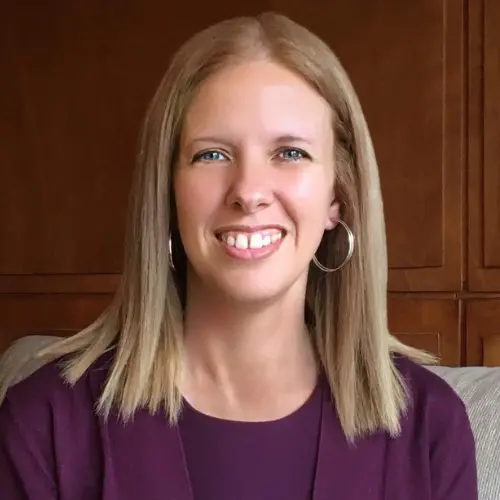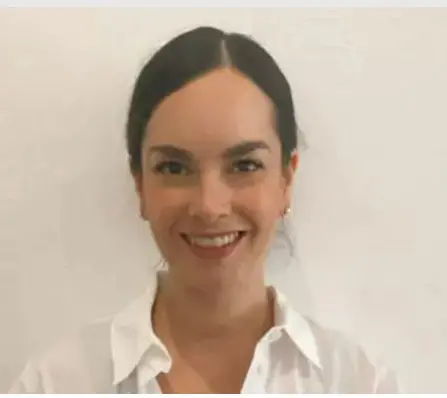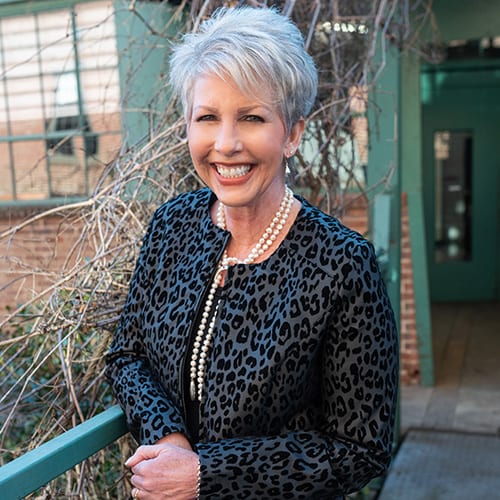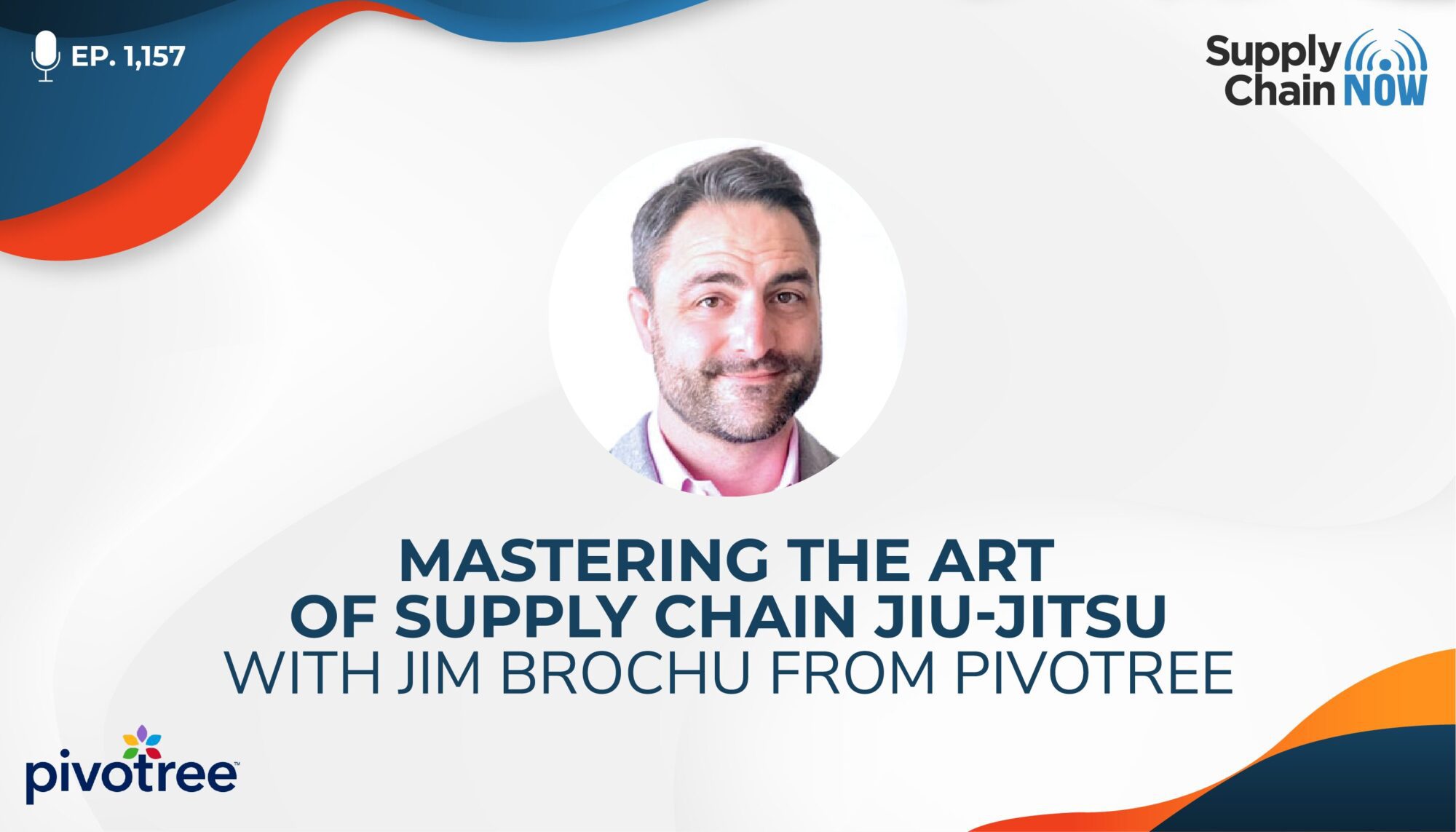
Over the last three or four years, we've seen unprecedented challenges in supply chain. But what that really did was to highlight the vulnerabilities and the complexity of the worldwide supply chain, and it set the industry on fire with a desire to stabilize what's going on.
-Jim Brochu, General Manager, Supply Chain, Pivotree
Episode Summary
Brazilian Jiu-Jitsu is a self-defense martial art and combat sport that requires years of study, intense concentration, and physical self-mastery. It is essentially high-level problem-solving, albeit with potentially dire physical consequences. That combination of characteristics means that it is not entirely unlike supply chain management, especially at the industry-leading level.
Jim Brochu, is the General Manager for the supply chain division at Pivotree, a leader in frictionless commerce that designs, builds, and manages digital platforms for over 250 major retail and branded manufacturers globally.
In this video interview, Jim shares his perspective on problem-solving and frictionless commerce with hosts Scott Luton and Constantine Limberakis:
• What the concept of frictionless commerce means, and what it should look and feel like from the customer’s perspective
• Opportunities that exist for companies to (truly) optimize their supply chain operations given what everyone has learned over the last few years
• The role that technology can play in helping supply chain teams reduce friction, improve sustainability, enhance collaboration, and increase visibility
Episode Transcript
Intro/Outro (00:04):
Welcome to Supply Chain. Now the voice of global supply chain supply chain now focuses on the best in the business for our worldwide audience, the people, the technologies, the best practices, and today’s critical issues, the challenges and opportunities. Stay tuned to hear from Those Making Global Business happen right here on supply chain now.
Scott Luton (00:33):
Hey. Hey everybody. Good morning, good afternoon, good evening. We’re wherever you are, Scott Luton and special guest host Constantine Li here with you on Supply Chain. Now, welcome to today’s show. Hey, hey Constantine. How you doing today?
Constantine Limberakis (00:46):
Doing great. It’s Friday start of the weekend.
Scott Luton (00:49):
It is, and we’ve got a big weekend planned. Some fun stuff, some work stuff, but hey, the best part of it is we’ve got a great conversation teed up here today. And as you know, we’re gonna be talking with a business leader doing big things out in industry, especially when it comes to providing frictionless, I love that word, frictionless experiences for brands and their customers around the world. Should be a great discussion, Constantine, is that right? Yeah,
Constantine Limberakis (01:16):
Absolutely. Looking forward to it.
Scott Luton (01:17):
And to our listeners out there, if you hear me refer to Dino, that is my dear friend Constantine’s nickname. So call him Constantine, call him Dino, any other, just call him, right? Just reach out and and connect with him. Is that right Constantine? Yeah.
Constantine Limberakis (01:32):
Always open for conversation.
Scott Luton (01:34):
Always open for a conversation. Alright, so we got a great one teed up here today. So with that said, I wanna introduce our featured guests here today. Jim Brochu, general Manager, supply chain at Pry. Jim, how you doing today?
Jim Brochu (01:48):
I’m doing really well, Scott. Thanks for having me.
Scott Luton (01:51):
Great to see you. We enjoyed our pre-show conversation and Constantine, we learned a couple things about Jim, didn’t we?
Constantine Limberakis (01:59):
Absolutely. <laugh>, absolutely <laugh>.
Scott Luton (02:01):
In fact, you
Constantine Limberakis (02:02):
Wanna mess with Jim? That’s what I learned. <laugh>,
Scott Luton (02:04):
I think that was like a Jim Croci song back in the day. Don’t, but don’t Mess with Jim, bro. Shoot. And we will tell you why we learned and pre-show that when Jim’s not doing big things, moving those mountains that we talked about out in global supply chain and beyond, in that little bit of free time he is got, he is all about Brazilian juujitsu and has been for years. Hey, Jim, tell us more about that.
Jim Brochu (02:26):
Yeah, Scott. So I, I started training Brazilian jiujitsu 15, 16 years ago. And as is the case with a lot of young men’s decisions, it was kind of driven by a girl. I was at the gym with a family member of the girl that I was dating. He said, Hey, why don’t we try this? I went into a small class in a Golds Gym in, in a back room with some mats and started training, and almost immediately I was hooked. I realized very quickly that it was pretty much high level problem solving, but was dire physical consequences, right? So you can’t think about anything else. Absolutely fell in love with it. And I’ve been on a journey for the last 14, 15 years, got my black belt four years ago. I’ve competed at high levels around the world, tournaments in Vegas, paid tournaments in in Atlanta and other places. And I’ve been lucky enough to, to train with some of the best guys in the world, and I’m good enough to know that I’m not very good compared to a lot of the best guys in the world. They’re just a different animal.
Scott Luton (03:19):
Uh, Jim, I don’t know. And Constantine, when I hear all that laid out, man, a lot of that’s gotta make some of these global supply chain problems look a lot easier when you can threaten Juujitsu, right? Constantine, your thoughts?
Constantine Limberakis (03:32):
Well, it’s the discipline of seeing something through and figuring out a strategy that you are kind of hinting at Jim, that it’s physical. I mean, we’re talking Maslow’s hierarchy of needs here, <laugh>. You don’t wanna break a finger, break your nose. It’s, that’s intense. And I can’t think of, it’s probably a way for you to also stay calm and figure, do problem solving, thinking through what’s the worst outcome, what’s the best outcome with what you do. So that’s something to applaud and it’s really cool that you knew how to do that and do that today.
Scott Luton (04:02):
Well said. All kinds of transfer there between Brazilian juujitsu and global supply chain management and leadership. And I bet my hunch is maybe Jim’s team might hear about some of those, those transferring applications from time to time. Speaking of, let’s switch over and talk about the reason we’re here. So Jim, we’re gonna dive into your thought leadership and expertise here today. And I wanna start with level setting a little bit with a couple questions. So you’ve been in the global supply chain industry for quite some time. It, when you think back of your journey, what is one role that really shaped your worldview, Jim?
Jim Brochu (04:37):
Yeah, it’s a fantastic question. I started early on in my career, more focused on kind of the technical supply, uh, technical side of the supply chain. So implementing solutions for major package applications like order management and others. And I, I can think back to one, one point in my career when I was an enterprise architect working with a major, uh, American retail company. And they brought us in and said, Hey, we’re trying to do this project and we’re really struggling. We’re three years in and we’re nowhere near why. We don’t understand why. And it’s really, we’re trying to implement this packaged application. And to draw back to the, the Brazilian Jiujitsu side of the house. I took a step back, we took a step back with their sealable executives and said, Hey, what’s going on? What are you trying to accomplish? And we realized they were trying to force fit a solution rather than stepping back and look at the problem.
Jim Brochu (05:27):
In this case, they were a multi-branded retailer that had grown through acquisition. They had 18, 19 different brands with all different business processes. Rather than starting from the process and starting it from the ground up, they were just saying, how do we insert this into a system? And that was one of the more transformative moments of my career when I realized, Hey, I’m gonna solve the problem the same way with the same system, but we’re gonna take a step back and think a little bit more strategically about how we’re gonna structure your business and your capabilities, and then we’re gonna put it over in a way that’s repeatable and actually supports your entire business. That was really a pivotal moment for me. And I would say it’s when I went more into strategic thinking and leadership roles as a supply chain person.
Scott Luton (06:06):
Jen, I’m so glad we started there with this conversation. That is a very helpful level setting perspective. And Constantine bringing you in here. I think in this world of rapid change and rapidly moving faster and faster change, I think folks are really quick to hit those knee-jerk solutions. And sometimes all of us are probably guilty of not calling time out and kind of backing up and looking at the whole ecosystem or the system’s view and really trying to identify, okay, what are we trying to do here? So Constantine, what did Jim’s answer there? Ring true in your ears.
Constantine Limberakis (06:38):
I think it shows the challenge often where the, the concern of time and this anxiety of trying to get things done quickly in lieu of trying to actually do it the right way in a rapid way and doing it and, and not having, so knowing the balance there, and I’ve seen this before when I was a consultant back in the day doing e r p implementations and P two P implementations with the likes of things like Ariba, that often happens, right? And so it depends on who’s the owner, who’s the owner, what’s the team look like, how collaborative are you? So you know that you know when you should pull back rather than just moving forward and saying, oh yeah, we’re gonna get this done by this date. And not thinking of the consequences of designing a system that isn’t adequate or is gonna be inadequate in the next few years because you decided to take a shortcut.
Scott Luton (07:28):
Hmm. Well said Dino. Good stuff there. Okay. I love reminiscing a little bit when we have these global supply chain conversations. Let’s do this, Jim, before we move forward and, and talk about industry and get a lot of your insights and expertise on, on where we’ve been and where we are and where we’re headed. Tell us, we, we mentioned you’re with the pry organization. In a nutshell, what does pry do?
Jim Brochu (07:49):
So pry is, uh, a global provider of frictionless commerce solutions. Frictionless commerce is the new concept that we’re trying to, to bring out into the market. When we say frictionless, really what we mean is, is a little bit of what I just talked about, right? It’s quantifying and understand what problems we should be trying to solve and then bringing to bear the right solutions, the right technology and the right experts to solve that. In some cases, it’s us building giants, technology platforms that, that solve a problem better than others do in other pla in other areas. It’s really us teaching and, and working alongside companies to listen to their business, what’s actually happening with their business, and then to change that more strategically wherever that needs to happen. And the thing with frictionless is, it’s hard to describe in one sentence, but frictionless commerce is, you kind of know it when you see it, right? When you have a good buy experience like Amazon, really move the frictionless needle forward by making, buying delivery easier, faster, better. Those are the types of things when we say frictionless, that’s really what mean. We mean as big leaps forward in, in consumer experience and supply chain capability.
Scott Luton (08:57):
Love it. I look first off, as I mentioned Jim and Constantine in the opening. I love the word frictionless and I love what that little phrase you just dropped there, Jim, easier, faster, better. It reminds me of, uh, 70 sitcom or 70 show, but the Constantine quick comment here before we move on into chatting with Jim.
Constantine Limberakis (09:17):
Well, you six, $6 million, man. Is
Scott Luton (09:19):
That what I think that was it. Think that was
Constantine Limberakis (09:21):
It. I know that was a comedy. I think
Jim Brochu (09:23):
<laugh>, <laugh>
Constantine Limberakis (09:25):
Second of all, yeah, just overall. I mean, uh, this is a term that I’ve, I’ve been hearing more of. It’s a fantastic one because it can resonate with understanding, just make it easy for me and I just wanna know that it’s robust and that it works, right? And like you said, Jim, the Amazon model has definitely proven that and, and scalability, right? And that’s the other key thing is not not just for a few things, but making it broad and making it easy. And that helps the resilience too. So yeah, I think that’s a great approach and what I’m hearing
Scott Luton (09:55):
Well said. And in hindsight, I guess the $6 million man was not a sitcom, but Lee Majors was in the fall guy and that was my jam. I had that a fall guy lunchbox back in the day. We’ll save that TV Reminiscent for a leader show. Jim, moving ahead now that we kind of really level set it on a, a couple different layers when it comes to Jim Brohi, I wanna get into, you know, getting your perspective on what we’re seeing. So talk to, when you hear a question about the current state of the global supply chain industry, what are some observations that comes to your mind, Jim?
Jim Brochu (10:25):
Yeah, I mean, it’s, it’s a fantastic question, Scott, and it’s one that people are constantly asking and the answer changes, right? It changes what I would’ve answered six months or a year ago is not the answer that I’m giving. Uh, to that same question right now. What’s the current state of the global supply chain? Essentially over the last three, four years, we’ve seen unprecedented challenges in supply chain that was driven by Covid 19, you know, the pandemic disruptions, the death of in-store retail, and then the resurrection of in-store retail, right? Trade tensions. We saw a lot of natural disasters. Some guys put a big boat sideways in a canal, and that seemed to bring the entire world to a screeching halt for a little while, right? But what that really did is it highlighted the, the vulnerabilities and the complexity of the worldwide supply chain, and it set the, the industry on fire with how do we stabilize what’s going on?
Jim Brochu (11:16):
How do we react to these critical, uh, things that are happening? And I would say overall, while it took longer than we’d like, people have really gone through that shift of stabilization. They have their feedback under them, they understand how to work within the, the new global supply chain, but now they’re really back to asking the questions they were asking before, which is, okay, the paradigm is different now, how do we actually continue to innovate and improve in this new paradigm? And that’s where I think we’re seeing a lot of the trend right now, is we transition from that stabilization effort that sprint into the, the more marathon type constant improvement of supply chains and technology and capabilities. And people are getting really frustrated. I would say that’s the overarching word that I’m seeing. They’re paying really steep tolls and penalties based on their current business processes, their infrastructure.
Jim Brochu (12:07):
In a lot of cases, they have a lot of technology debt that they’re just unable to get out from under. And that means that they’re not able to be agile very, very often. They’re saying, Hey, our business model can’t be static anymore. But for these reasons it’s very, very static. And I’m trucking, a lot of them are saying, how do we get out of this? And they’re frustrated and they’re struggling with it. And I would say that’s the state of supply chain. A lot of great ideas that are just kind of stuck hitting up against the wall of frustration and a lack of agility. Right.
Scott Luton (12:36):
So Jim, I’m gonna follow up with you on that frustration, and I’m about to Dino about to get, get you to weigh in here. But I wanna go back to something that Jim shared about the death and resurrection of in-store retail. You know, noted industry analyst, ll Cool James, comment on that. Don’t call to comeback. We’ve been here for years, just in case y’all missed that about the in-store retail, uh, lifecycle there. Thank you Dino. <laugh>. I think you got my my reference there, Dino. Speak to, as, uh, Jim painted that picture, what, what’d you hear there? What’s one important thing for folks not to miss there?
Constantine Limberakis (13:08):
I think what you’re intimating there, Jim, is the, the point of the infrastructures, it’s seen its limit in this age that we’re in now facing where supply chain is an everyday term. It’s not just something people have done behind the scenes or are just thinking about casually, right? And I think where the e the evolution of technology and the power of the computing combined with the amount of data that’s being pushed and pulled and and created, is now forcing organizations to try to, I think to your point, think how to do things better. And that’s part of where that frustration is. Maybe we feel like we’re always one step behind and we’re not optimizing the data that we have. And you might be doing that with legacy systems where of course you’ve invested in an SS a p or an Oracle or some older system and you always thought that was gonna be transformative and it was always just kind of the ongoing upgrade, upgrade, upgrade.
Constantine Limberakis (14:00):
And now it’s maybe that’s not the way we should be doing things. Maybe we need to think about it differently. And kind of what you guys are doing, and I wanna hear more is this combination of services and technologies and putting those together that’s optimal for what companies are trying to do. Not just, oh, you always have to upgrade to your next version of SS A P and that’s gonna solve your problem. You’re like, no, that, that, that’s not doing it anymore in this day. And I think that’s part of that frustration that you’re talking about.
Scott Luton (14:26):
Well, that’s what I wanna pick back up on Dino, you’re reading my mind is this frustration. There’s frustration in boardrooms, there’s frustration on teams, there’s a lot of pressure on our people. Well, well maybe it all rolls up into organizational or even industry frustration. So Jim, how has all of this frustration and pressure impacted supply chain operations?
Jim Brochu (14:46):
It’s a great question, Scott and Constantine, I think you’re hitting the nail on, on the head with this one where companies are focused on resiliency and, and, and agility. Um, what I’m seeing is companies are taking more and more honed approaches and strategies. They’re drilling down into specific business problems and they’re trying to solve those specific business problems. When we look at supply chain constant, you mentioned a bunch of great systems and they were great in 2000, 2010, but what they are is giant monolithic solutions where if I want to improve operations that lives in is owned by one of those on E R P, for instance, let’s say I have a receiving problem in my business, I’m not as efficient as I’d like. I can’t get the people in the door to, to do the work, et cetera. Generally speaking, I might, I either have to upgrade to a newer version that has better capabilities or I need to go out, find a new system that does everything that system did and does that small thing better from a technology perspective, I think businesses have started to think a little bit more composable and, and, and modular about their business.
Jim Brochu (15:50):
And what that means is how can I solve my, in this example, my receiving problem while not having to rip and replace my entire end-to-end business process to rip and replace my entire end-to-end IT platform. Um, and that’s really driving different strategies, how companies run their projects, their improvement projects, they’ve moved, moved forward, uh, constant improvement, constant development, and the criteria that they’re looking for in their solution providers is different, right? It’s someone can come in and help them with their receiving problem, not sell them an e r p end-to-end giant monolithic solution, right? So I think that’s the, the primary shift and we’re seeing it, uh, kind of fall all the way down into the technology and I’m sure we’ll talk about that a little bit more later, but the technology itself is becoming more and more composable more and more focused on discreet business problems. And that’s a really interesting place for, for the supply chain operations to improve
Scott Luton (16:44):
It. It sure is all this, it’s an interesting time to be in global supply chain. I wanna keep driving with Jim. And then Dina, I’m gonna get you to weigh in because I, I wanna, Jim, you’ve touched on a couple of small challenges, grand challenges, certainly some of the key challenges, but what else? When you think about the key challenges here in 2023 faced by supply chain managers, what else comes to mind?
Jim Brochu (17:07):
Yeah, I mean they’re, the challenges they’re facing are the day-to-day issues of doing our job, right? It’s, they’re seeing increased demand volatility now, right? Like you can see for a consumer brand, for instance, you can see a tweet from an influencer spike your order volume by 10 x what you would see during a peak for just one item, right? So they’re dealing with demand volatility, they’re dealing with the supply disruptions, not being able to get things internationally, having to look more, more locally. Look at how they’re, how they’re able to leverage their more local stock as well, right? Store inventories now being looked at differently. All those things are, are much different than they were before. And I, I think one of the, the biggest challenges that, that a lot of supply chain managers have is they don’t really have the visibility across the, their entire supply chain to make the decisions and see the problems where they lie and fix them.
Jim Brochu (17:55):
So what we’re seeing is really when they try to address these issues, it’s those rigid infrastructures that they’re dealing with where they have to deal in a data silo or a functional silo. They know what their business problems are, they’re struggling with it day in and day out, and they have great ideas that can save money miles and labor, right? And that, those are the, the big three that a lot of our customers are talking about right now. They know what they wanna do about it, they just can’t pull the trigger because either they can’t get the, the projects through, they can’t justify and provide visibility to their executives as to exactly why they want to do it. And frankly, I think they’re struggling with a jaded set of executives who’ve seen a number of projects and, and, uh, operations improvements projects go through without a really clearly defined r o i with no clear boundaries. Going back to that earlier discussion, ity started a little bit, when you have these giant monolithic projects, giant monolithic, uh, solutions, it’s really hard to judge, is our receiving better? Is this better? Because it’s all buried in the context of these giant transformative projects? No question. They, they do drive value, but I think executives are starting to ask questions differently, and that’s trickling down these supply chain managers good ideas, we just can’t get through the door for their, their improvement projects. Does that make sense?
Scott Luton (19:07):
Oh, it makes sense. I, I really wish we had a whiteboard in the background to map out everything you shared so far on the front of this interview. Dino, I bet you’re chomping at the bit, uh, to weigh in on what Jim laid out there.
Constantine Limberakis (19:19):
Uh, it just resonates with what I’m hearing too. And it’s fantastic that you guys are taking this approach, Jim, with looking at, again, different ways and understanding. You’re always gonna have your core necessities. You’re gonna have your core needs, your infrastructure that’s there, but trying to find different ways of, of augmenting that and making that all work in an agile way, uh, to provide, like you were saying, that better flexibility and be better visibility. ’cause in invariably in every conversation in supply chain we’re hearing is that I want flexibility and visibility and I wanna be resilient. How are you gonna do that with what you have? You can’t completely do a control alt delete, but you, you need to augment what you have and do that in, in a creative way that’s gonna help you be one step ahead of your competition. ’cause that’s also the, the big thing is the timeframes are now shorter. The reaction time is even more ever present. Where in a disruption are you gonna take advantage of that one supplier that only provides that versus the other guy who didn’t have that visibility in his tools or her tools? That kind of thing is where we’re at. And I think that if you don’t have that ability, then you’re, that could have a compromise on your business and in your future. Right? Right. How resilient is your business because you won’t have them.
Scott Luton (20:36):
Well said, Dino, and I wanna back up as, as we continue this conversation with Jim, you’re talking about visibility. Greg White and I, in numerous conversations this year have argued that visibility by itself isn’t enough. We need visibility and answers and solutions, and, and a lot of companies have gained that visibility. But Jim, to your point, the majority of the industry don’t have visibility across tiers, across their supply chain ecosystem, and they’re still fighting to get that. To your point, Jim, so let’s keep driving here. So Jim, in your perspective, your expertise, how can supply chain operations be transformed to adapt to a new status quo?
Jim Brochu (21:14):
Uh, it, it’s a great question, and I’ll, I’ll use a little bit of, uh, Constantine’s answer. Uh, they’re, they’re a second ago to answer. That’s a nice
Scott Luton (21:20):
Tip of the hat to old Constantine, Jim. Yeah. Very nice. Hey, how about that?
Jim Brochu (21:24):
Well, you asked a great question, which is, how, how resilient is your business, right? As an example of the question that, that the companies need to be thinking about in, in our opinion at, at ry and, and with frictionless commerce, that’s an answerable question, right? Because you know what the problems are, you can look at it and say, Hey, how resilient is your business actually? And how can we frame that question and those types of questions for executives so that they become actionable now to, to frame those questions, to understand. And we have this concept we’re looking at of potentially using a, a friction index, right? And saying, Hey, on a scale of one to 10, you have high friction in your operational resilience. You have, uh, a, a low friction index in your e-commerce user experience, right? And being able to score where your business is.
Jim Brochu (22:10):
But to get to a meaningful place where that’s actionable, really we need access to the data and, and the underlying data. And people talk about access to data a lot, Scott, there are solutions out there that, that mine data pull these giant data pools together. But frankly, I think the, the number is something insane. Like 328 million terabytes of data are being created daily right now. So yeah, companies have data, they’re drowning in data. What they’re missing is the insights and the framework to actually measure it and do something about it. And that’s where we are really focused is how do we get the data to drive the activities and the projects that companies take on? How do we measure the success of the those projects? And just as importantly, how do we bring the tools that are most likely to move the needle as quickly as possible for those companies? And that’s really where I think the, the transformation needs to happen. It’s not getting data, it’s not getting better at individual operations, it’s connecting the two and being able to actually say, the data’s leading us here, let’s solve that problem then what’s the data telling us next? Yes. And what’s the data telling us next? And actually operating on that model. So it’s actually a paradigm shift, I think that table
Scott Luton (23:23):
Mm-hmm. <affirmative>, Jim, well said. And Dino, I’ll get you a comment here to take Jim’s point a step further, having the data and doing something about it, but making sure and knowing and being confident that you’re doing the right thing about it, right? That’s kind of the, the next step. Weigh in on what you heard there about, uh, the opportunity. Yeah,
Constantine Limberakis (23:41):
I like what you said there, Jim. We’ve got the operations down, we’ve got all the data in the world, and we’re creating exponentially mounds and amount of data. And I think where we’re seeing this now, where the rubber’s hitting the road is using emerging technologies and innovation on top of that to better understand what those trends are like from a human capacity. And because of the power of the computing, you’ve got things like, dare I say ai, which everyone’s talking about <laugh>, but understanding it in the context of why that’s important, not just to say, I always love how they have these anthropomorphize, I think that’s the word.
Scott Luton (24:15):
I think that’s the word,
Constantine Limberakis (24:17):
Ai, right? Every, every AI thing in a picture is always some robot
Scott Luton (24:20):
Looks like a human.
Constantine Limberakis (24:21):
It’s like, why does it have to be a human? It’s about taking the information and pushing that through all that data you talked about, Jim, and then making some intelligence from that to say, I see something here and now we know how to do it better. And whether it’s one technology or different technologies that are working together, that’s really what we need as practitioners now, I think in the future, is to, that’s gonna guide us business processes. Supply chains have been documented and process flows have been out there for years. But what can you do with this now that we just couldn’t do before?
Scott Luton (24:52):
Yes. Dino, you’re reading my mind, you’re reading my mind with that question, because that’s the good news here, Jim, right? The good news is opportunities abound to, to do what Dino said, to do things better. So Jim, what, talk about some of those opportunities that do exist for companies to truly optimize their supply chain operations.
Jim Brochu (25:12):
Yeah, I mean, I, I think there are a couple of main tenets that we’ve touched on already that I’ll dive a little bit deeper on. Scott. One is really having the operational agility. And when, when we look at that, let’s, let’s take an example, right? If your company has kind of reached the limit of how much you can optimize your fulfillment for profitability with your current processes, your current systems stack, and you’re on an E R P for example, you may want to consider moving to a more robust platform that picks up pieces of those features, functions and capabilities for you, and manages the operations more tightly, gives you more levers to pull. And and that’s really where, where I like to focus with my clients, is giving them robust levers to pull that aren’t just, Hey, we’re moving you to this new static business model.
Jim Brochu (25:52):
It’s, you know, Hey, I wanna optimize today to reduce my markdowns in my retail stores tomorrow I have a, a, a shipping and logistics cost problem. So I wanna optimize for fewest miles driven on this, on the cheapest carrier, right? So it’s being able to pull those levers more aggressively. And, and that starts with removing a lot of the debt, the technical operational bet, the operational bet, and the technical debt that companies are, are struggling with. I think that’s a big part of it. But even with those levers to pull, going back to, to the earlier discussion, you need to know when to pull them, why to pull them and how to know if, if they’re working. I was actually on a panel discussion, which is just a bunch of supply chain geeks earlier today, about three hours ago, <laugh>. And one of the anecdotes, it’s not my anecdote, but I’ll tell it anyways, was this guy was working for, for Walmart, and they really wanted to focus on how do they leverage the safety stock better and how do they use safety stock?
Jim Brochu (26:47):
They had a fancy order management system that could leverage safety stock and make better allocation decisions. But here’s the thing. They have millions of SKUs across thousands of stores. So just to get that right at that granular level, there’s hundreds of millions of data points to consider just to set the setting in the system that can be the lever and pull that lever correctly. Right? And going back to AI and machine learning, this is a place where you can really start to apply some of those concepts. It’s really hard for Constantine and Scott and Jim to run through an Excel sheet and derive meaningful location-based data, derive the right algorithms quickly and do all of that. But if you can feed that discreet goal and that discreet set of, um, data points, even though it’s a large data set into ai, you can really start to combine the, the data and the levers differently in, in a, in a unique way.
Jim Brochu (27:37):
And Constantine, I’ll, I’ll, I’ll kind of wrap up on this topic, on this, right? I think people might be thinking a little too broadly about their use and application of AI and ml, right? When you say, how could I use AI to improve my safety factor at the regional level, that’s really actionable. You can get that done quickly. You can train a data model, you can do it. Whereas people are asking the question, how can AI help me ship for less money? Or how can, you know, like those broad existential questions. I just don’t think the technology’s there yet. And that’s where we need people who understand the data experts like you Constantine, that understand how to apply the data, understand the use cases and where those are likely to head, and then use the tools at our disposal to, to drive those operational platforms different.
Scott Luton (28:21):
Okay? So Dina, quick quick response for the sake of time, respond to what Jim just
Jim Brochu (28:25):
Shared there.
Constantine Limberakis (28:26):
Yeah, I I, I love how you put, you phrased that because it goes back to specific problems that you’re trying to solve. And in the end, what’s key here is that you still need to understand that the tenants of the business, ’cause whatever you plug in to these models and expect outcomes for a prediction or prescription or however you’re doing, you still need to understand what you think is gonna be the, the most important factors to that business, right? It’s not, this thing’s not gonna solve it for you. You still have to use the different models that are there to basically understand what it is that we’re trying to achieve. If maybe this is for the forecasting models that you’re putting together, maybe this is just better intelligence that you’re trying to get about what you have with your different stores. If there’s one factor here and one factor here is a relationship, is there a correlation? Okay, let’s test that with the data we have and then find out what happens and then use that going forward as the way we wanna pull that data from those data lakes and the data sources to say, yeah, this is working for us and we found x improvement in our bottom line because, or we didn’t have this excess inventory that we had to throw away or whatever that, that was because of the model that we applied. And that’s not an easy task even with the
Jim Brochu (29:40):
Technology. ’cause you have to sometimes guess, right? Right. <laugh>, ah,
Scott Luton (29:45):
A couple quick things there, Jim. Going back to the anecdote you shared, Hey, share and share alike. We know how that works, right? Imitation is the purest form of flattery, right? So we share, share, share. Like, and then the second thing, Constantine, on, on your earlier response, you know, one of the best commercials during the pandemic, right? We’re all watching lots and lots of tv. I think it was insurance commercial. And going back Dino to your comment about how all AI is built like humans where there’s a great coffee shop, uh, scene where the robot has gotten his coffee or her coffee or you name it. And they have written on the coffee cup, Rob Ott. And it really made the guy made the robot mad. And if you can picture the scene, he’s using his laser vision to <laugh> to tear into the coffee shop.
Scott Luton (30:29):
That is such a great now lesson we learned there, Jim and Dino is, hey, don’t get AI’s and the bot’s names wrong on those cups of coffee, right? <laugh> 20, who knows 20, 30 problems, uh, to come, who knows. But speaking, Jim and Dina, what you both just, uh, touched on quite a bit in your last couple responses, really a lot of the conversation thus far is that role of technology whe whether they’re angry, coffee, drinking robots, or a lot of other technologies y’all mentioned, Jim, uh, give us your, uh, perspective on the role that technology plays in truly shaping the future of where we’re headed with supply chain management.
Jim Brochu (31:09):
Yeah, I mean, it, it’s a fantastic question and, and an area that I spend a lot of time thinking about. I think ultimately technology is the critical factor in connecting all the data. We talk about the massive amounts of data, the decision making capability of your people. And most companies nowadays have some really, really brilliant people making decisions and then actually getting ’em down to the ground for their operational folks. The, the primary role of technology right now for me is composing all of that together into meaningful end-to-end use cases. And just as importantly, it’s accelerating, it’s doing it very, very quickly. It’s taking a, a transaction that comes in a, an order from customer, uh, you know, as an example. And it’s identifying all the things that need to happen throughout your supply chain really, really quickly in seconds or minutes. Whereas before, you know, we had the luxury and I’ll, I’ll call, uh, legacy supply chain was luxurious, right?
Jim Brochu (32:03):
You had weeks of lead time, you had the ability to plan months and quarters ahead. Now companies are thinking in terms of weeks and days, and frankly, without technology, it’s just not possible. Mm-hmm. People can’t do the volume of work, the volume of decision making and data crunching that needs to happen to do that. And that’s part of why we’re seeing a shift in how companies view technology as well toward this concept of composability. And in our pre-show brought up constantly, we talked a little bit about composability and what it means, but really it’s understanding the point problems and being able to point technology and other solutions at it quickly in where it needs to be and have everything still continue to work. So it’s really that concept of taking the, the data, the decision making and putting it where it needs to be really, really quickly. Mm-hmm. <affirmative>. So, yeah.
Scott Luton (32:51):
So, uh, Dina, quick comment on Jim’s response there.
Constantine Limberakis (32:55):
Well, I, I think it’s also the models that technology and service providers are offering technologists and it people are supporting this to be able to do what they wanna do, right? So creating the flexibility, um, with these models to say, look, if you use this for a certain period of time, or we can plug it in. It’s not like I have the old cd, I remember you plug in and you install and that’s all gone. How do, how do we create it so that it makes sense for the business? And if you have to pivot, you can’t. And I’m just thinking of the friends episode with Ross and he has to pivot the couch and because I’m leaving, and I was just thinking of that this morning ’cause we were joking about a workout that I was doing. But that’s the pivot, right? You gotta pivot and you gotta be able to do it quickly. ’cause ’cause the always thing that we always learn is you, you gotta go forward, you gotta be aggressive, you gotta do make a decision, and if you make a mistake, you gotta be able to adjust yes. And be able to do that with models that allow you to do that and not be stuck because you have to do it a certain way than we always do.
Scott Luton (33:53):
Yes. And I would add to that Dino, and hey, I love the friends, uh, mentioned. It’s Jim asked earlier, or Jim mentioned earlier, something about the fixes you put in, the solutions you put in, and then knowing if they’re working, that is so critical. So you can pivot effectively, Dino, and what all that you’ve invested is given you the return you need on a variety of levels. And not, not just financially, but also I was talking to a chief supply chain officer, a friend of mine the other day, and I, I can’t remember exactly how he put it. Just kinda like you mentioned a friction index, Jim, he talked about a, like an emotional index, like they were return on bandwidth, return on elbow grease. That’s a very real palpable thing in, in an enterprise. Okay, so I wanna keep driving here. Jim, let’s talk about, in your view, how can companies continue to effectively mitigate old risk, new risk, you name it, supply chain risk, and really truly and practically with outcomes in mind, build resilience in their operations.
Jim Brochu (34:52):
Yeah, I would say there are two key areas that I would focus if I were going into any company blind, right? Uh, I’ll say companies have different problems. You get in, you really have to ask a lot of questions and understand what’s going on. That’s why I think both the first tenet, the first area of focus for me is always going to be getting visibility. And when I say visibility, I mean actionable visibility. Can you really see what’s going on in your business and how quickly can you see it, right? It’s great to have an operational model and reporting for your company, but I can’t stress how often I go into a billion dollar company, a $500 million company, and they’re running off of reports from the day before making decisions about what they’re gonna do today, right? They don’t have decision making capability at their fingertips.
Jim Brochu (35:35):
That’s the one that I would start on on, right? Just get visibility end-to-end across your business. There are a lot of really fantastic solutions out there that let you do that at all levels, right? Give your executives the view of the business, give your operational folks the view of the business, but more importantly, the slice that they’re in and understanding that very deeply and, and doing their job better. That’s one. Number two, really, really focus on removing and preventing technical debt, right? Oftentimes we think in terms of how can we get a better system in there. I, I think a, a lot of the time, by the time you’re having that discussion, you now have a mountain to climb. You have to get over the technical debt that you’re paying based on what you’ve already put in or the, the operational debt that you’re paying, and then you have to go do the project that you want to do. Whereas if you start upfront with a constant refrain of no technical debt, remove technical debt, maintain resiliency and agility in your operations and technology, then when you want to do something new, you can, and all you have to do is that new thing, right? If, if you’re structured appropriately thinking appropriately, then it’s much easier to, to make those changes. So I would say those are the two visibility and removing technical debt proactively, not reactively.
Scott Luton (36:43):
Love that. And I bet Constantine that Jim never sees spreadsheets in use as he goes out visits teams across global supply chain. Dina, your quick response to that.
Constantine Limberakis (36:53):
Well, the quick ability to shift is, is important too, because I think the definition, and I think the core of the question was around supply chain risk, right? And you’re under trying to understand what those risks are. Well, being able to understand the nuances of those with, depending upon who’s using your system, it could have a variety of answers. And so what are we looking at trying to better improve our understanding of, uh, improving quality? Are we trying to improve transaction speed? Are we trying to improve risk mitigation from suppliers because of disruption? Where are you drawing a line on that? And then trying to understand what you need to bring in to be able, so you don’t, like you said, not having that technical debt, but bringing something that’s innovative that can help solve that problem. And then I think there was some talk about resilience. Well, that’s how you’re gonna measure your resiliency on top of it, the index, maybe those are all the things that you throw into there. But yes, I think that’s an important way to, to take a look at how you understand that in, in the context of what Jim was talking about.
Scott Luton (37:55):
Dino, excellent point and offer. One more to that is we were on a webinar the other day and one of the questions we got Jim and uh, Constantine was how do you define resiliency? Right? And, and a lot of folks are asking that question. I think one of the truths there without defining it, is it can be different for any, for each organization, for each sector, depends on how, going back to what Jill was talking about on the front end, how we define what are we after, how are we define in success, what’s our objective here at the bigger picture level? And that will certainly have a big impact in terms of how we define resilience in our respective organization. I wanna shift gears here, man. Jim, I wish we had about three more hours, uh, between you and Dino, uh, really enjoying y’all’s perspective. How can, let’s talk about emerging trends, right? Because we all know where we’ve been and, and Jim, you and Dino both have kind of talked about some of those things. We know where we are here today, we’ve talked about that. But let’s talk about some of these emerging trends in supply chain management that businesses should be aware of if they aren’t already, Jim.
Jim Brochu (38:54):
Yeah, I’m a big fan of the Gardner hype cycle. I think they get a lot of it, right? There’s a lot of really fantastic things on there that I’m, I’m paying very close attention to and I’m paying attention to it as levers that I can pull within that composable strategy that we’ve kind of been going back and forth about quite a bit. I would say some of the, the, the heavy hitters, the, the, the, the things that are on everybody’s mind. One, obviously AI and machine learning, but we’ve already touched on it today, but the chat g p t leap ahead was a real aha and oh crap moment for a lot of supply chain experts, right? Who looked and said, what does this, what does this mean? What are my competitors going to be able to do with this processing power? This raw horsepower against their decision making and their capabilities?
Jim Brochu (39:36):
That’s one for sure. One of the areas that’s really interesting to me is robotics and automation. And I’m looking at some of the leading vendors that are out there doing some interesting things where they’re not just providing automation and robotics, but they’re concerned about the, the brain behind the robotics more than they are the robotics themselves. The robotics being the vehicle, right? And they’re doing some interesting things. Like there’s one company out there that’s doing, they’re taking goods, goods to person robotics, which for, for those who aren’t deep in supply chain and warehousing, it’s those racks that get lifted up by a robot, move to the person to pick stuff up off, and then it gets put back. They had those robots for a while, but then they realized, hey, this is an opportunity for me to dynamically reorganize my warehouse based on the trends that are happening in real time.
Jim Brochu (40:19):
So they put a layer over the top of that and said, let’s reorganize. And if I have high velocity SKUs today and I see that volume coming, the system automatically reorganizes the warehouse and puts those closer to the front. ’cause they know they’re high velocity, they’re gonna move back and forth. That takes something that used to take manpower days and downtime in a warehouse to execute res slotting your warehouse down to, and it just happens, right? My warehouse just automatically quickly reorganized based on the, the business need up to the minute, up to the moment. That’s the second one. Robotics where it meets AI and this, this large computing power. And the, the, the third one that I’m really paying close attention to is we’ve seen a, a trend of hyper localization where brands, because of the, the global disruption we mentioned earlier, have started to really look at how do I locate inventory closer to my customers?
Jim Brochu (41:08):
And how do I leverage the entire network of inventory that I have available to meet the objective, the same day delivery, next day delivery and those things. And to be more resilient, right? A, a disruption in, in the China shipments shouldn’t necessarily mean that my consumers are stuck without inventory, without the ability to buy from us for an extended period of time. So they’re mo moving more toward a network of networks or strategies that are kind of locally based, but within, within a broader set of strategies. That’s an area where I’m really, really focused as well. Mm-hmm. And then when you start combining all those, it gets really interesting, right? So <laugh>
Scott Luton (41:41):
Oh, it absolutely, and and that goes back to, uh, a couple hours. If we could, uh, sit down and extend our conversation, uh, today a little longer to dive in a little deeper to each of those three. ’cause that’s three of probably a list of, uh, I don’t know, 2000 I would imagine Dino and Jim. So for the sake of time, I wanna keep driving here because I wanna talk about, uh, sustainability. We’ve touched on it a couple different times in the conversation, but Jim, let’s tackle that more directly. How can sustainability, in your view, truly be inter in, uh, integrated rather into supply chain operations?
Jim Brochu (42:11):
Yeah, it’s, it’s a fantastic question, Scott. So when we look at sustainability and most of the fundamental principles of just optimizing your supply chain, they’re kind of the same thing, right? How can I reduce the miles the trucks are driving? How can I reduce the empty air that I’m shipping and the distance that my products have to travel to end up where they need to go? How can I reduce effectively my carbon footprint? I think a big thing that companies would really benefit from doing not to start sounding like a broken record here, is just getting visibility into how their operations are performing from an E S G and a sustainability perspective today, right? Understanding if my trucks are driving this many miles from storing this much inventory in this many warehouse locations from manufacturing here versus there, what is my environment’s impact? A lot of companies don’t really have that baseline outside of an, an annual report that they’re two or three person sustainability team publishes, and it’s great, it’s an awesome start, but there’s no reason that can’t be a real time view of what they’re doing.
Jim Brochu (43:09):
And here’s the thing. Most successful supply chain projects are going to shorten the miles driven. They’re gonna reduce the number of trucks that you put out there and, and all of those things that are much more sustainable. So by focusing on improving their business, they’re also going to be able to reap the benefits of sustainability and start talking about it more as, as you know, due course. And part of what they’re trying, one of the objectives they’re optimizing for all the time as opposed to these discreet projects that great, they, they do awesome things, but if I plant a tree or if I carry seeds in my pocket and I just drop some seeds everywhere I go, it’s a different thing, right? One ends up with a bunch of plants and trees everywhere. One, I feel good that I planted a tree, but I could be doing more without having to do a bunch of extra work. Does that make sense? Mm-hmm.
Scott Luton (43:53):
<affirmative>, it does. And Dina, I’ll get your take here. One of the things that I love that Jim, uh, shared there, and I really hadn’t thought of this until he just called it out, was the notion of an annual report. Man, that’s a long time to wait <laugh>. Yeah. To make any adjustments. Yeah. And, uh, corrections, or you name it Dino, speak to what he, he touched on a variety of different things when it comes to sustainability. What’d you hear?
Constantine Limberakis (44:16):
I think you hit something that’s really, that really resonates where a lot of times it, it, the sustainability and the concept of the corporate social responsibility and companies feeling good about what they’re doing, that’s one aspect of it. The other aspect is now that if you’re gonna get your hand slapped because you didn’t meet a criteria or the ethical behavior of supply chain, that’s another aspect from a regulatory. But I think the true thing where sustainability is gonna become the, the differentiator and competitive advantage is when you’re figuring out ways to use sustainability to make yourself more innovative. And that to me is gonna be the driver, right? It’s gonna be the way that could hit the bottom line. And you’re saying, by me doing these things, it’s not only gonna make me feel good as a company, make my customers feel good about my brand, make the government or the regulatory body feel good that I’m doing these things, but it’s also helping me as a business continue what I’m doing. Because in the end, that’s what matters still. Mm-hmm. You still have to be profitable to be able to be, and by definition that’s sustainable. How are you gonna be sustainable in your business, not just sustainable in terms of these broader e s G terms that have become very important and also more popular, but we also have to have some way of doing that. So yes, that’s the way I’ve seen it, uh, and why it’s so important to be realistic.
Scott Luton (45:34):
Yes.
Constantine Limberakis (45:34):
And how it can be applied directly to your business, not just something you’re doing because someone told you you have to do it.
Scott Luton (45:41):
Excellent point. And, uh, a twist on what you shared there, at least what I heard Dino, is we make job one so that we can still take care of job two, job three, job four, you name it, and make more progress in those areas as well. And that’s the great thing about sustainability. It is actually, it can make you far more profitable. It’s not, it doesn’t have to be a choice between profitability and sustainability. I mean, there are ways to, or for the whole ecosystem and all the demands and, and pressures and priorities to truly win. Jim, before we, man, we’ve had quite a full conversation here today, really appreciate your time. We’re, and in just a second, we’re gonna make sure folks know how to connect with you and Thery team that’s on the move. But first, let’s pull it all together here. And you’ve approached this next question a couple different ways, but I wanna make sure that we just ask it forthright. So what can we do, how to get started? What strategies can companies employ to enhance that collaboration and that visibility, address pressures and their frustration, all that stuff we’ve talked about across their supply chain network?
Jim Brochu (46:43):
Yeah. It’s the number one thing that I, I would recommend any company do is make visibility and actionability of your data core to everything that you do. We talked about sustainability and building it into the d n a of what you’re doing in supply chain. I would say even more important than that, or at least as important, I don’t wanna get in trouble, but at least as important with the sustainability police. But as important is getting visibility across your entire business. And when I say your business, I don’t mean just the four walls of what you do, right? So one, one thing I would, whatever you want to call it, real time reporting dashboarding control towers. I think the holy grail is kind of digital twin in a broader sense, right? But if I were gonna give one strategy to everyone, it’s build that visibility and data access and do everything that you do from here on out.
Jim Brochu (47:30):
Are you doing a small project on your order management platform? One of the check boxes on the design solution should be how are we gonna make this data accessible and actionable to the business leaders? You’re doing a warehouse project as well. And if you’re doing an extended program that involves your trading partners drop shipping, working with your merchandisers, they should be asking that question as well. How do we get extended visibility, not just inside our network, but outside of it? Uh, I think that is the biggest thing because until you have access to the data and, and can, can understand it and do something with it, you’re gonna always be struggling and playing catch up and reacting to what happened, not what’s about to happen.
Scott Luton (48:08):
Yes. Okay. Dino, get you to respond, but one of the cool things I heard there, data accessibility, visibility and actionability amongst other, all the other abilities. Dino, your last comment there before we get close to signing off here with Dino, but with Jim, I
Constantine Limberakis (48:23):
Think that I just was really well put. I don’t know how else to, IM improve on federal fine on it. I just think it’s, it’s a really smart thing and it’s always should be an initiative you keep in mind when you’re starting a new project, right? Uh, ’cause keeping it, making it as easy as possible to, to make decisions, I think in the end is the way you want what you’re getting at. Yes. And knowing that I have all that information at my fingertips. ’cause otherwise you’re just creating more information that no one’s accessing and using.
Scott Luton (48:49):
Yes. And question. I’m gonna go back to a point we were talking about a minute ago. Question. All those annual reports, really that’s tough questions. Does this need <laugh>? How can we fix this? How can we have dynamic access and visibility and actionability to the information? Okay. Jim Brochu, I hate to call it a conversation. I really have enjoyed our pre-show and then of course all the good stuff we’ve dove into here today. But I wanna make sure, Jim, you strike me as someone that, and please don’t strike me with your juujitsu please. We’ll save that for later. <laugh> of <laugh>, you, you strike me as someone that enjoys talk and shop and I bet you would welcome any opportunity for any of our listeners that are fighting through some of these things to grab a cup of coffee and sit down and and talk shop. Is that right Jim?
Jim Brochu (49:34):
Absolutely. It’s one of my favorite things to do. As sad as that may be. I love talking supply chain <laugh>.
Scott Luton (49:39):
Hey, it’s not sad at all. You’re in the right circle. You’re in the right circle. So how can folks connect with you, Jim, and the team at Pry?
Jim Brochu (49:45):
Yeah, so you can connect with me. I, I’ve got a LinkedIn, Jim Brohu on LinkedIn. My email’s James dot brohu, B r O C H u@pry.com. And if you just want to connect with pry and learn more about what we’re doing with frictionless commerce pivot.com, the back half of that, back half of that email ID is right there. So I That’s one one T in Pry by the way, not two <laugh>.
Scott Luton (50:06):
That’s right. And lemme just, for those that may be listing that has spelling skills as bad as mine, I’m gonna spell it out. P I V O T R E E pry.com and then we’re gonna make it even easier. We’re gonna include the links in the show notes. And y’all one click away from connecting with Thery team. I’ll tell you what, uh, big thanks. Jim Brohu, general manager of supply chain at Ry. Jim will be reconnecting with you again really soon. Sounds good. Thank you so much for having me. You bet. All right, so before we take off here, Dino, man, this was a great conversation and I’m not just saying it ’cause I was a part of it. I really enjoyed Jim’s thoughtful expertise. Let’s get your key takeaway. If you had to go back through our, the whole hour or so that we’ve sat down here with Jim Dino, what is one thing that our lift our, if our listeners forget everything else, what’s that one thing that they gotta keep front and center from this conversation?
Constantine Limberakis (50:56):
I think it was, is try to reduce your technical debt and be as flexible and agile as possible with making decisions. I mean, I like the way you were saying that before, Jim. It’s a great way to think of it. Don’t get, let the, don’t let the legacy stuff impede you from moving forward.
Scott Luton (51:12):
Yes, well said. Alright. Really appreciate you joining us, uh, Constantine limbs. What a great, great conversation. Of course. Again, big thanks to, uh, Jim Brochure over at Pivot Tree to our audience. Hey, here’s a challenge. You take something we talked about here today, all the expertise, truckloads of expertise, and put it in action. Do something, drive improvement, address that frustration and pressure that your team, your organization’s, feeling opportunities abound to do so. With that said, on behalf of our entire team here at Supply Chain now, Scott Luton challenging you to do good, to give forward and to be the change, and we’ll see you next time right back here at Supply Chain now. Thanks everybody.
Intro/Outro (51:50):
Thanks for being a part of our supply chain now, community. Check out all of our programming@supplychainnow.com and make sure you subscribe to Supply Chain now, anywhere you listen to podcasts. And follow us on Facebook, LinkedIn, Twitter, and Instagram. See you next time on Supply Chain Now.
Featured Guests

Jim Brochu, an accomplished and dedicated supply chain professional, is currently serving as the General Manager for the supply chain division at Pivotree. With a rich background in this field, Jim leads the consulting operations, heads the engineering team responsible for innovative supply chain solutions, and spearheads the company’s go-to-market strategies. Throughout his career, Jim has earned a reputation for his expertise in architecting and overseeing intricate, high-impact enterprise supply chain IT and business projects that deliver immediate value to clients. His track record boasts numerous successful implementations of complex retail and B2B solutions, solidifying his position as a trusted leader in the industry. Before co-founding Bridge Solutions Group, a company later acquired by Pivotree in 2021, Jim played pivotal roles as a Marketing Leader and Applications Architect in two boutique supply chain IT firms, contributing significantly to their growth and success. Academically, Jim earned a Masters in Supply Chain from Rutgers University, laying the foundation for his impressive professional journey. Outside of his professional accomplishments, Jim is an avid practitioner of Brazilian Jiu-Jitsu, having attained the esteemed Brown Belt rank and competing in prestigious National Competitions. Through his extensive experience, remarkable leadership, and passion for continuous improvement, Jim Brochu remains an influential figure in the supply chain industry, leaving a lasting impact on the businesses and individuals he serves. Connect with Jim on LinkedIn.

Constantine Limberakis is the VP of Product Marketing at PartnerLinQ. He is focused on creating brand awareness and promoting new ideas around the digital transformation of supply chains. A thought leader in the area of procurement and supply management, Constantine has over 20 years of experience solving business challenges, playing strategic roles in a wide spectrum of roles in management consulting, product marketing, and market research. Connect with Constantine on LinkedIn.
Hosts
Additional Links & Resources
WEBINAR- Unlocking the Power of Diversification in Last Mile Delivery: A Game-Changing Webinar for Logistics Professionals
